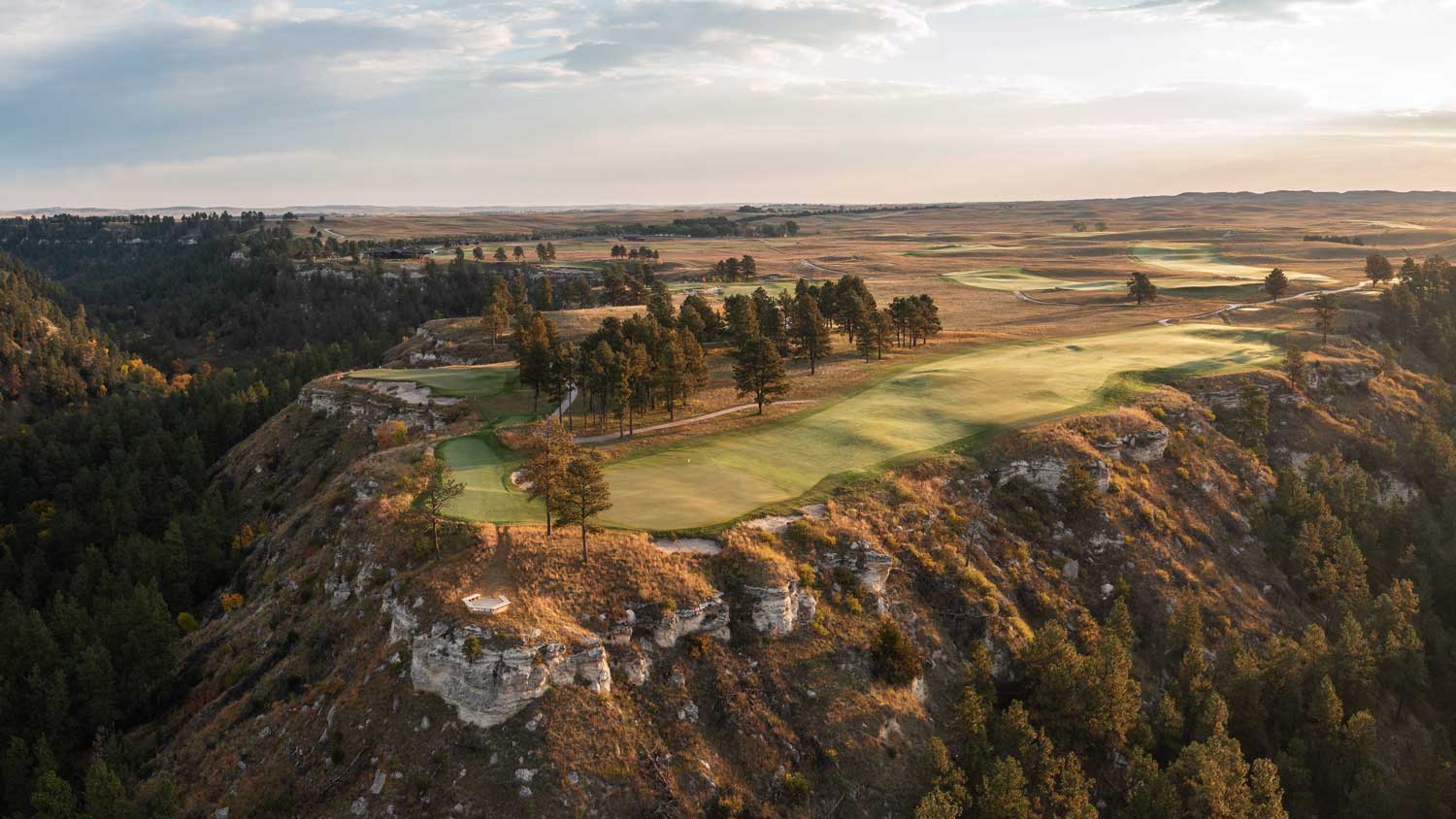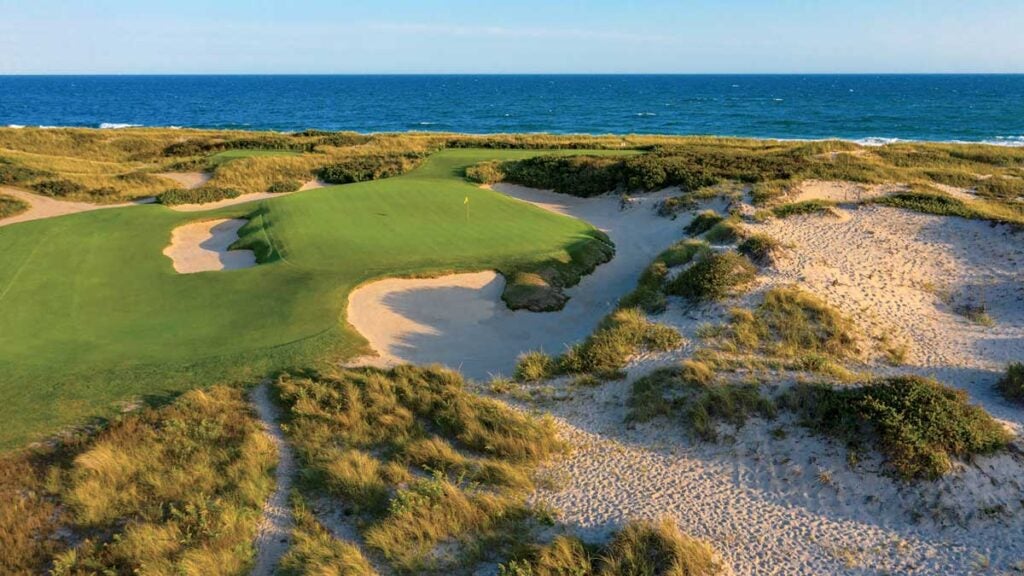GOLF’s 117 course panelists have voted! The result in our 2022-23 ranking of the Top 100 Courses in the U.S.: an eclectic mix of designs that favors diversity, sandy soil and a return to the Golden Age where enjoyment is the ultimate reward.
Methodology: How we rate courses
GOLF’s Top 100 Courses sorted by state
GOLF’s course rankings by region: Top 50 in Northeast | Top 50 in Southeast | Top 50 in Midwest | Top 50 in West
GOLF’s other course rankings: Top 100 Courses in the World | Top 100 Courses You Can Play | Top 100 Value Courses in the U.S. | America’s Best Municipal Courses | Top 100 in the U.K. and Ireland | Top 100 Short Courses in the World
Course descriptions below by Ran Morrissett, Josh Sens and Hayes Jackson. Images in revolving gallery above: Somerset Hills (No. 26): Jon Cavalier; CapRock Ranch (No. 59): Brian Oar; Essex County (No. 62): Patrick Koenig; Maidstone (No. 29): Larry Lambrecht.
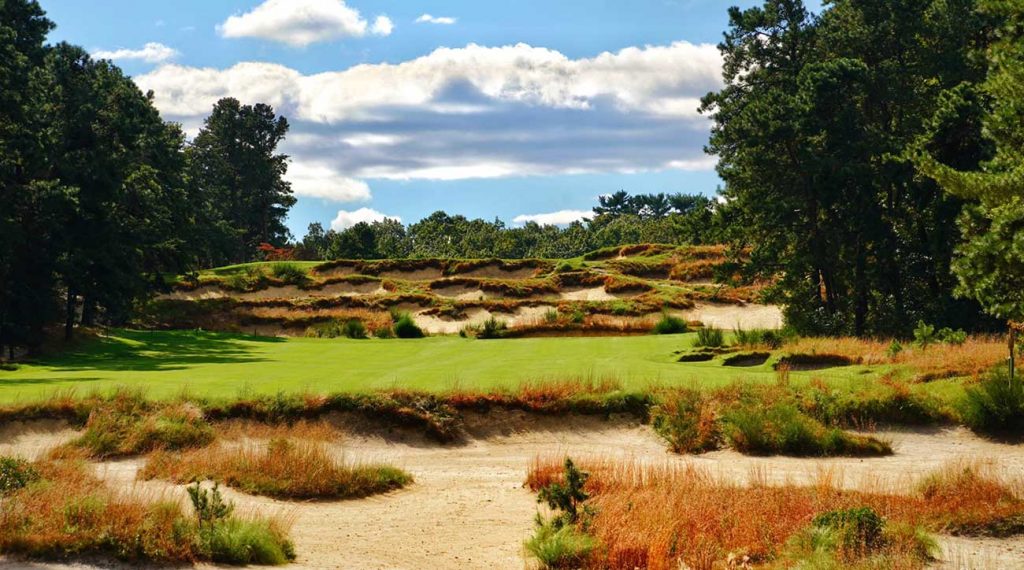
1. Pine Valley
Analyzing a golf course need not be complicated. One simple but effective way to judge a design is by the quality of the course’s property, its hazards and greens. Pine Valley excels at all three, with many contending it has the most formidable hazards and sophisticated green complexes in golf. Throw in a wonderful routing that hopscotches from one island of turf to the next across the rolling, sandy landscape and you have a course that hasn’t budged from the No. 1 spot for decades, meaning Pine Valley’s only benchmark is itself. (Photo: Jon Cavalier)

2. Cypress Point
It’s almost inconceivable that land this stunning was made available for golf. For the lucky few who get to play here, they enjoy one of the game’s most inspiring walks as Alister MacKenzie’s design effortlessly transports the player around the diverse property. The iconic par-3 16th, which extends into the churning Pacific, is the game’s most dramatic and photographed hole, but there are endless other highlights, from the forested portion to heaving dunes to its famed jagged coastline. MacKenzie extracted the best from the land in part by breaking the “rules” and having back-to-back par-5s on the front and back-to-back par-3s on the back. The drivable ½-par 9th is another standout with its angled green toward play. (Photo: Gary Lisbon)
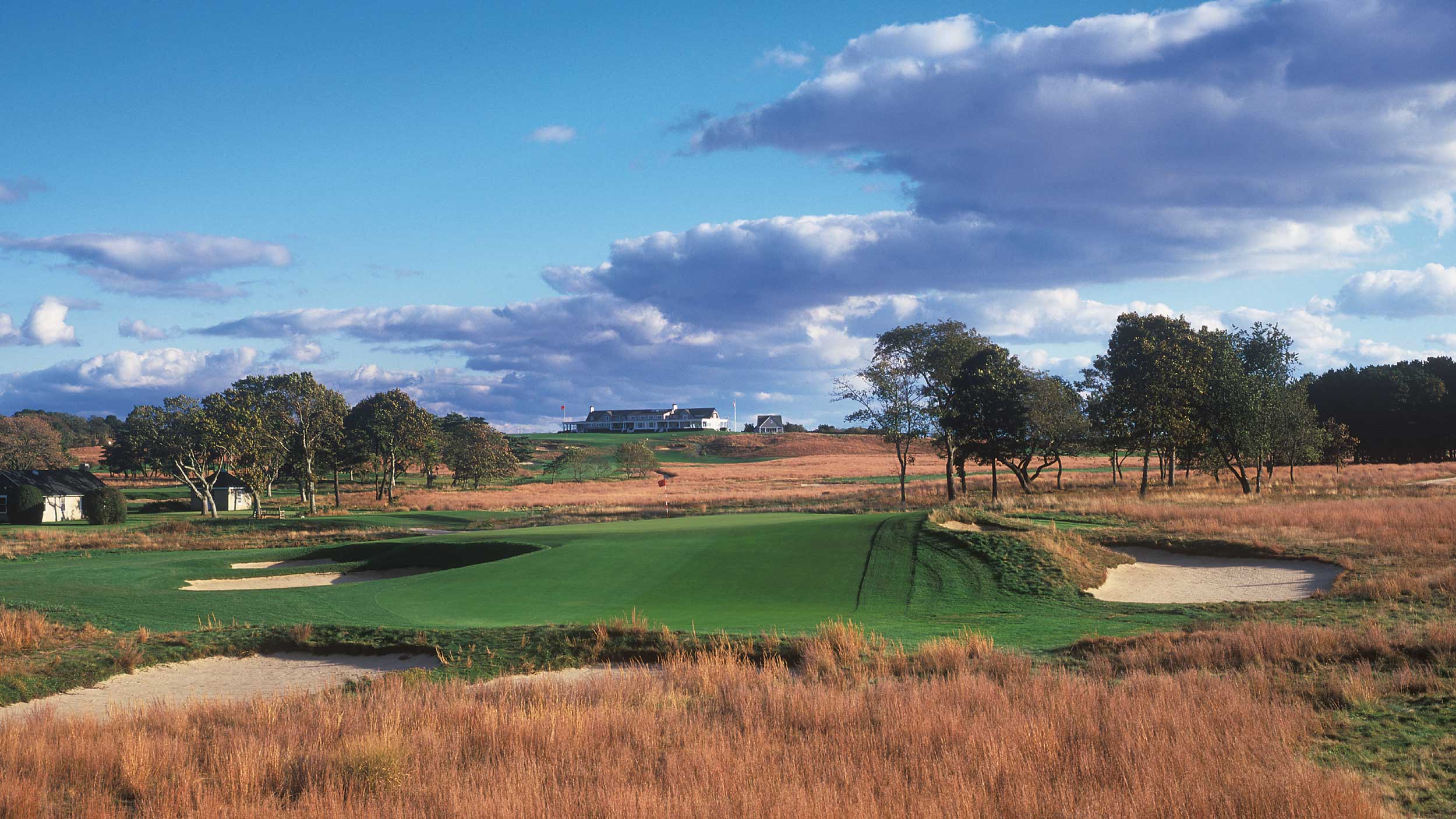
3. Shinnecock Hills
Venue for five U.S. Opens since 1986, most recently in 2018, this is William Flynn’s design masterpiece. Apart from being handed a magnificently spacious piece of land upon which to work, Flynn was given something else nearly as valuable: time. Work started in 1928 and the course didn’t open until 1931. True, the Great Depression began during construction but the grace with which the holes flow across the property is a tribute to the hands-on, slow-build process. (Photo: Joann Dost)

4. National Golf Links of America
NGLA, or “National,” as it’s known, brought Seth Raynor and C.B. Macdonald together for the first time and what they created still stands as a marvel of strategic design. Some of its template holes, including the Alps 3rd, the Redan 4th, the Short 6th and the Leven 17th, are arguably superior to their namesake holes in the United Kingdom that Macdonald copied. Legendary golf writer Bernard Darwin summed it up nicely when he opined, “The National Links is a truly great course; even as I write I feel my allegiance to Westward Ho!, to Hoylake, to St. Andrews tottering to its fall.” (Photo: William Tyler Smith)

5. Oakmont
No course thrives more on looking mean. Indeed, the beauty of Oakmont is how it doesn’t doll itself up, and yet to a purist the view from the crest of the hill on 15 is as breathtaking as any in the country. The barren landscape possesses few trees and no water, just drainage ditches that traverse the land. Daunting carries aren’t the issue either and the greens are huge, so what’s the big deal? The question is answered at the 1st, with a green that follows the natural contours and slopes away from the player. The club prides itself on the pace and firmness of its world-renowned putting surfaces, so let the beating commence! For a course known for its difficulty, what gets lost in the shuffle is the brilliance of its quartet of short par-4s at 2, 11, 14 and 17. (Photo: Gary Lisbon)
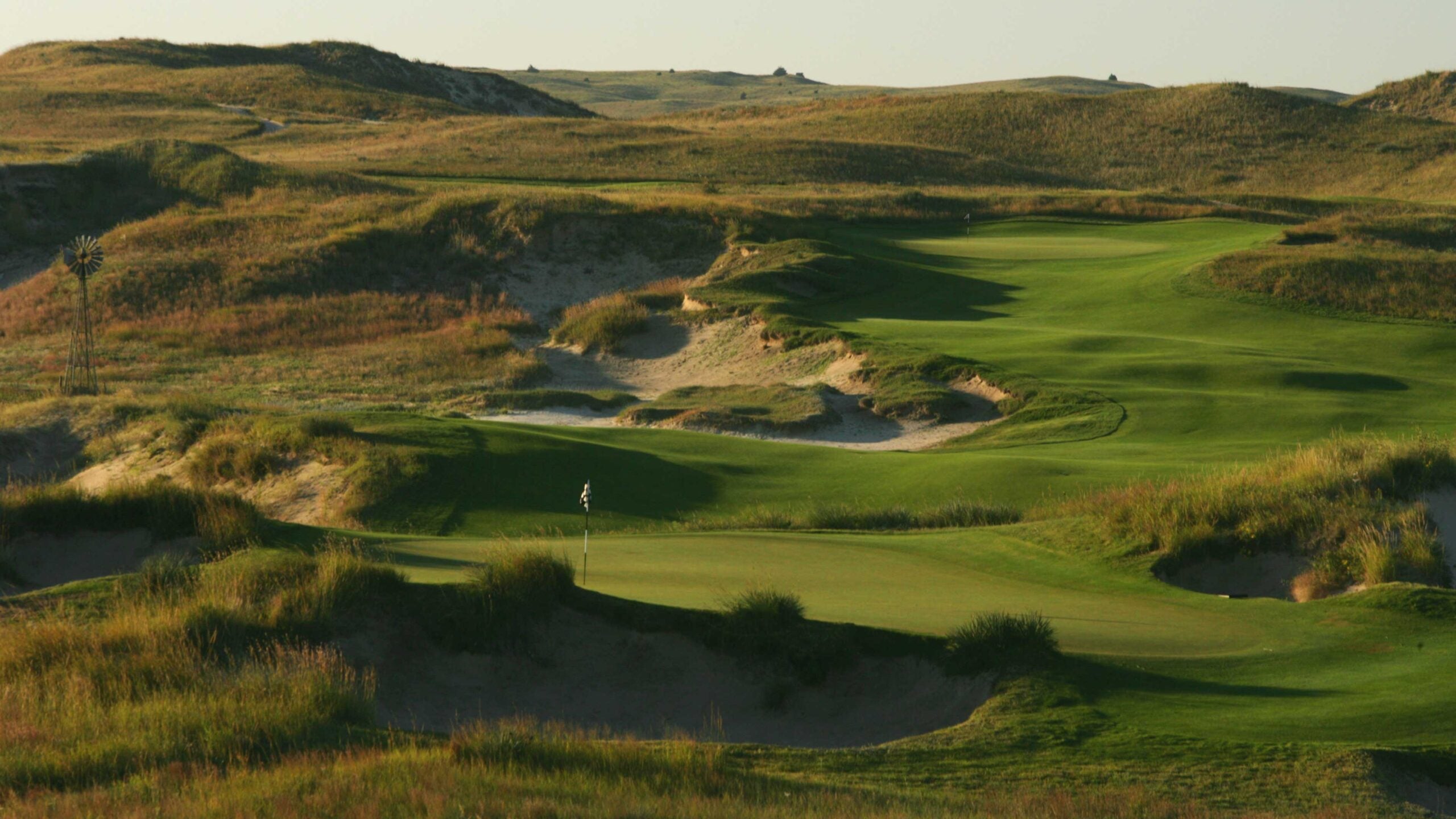
6. Sand Hills
Bill Coore and Ben Crenshaw moved teaspoons of dirt to construct the most natural, hew-to-the-land layout built since World War II. Rolling, sandy terrain, rippled fairways that were spared from a bulldozer, ever-present winds, wavy prairie grasses and gigantic blow-out bunkers create the sensation of being seaside in the middle of landlocked Nebraska. The design was immediately embraced, and the minimalist movement started in earnest, with this course arguably kicking off the second Golden Age. (Photo: David Cannon/Getty Images)

7. Augusta National
Augusta National is the vision of Bobby Jones and his chosen architect, Alister MacKenzie. Both intended for Augusta National to reflect the spirit and strategic options of the Old Course at St. Andrews, the course that they admired most. Nearly every hole at St. Andrews and Augusta National provides a safe route to the green and also a riskier one. The removal of trees down the right of 11 prior to the 2022 Masters was met with applause by design aficionados who hope that the club continues to restore width and playing angles. (Photo: Joann Dost)
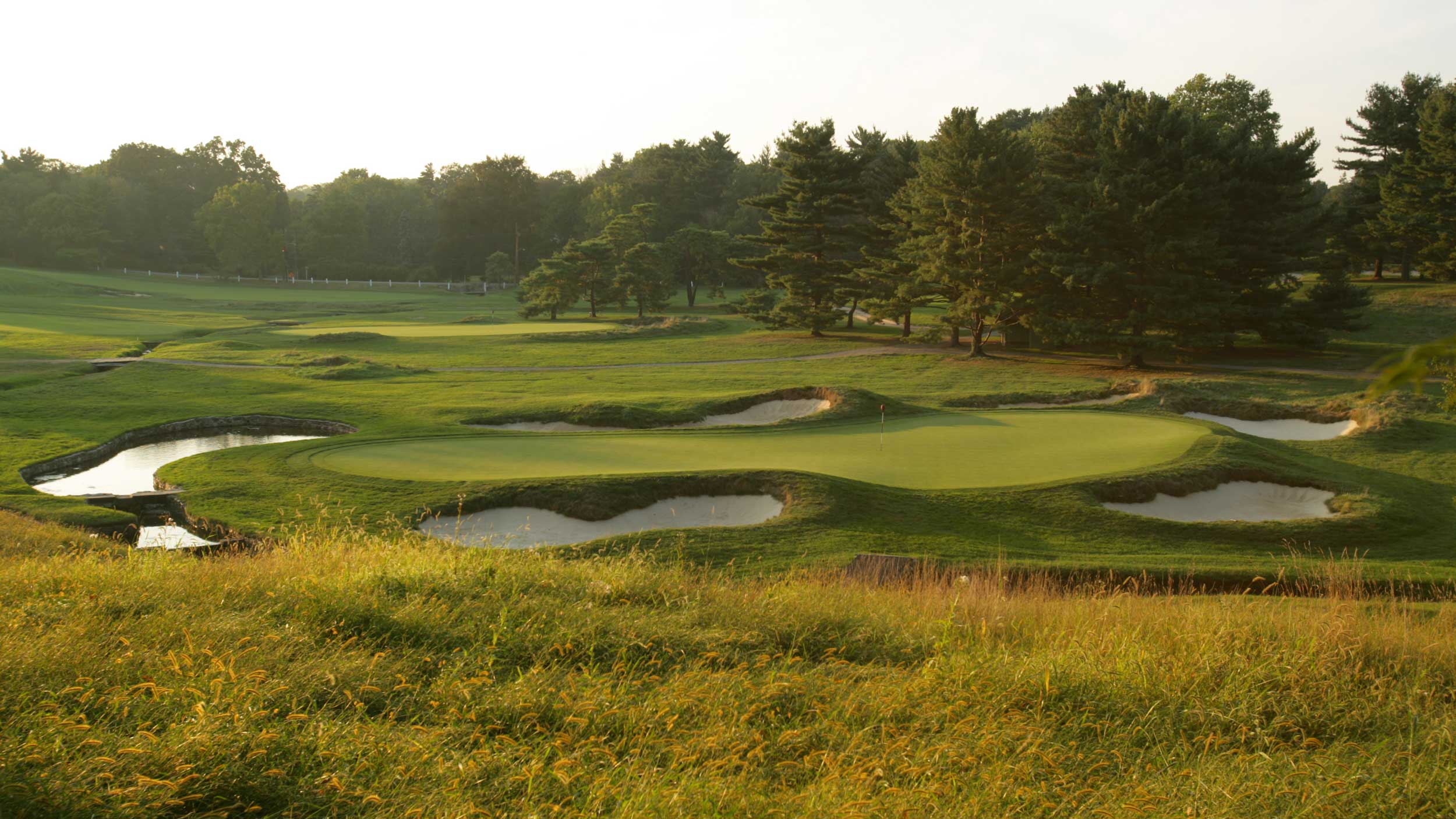
8. Merion (East)
What makes Merion so distinctive is its remarkable variety. Some par-4s are short, others are monsters with the delta being as much as 200 yards. One par-3 is tiny, at 115 yards; the others measure 236, 246 and 256. The famous par-4 11th, where Bobby Jones clinched the 1930 Grand Slam, is slashed by a creek, while the par-4 16th demands a shot over an abandoned stone quarry. In short, Merion has everything, including sub-air and irrigation systems that lend more control over the firmness and speed of the playing surfaces. The recently expanded greens have created a plethora of new hole locations around the greens’ perimeters, and the player’s chess match with the clever design is more intense than ever. (Photo: David Cannon/Getty Images)
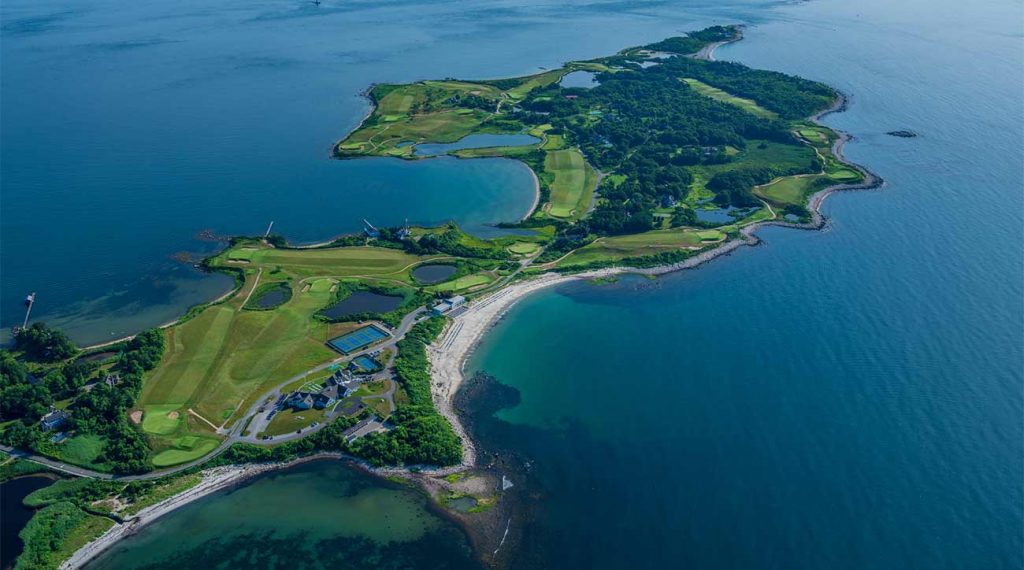
9. Fishers Island
Accessible by ferry or air, this exclusive retreat off the Connecticut coast is populated by the oldest of the Old Money crowd, many of whom still enjoy hoofing it. Why wouldn’t they, given the classic Seth Raynor design that tracks along the island’s northeast edge, the delightful tumbling terrain and the spectacular views of Long Island Sound. The 3rd, 4th and 5th are as intoxicating as any three-hole stretch on the eastern seaboard. Fishers joined our World Top 100 at No. 73 in 1989 — and has never looked back. (Photo: LC Lambrecht)
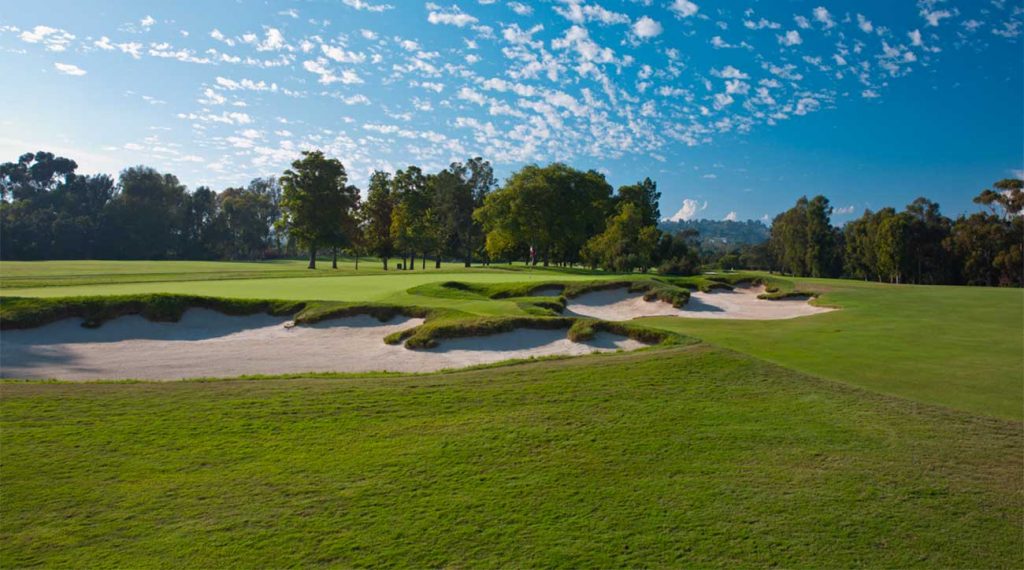
10. Los Angeles (North)
Gil Hanse and team restored George Thomas’s classic to perfection in 2010. Bunkers were reshaped and relocated, fairways widened and a natural barranca was brought back into play as a strategic hazard. Arguably America’s premier urban design, LACC North hosted the 2017 Walker Cup and design aficionados can’t wait for the 2023 U.S. Open. As Hanse says, “The course enjoys a perfect sense of place and balance.” Two shotters like 3 and 10 will challenge the players with uneven fairway lies but its superlative collection of one-shot holes will also prove quite a test, even with ball in hand and a perfect lie/stance. (Photo: LC Lambrecht)
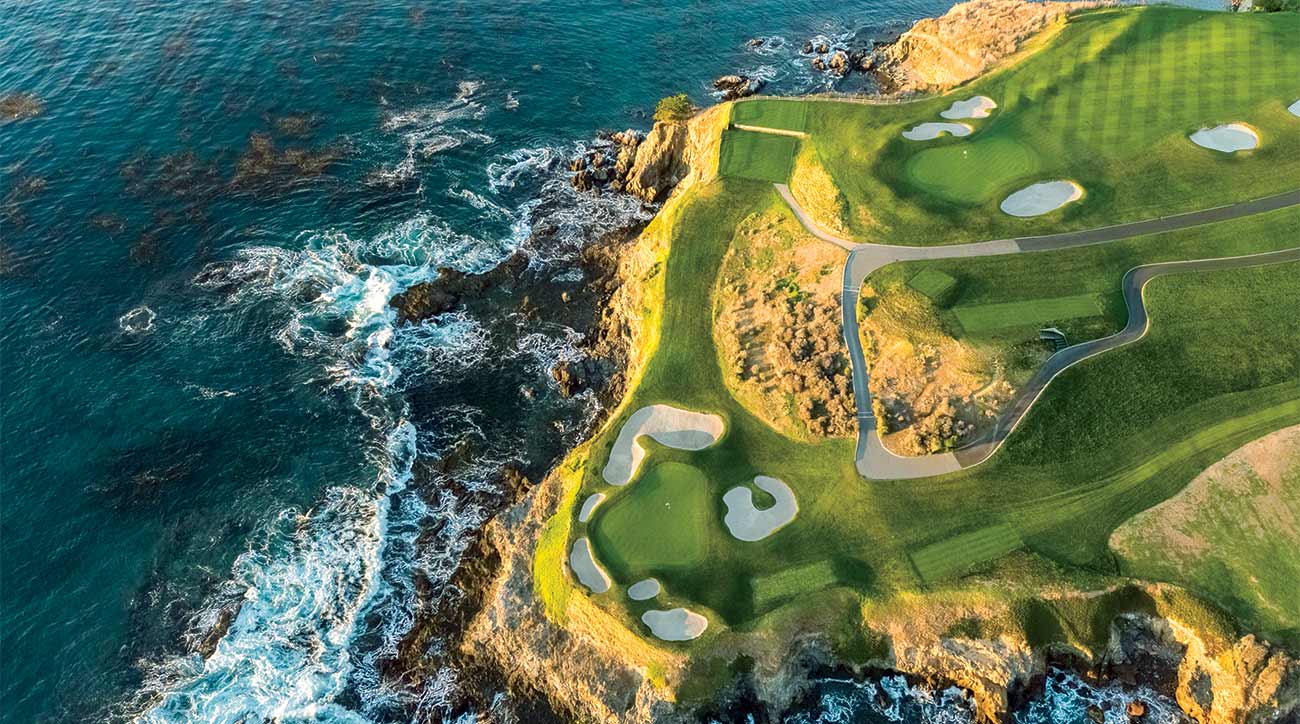
11. Pebble Beach
The first great American public oceanside course, Pebble benefits from an ingenious routing that brings the player to the ocean’s edge, then onto much higher ground, before returning to the cliffs for the climactic final two holes. Even today, with gobs of world class courses having been built in the past 100 years, no more thrilling, spectacular stretch exists than holes 4 through 10. Additionally, does any walk compare with that final stroll up the iconic par-5 18th as it curves left around Carmel Bay?! Hard for a course this well known to exceed first-time expectations — but it does. (Photo: Evan Schiller)
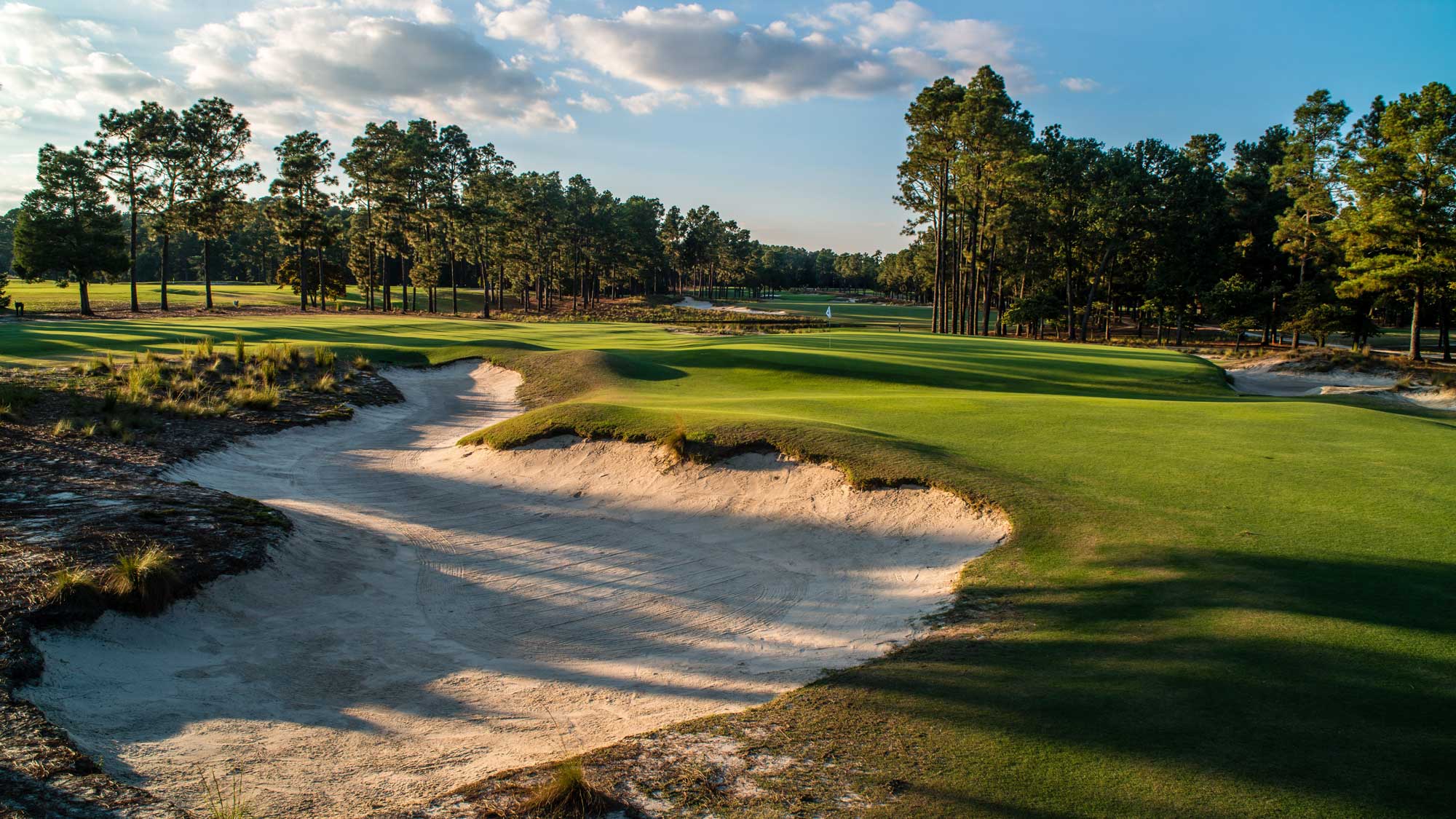
12. Pinehurst (No. 2)
Donald Ross’s chef d’oeuvre rolls spaciously through tall longleaf pines in the Carolina Sandhills with holes culminating with legendary inverted-saucer greens. For the 2014 U.S. Open, a Coore-Crenshaw restoration brought back the tawny-edged fairways and native areas last seen in the 1940s. Even with no rough, the runner-up could muster only one under par over four rounds. After the Women’s U.S. Open was played the following week, a powerful message had been broadcast around the world from the home of American golf about the virtues of width, short grass and great greens. This is one of a handful of courses that presents resort guests with a fun test on which they won’t lose a single ball, and a week later can be ready to host a U.S. Open. That’s the flexibility of short grass — and Ross’s design genius. (Photo: Joann Dost)

13. Chicago GC
One of the five founding members of the United States Golf Association in 1894, Chicago Golf was the site of the nation’s first 18-hole course; it also was the first course outside of the Northeast to play host to the U.S. Open. Seth Raynor retooled his mentor C.B. Macdonald’s course in 1923 and not much has changed since as its slew of exemplary template holes make it just as relevant today as it was in the hickory era. Holes 1 through 4, which include a Road and Biarritz template, represent one of the game’s most testing starts. (Photo: John and Jeannine Henebry)

14. Riviera
The value that an architect provides is highlighted here in technicolor. Built in a narrow canyon, there was no reason to hold high hopes for this course. Yet what emerged, courtesy of George Thomas and Billy Bell, is one of the game’s strategic design marvels. Together, the designers took bunker configuration and angled greens to new heights in the 1920s. As proof of their magical skills, look no further than Riv’s 311-yard, par-4 10th. Thanks to the inspired positioning of the bunkers and the angled green, options abound on how to card a big number on this tiny hole. Thomas’s famous quote — “strategy is the soul of the game” — manifests itself at Riv. (Photo: Patrick Koenig)
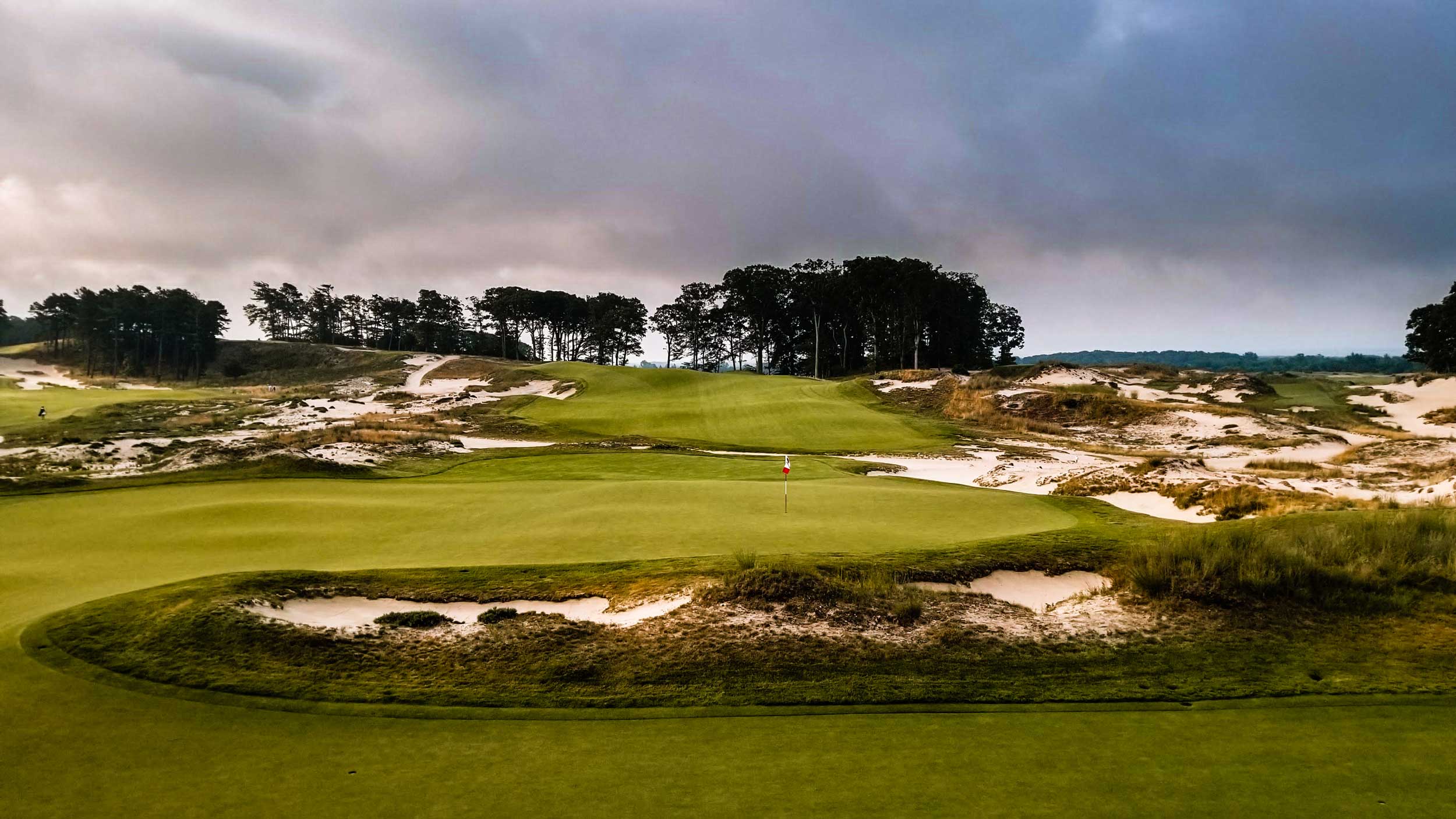
15. Friar's Head
Tree-dotted dunes, open meadows and bluff-top views of Long Island Sound highlight play at this 2003 Bill Coore-Ben Crenshaw design that Phil Mickelson has called his favorite modern course. Holes such as the par-5 14th call to mind an East Coast version of Cypress Point. Constant refinements, no matter how small, have Friar’s Head as dialed-in as any course in the country. (Photo: Channing Benjamin)
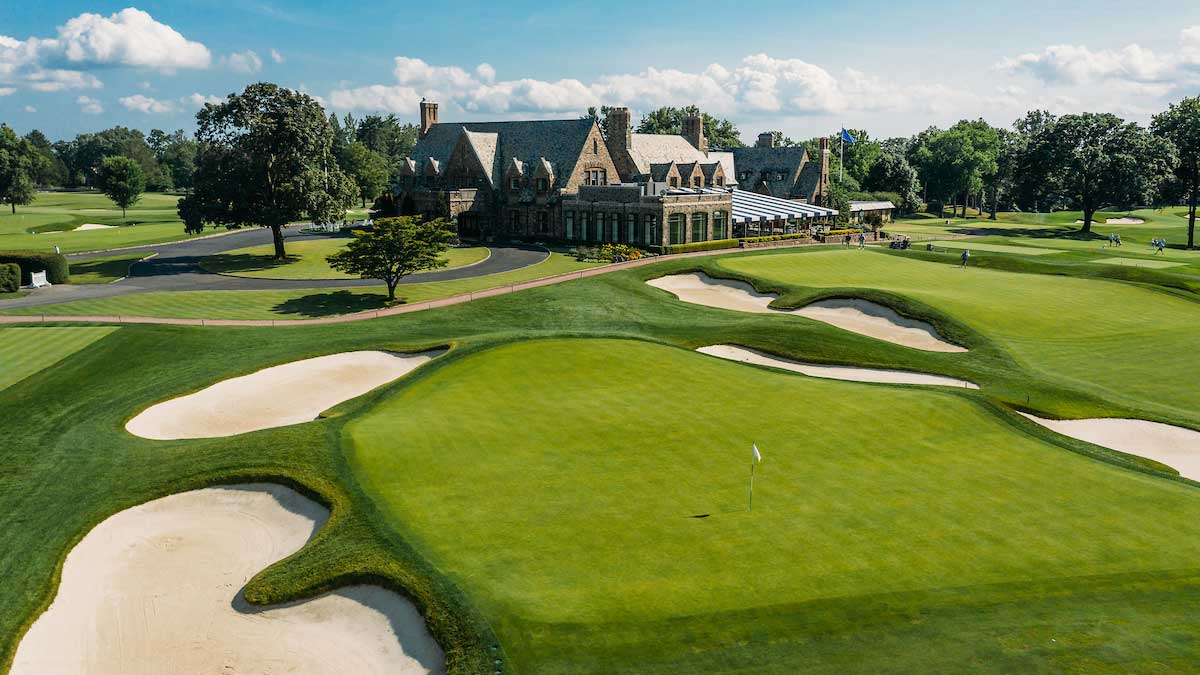
16. Winged Foot (West)
Hale Irwin survived the 1974 “Massacre at Winged Foot” U.S. Open to win at seven over par. Geoff Ogilvy didn’t fare much better in 2006, when his five-over total took home the trophy. Mark Brooks, 1996 PGA champion, summed up this Golden Age A.W. Tillinghast design this way: “There are probably six hard holes, six really hard holes and six impossible holes.” Frighteningly contoured, pear-shaped greens, cavernous bunkers and a procession of rugged par-4s define the trouble. On a “difficulty” scale of 1 to 10, Jack Nicklaus once rated the West course a 12. That said, Gil Hanse’s astonishing green expansion has brought back an exciting element of creativity with which few parkland courses can contend. (Photo: Christian Hafer)

17. Pacific Dunes
This unconventional Tom Doak treasure catapulted him into the spotlight at the turn of the century. A slew of par-4s on the first nine gives way to a 3-3-5-4-3-5 start to the second nine. Only Mike Keiser would have approved of such an unusual par sequence and this course helped modern architecture break free from certain design shackles that had constrained designers over the past five decades. Scattered blow-out bunkers, gigantic natural dunes, smartly contoured greens and Pacific panoramas complete Doak’s first masterpiece. (Photo: Evan Schiller)
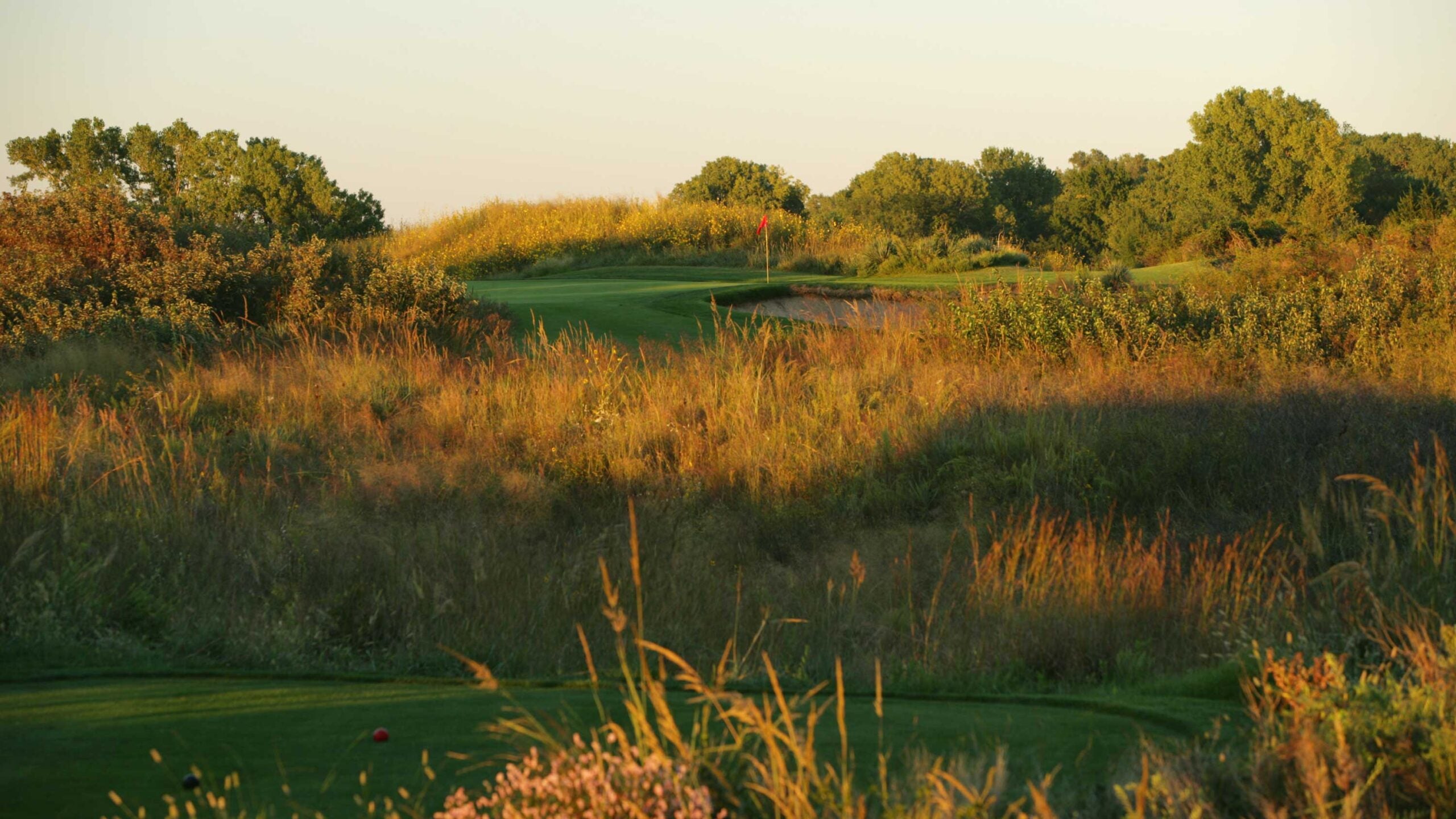
18. Prairie Dunes
After weeks of tromping around the yucca-choked sand hills of Hutchinson, architect Perry Maxwell proclaimed, “There are 118 good golf holes here. All I have to do is eliminate 100 of them.” All that's missing is an ocean at this linksy-looking layout that played host to the 2002 U.S. Women's Open (Juli Inkster) and 2006 U.S. Senior Open (Allen Doyle). What a delight that the Maxwells got to work with this special site as their soft touch on the land is a must-study for any architect. (Photo: David Cannon/Getty Images)

19. Oakland Hills (South)
Through the years, Oakland Hills — the famed "monster" that Ben Hogan slayed in the 1951 U.S. Open — became long, narrow and hard, which fit the descriptive of other American championship courses. That was never meant to be the course's fate — this was Donald Ross’s parkland thought-provoking magnum opus. Happily, all of Ross’s glories, and then some, were brought back in 2020 when Gil Hanse, Jim Wagner and team restored Ross’s width and playing angles. The greens were expanded a whopping 35 percent, and the bunkers themselves were restored to their previous immense scale. Fescue grasses blow in the wind and the undulating site, no longer hidden by trees, optimizes parkland golf’s regal offering with some of its greens like the 1st and 14th capable of stealing your breath. (Photo: LC Lambrecht)

20. Crystal Downs
Because of its remote location, Crystal Downs was once overlooked but that changed when Tom Doak introduced the course to Ben Crenshaw in the 1980s. A combination of strong breezes off Lake Michigan, thick fescue roughs, undulating terrain and fiendishly contoured greens make this one of the more difficult Top 100 courses relative to its par of 70. Measuring just under 6,600 yards, monster length is not required when you have greens this good. (Photo: Gary Kellner/Dimpled Rock)

21. Seminole
Arguably the finest site on which Donald Ross ever worked, the course plays along and between two main dune lines, and Ross made the most of the opportunity with holes continually tacking in different directions. The club prides itself on its firm playing surfaces, which were on full display during the 2021 Walker Cup. Some grouse that the course’s reputation is built on the club’s exclusivity, which is unwarranted given that standout holes abound, including the 4th, 6th, 13th and one of the game’s finest finishing three-hole stretches. (Photo: Patrick Koenig)
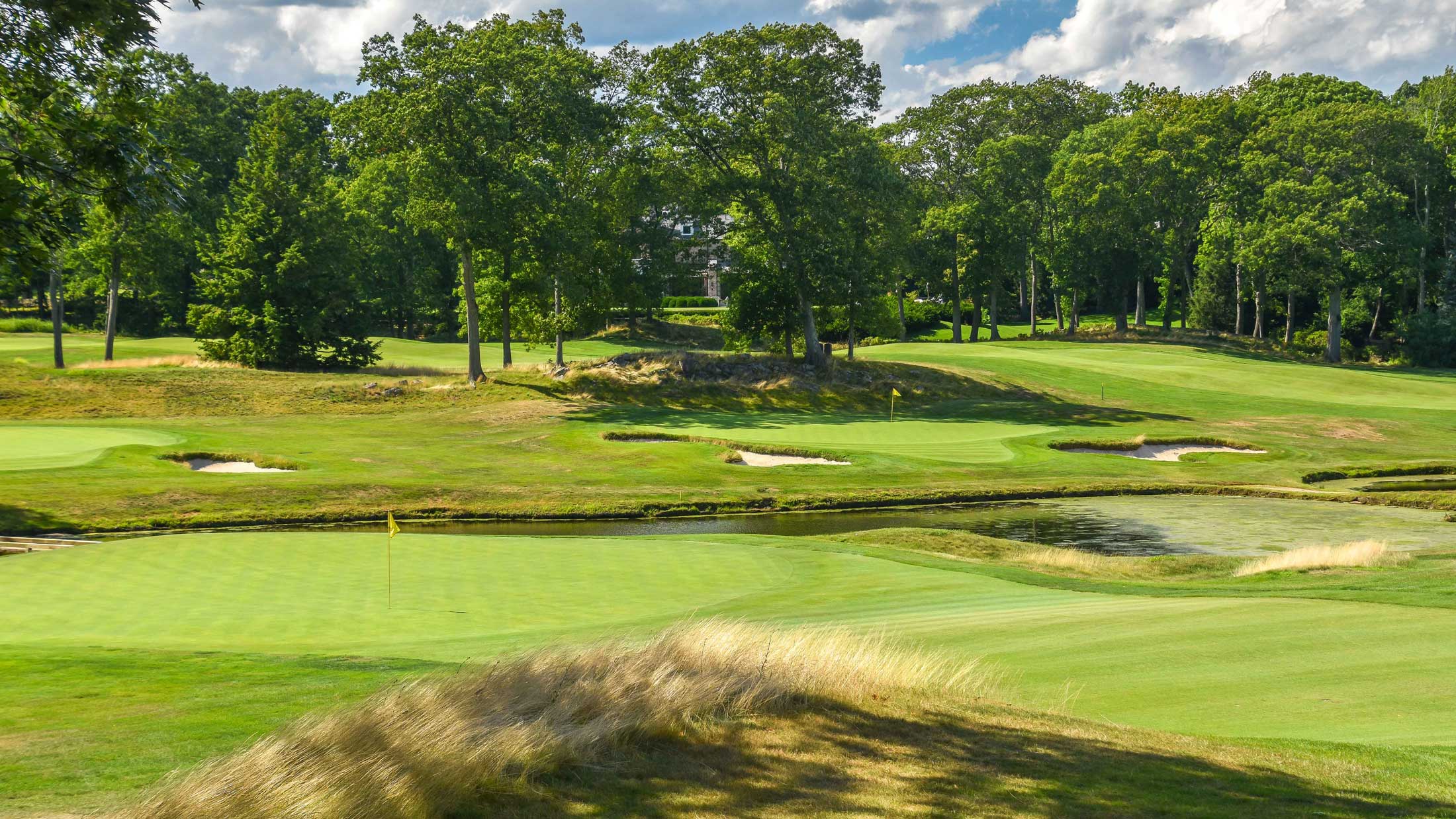
22. The Country Club (Clyde/Squirrel)
A Boston Brahmin society haunt for more than 125 years, this tree-lined design has played host to four U.S. Opens and the famous 1999 Ryder Cup. Its configuration of holes for the 2022 U.S. Open proved to be its best composite course yet out of its 27 holes but note: GOLF ranks the Clyde/Squirrel course that its members play on a regular basis. That’s the configuration of holes that was used for the 1913 Open when local lad Francis Ouimet stunned the big, bad Brits. Its old-school features include cross hazards and medium-size greens. The field at the 2022 U.S. Open was reminded that there is no substitute for hitting fairways and greens as thick rough remains a component of the course’s challenge just as it was in 1913. (Photo: Patrick Koenig)
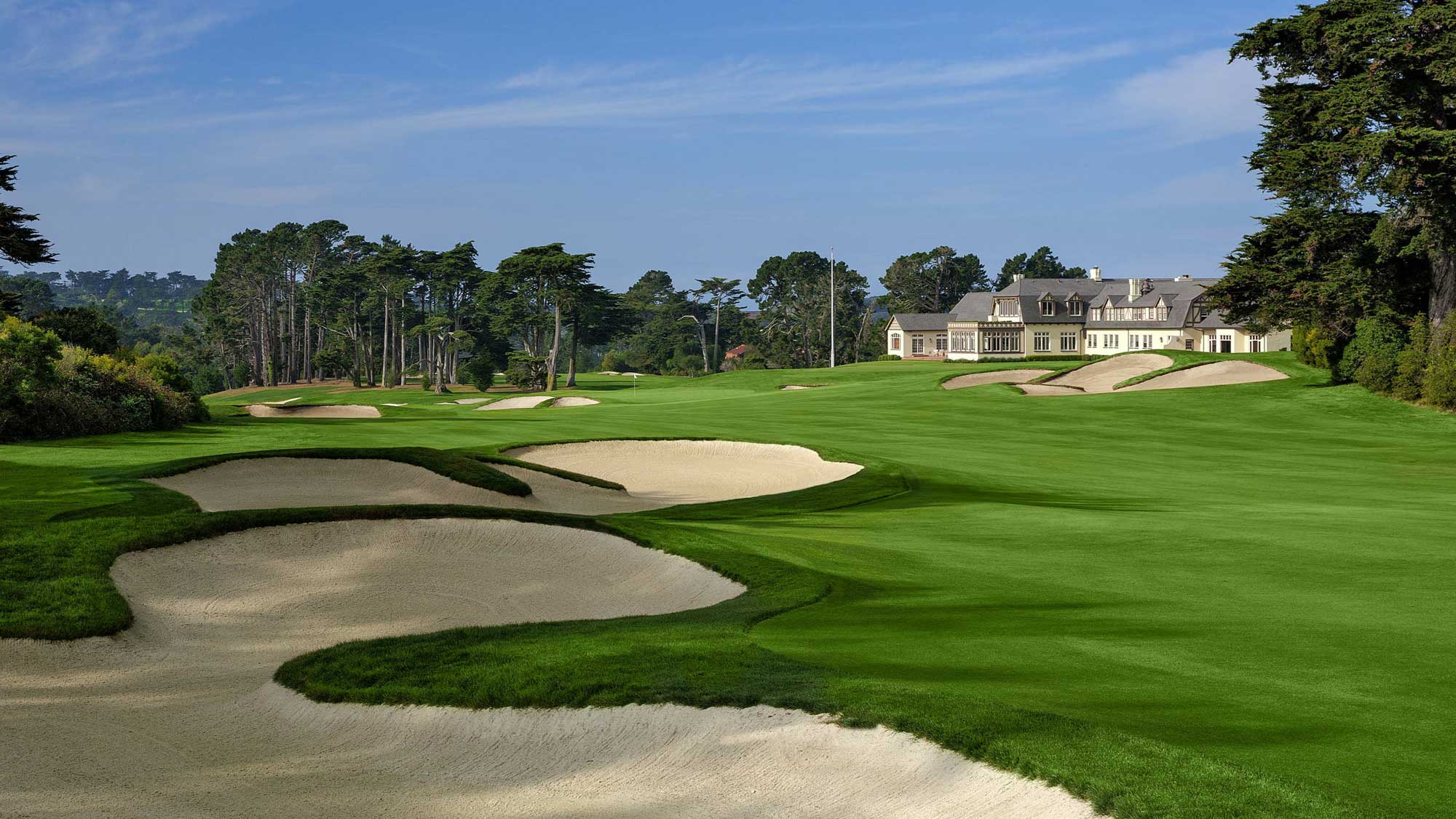
23. San Francisco
A.W. Tillinghast built his most artistic collection of bunkers at this low-key Bay Area hideaway that avoids publicity as steadfastly as its neighbor the Olympic Club embraces it. Known as the Duel Hole, the drop-shot par-3 7th may be the course’s most famous hole, but its par-4s, including the 2nd, 3rd, 10th and 12th, are the real headliners. (Photo: Courtesy SFGC)

24. Southern Hills
Site of three U.S. Opens and a quintet of PGA Championships, this Depression-era Perry Maxwell design features holes that gracefully flow across a plot of undulating ground perfectly suited for golf. For decades, the land was smothered underneath a canopy of trees but Keith Foster and then Gil Hanse have opened up the property for all to admire. Gone too are the clean-edged bunkers that never looked at home on a Maxwell design. Raves all around for how this course has evolved this century, as demonstrated by the exciting 2022 PGA Championship won by Justin Thomas. (Photo: Gary W Kellner)
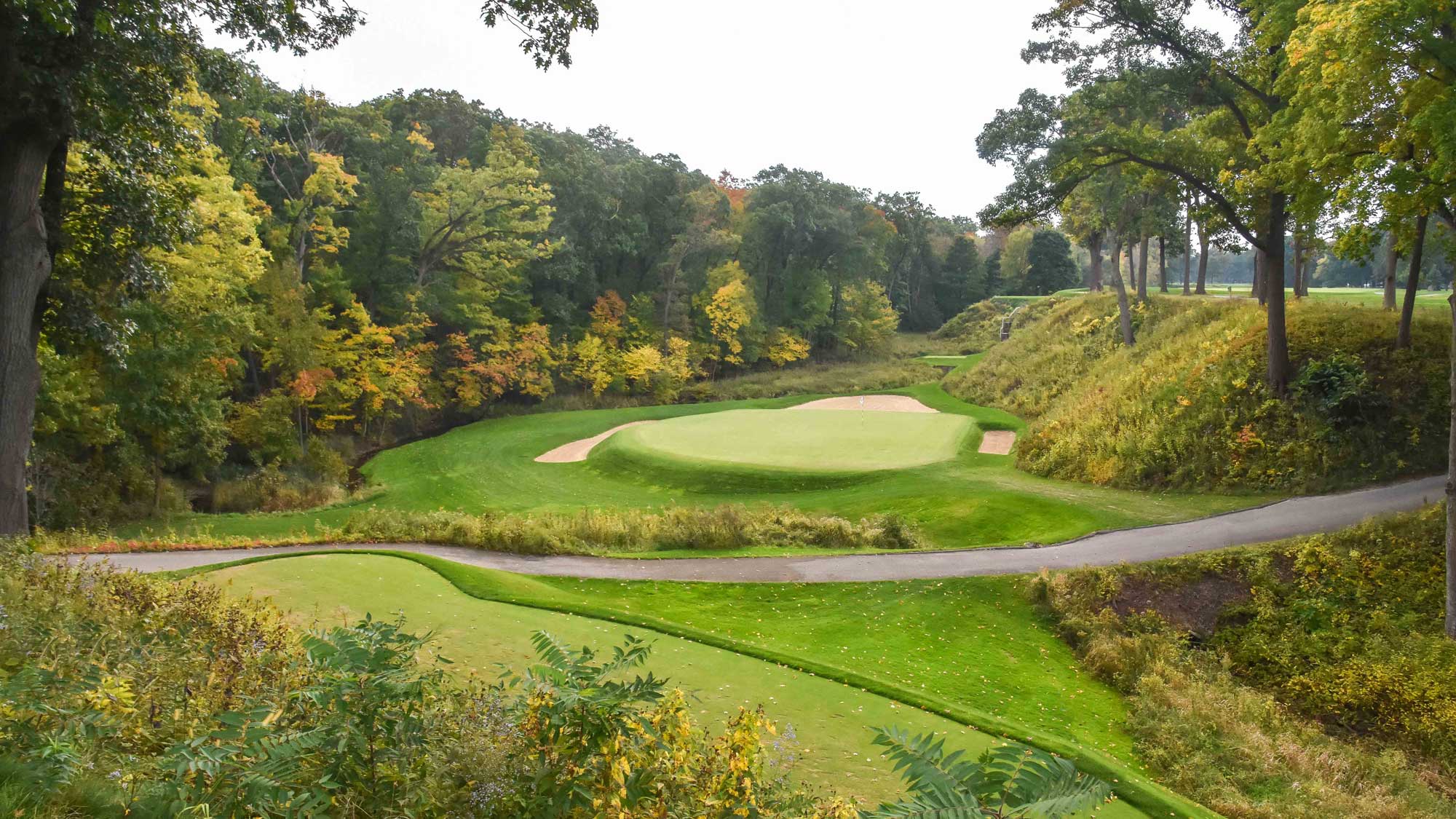
25. Shoreacres
Steep ravines affect play throughout Shoreacres’ famed stretch of holes from 10-15. The rest of the property features more modest topography but you are unlikely to notice that fact as the expansive greens offer such interesting targets. Ironic for an architect who built template holes but the best hole on this Seth Raynor design may well be the thoroughly original risk-reward 520-yard par-5 15th, which doglegs left, over and around a ravine. (Photo: Patrick Koenig)
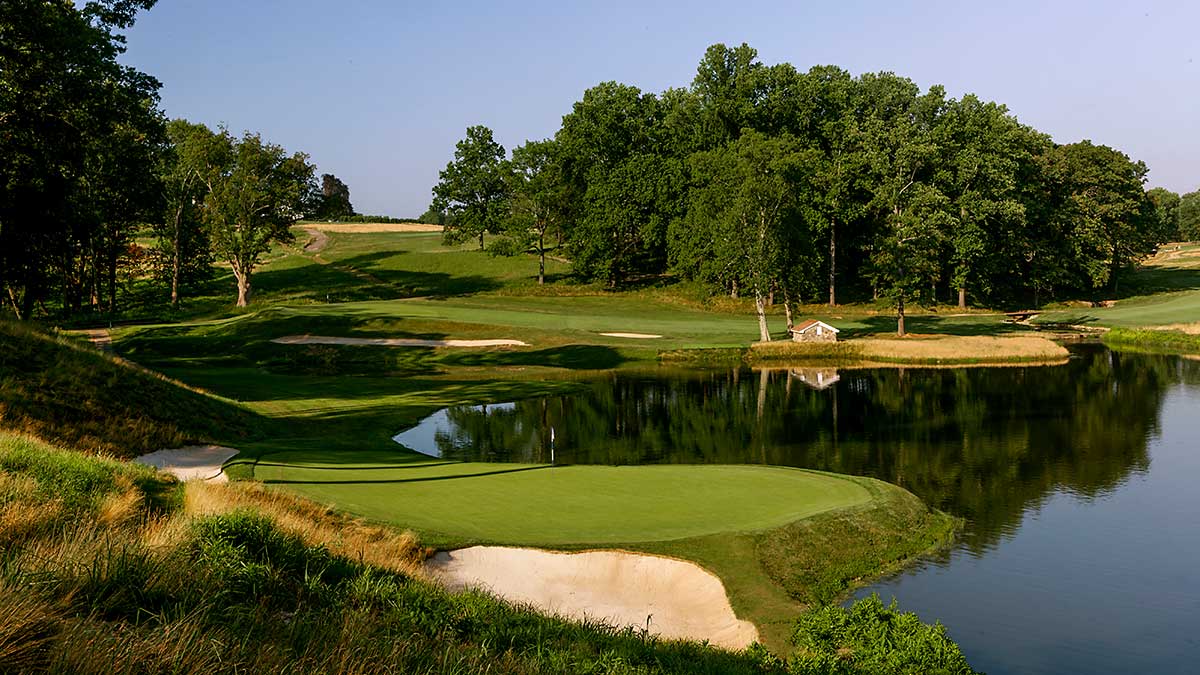
26. Somerset Hills
Thanks to a 25-year-long restoration effort with meticulous attention to detail, Somerset Hills has reached the point where some trumpet it as A.W. Tillinghast’s finest design for regular play. Its two nines are diverse — the first is on more open land while the second jumps into the woods where Tillinghast incorporated natural water features to perfection. Tillinghast’s time in Scotland manifests itself at such holes as the Redan 2nd and the par-5 9th with its attractive cross hazard. A die-hard New Yorker remarked, “It’s enough to make one want to live in New Jersey.” (Photo: Russell Kirk)
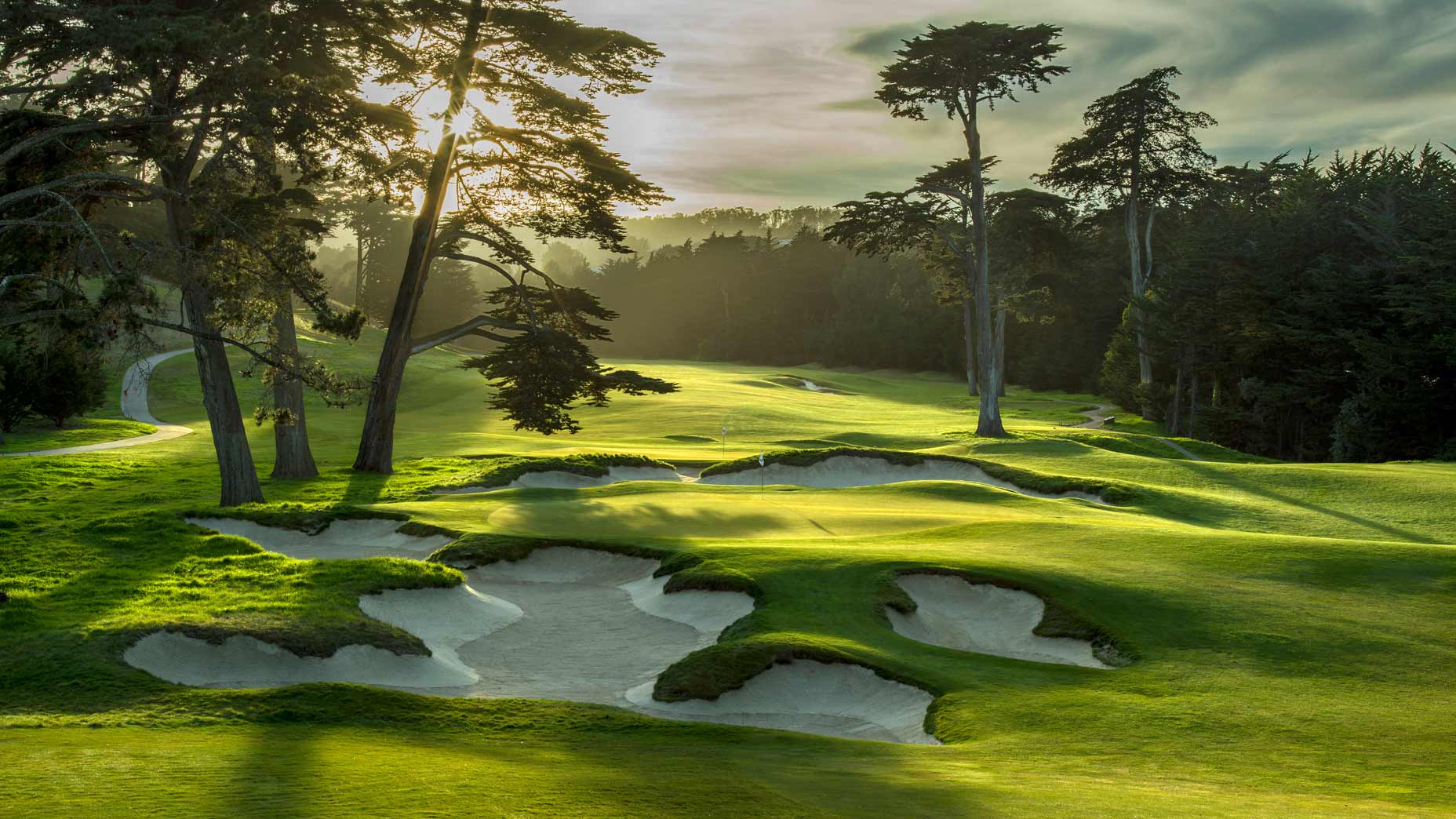
27. California Golf Club of San Francisco
For most of its 80-year history, the Cal Club, as locals call it, served up a tight though well-regarded course, enhanced by its association with Ken Venturi. Following a 2008 Kyle Phillips re-do that was part restoration and part redesign, many feel this private course is equal to any in California north of Cypress Point. Situated on the side of a hill, Cal Club is guaranteed to catch any wind that is about. Add in fescue fairways and the site’s broad slopes and you have a course whose asks change daily. Even in calm conditions, the mix of short grass, sprawling bunkers and cypress trees provide constant photo opportunities. When you discover the design plays as good as it looks, you have something special. (Photo: Evan Schiller)
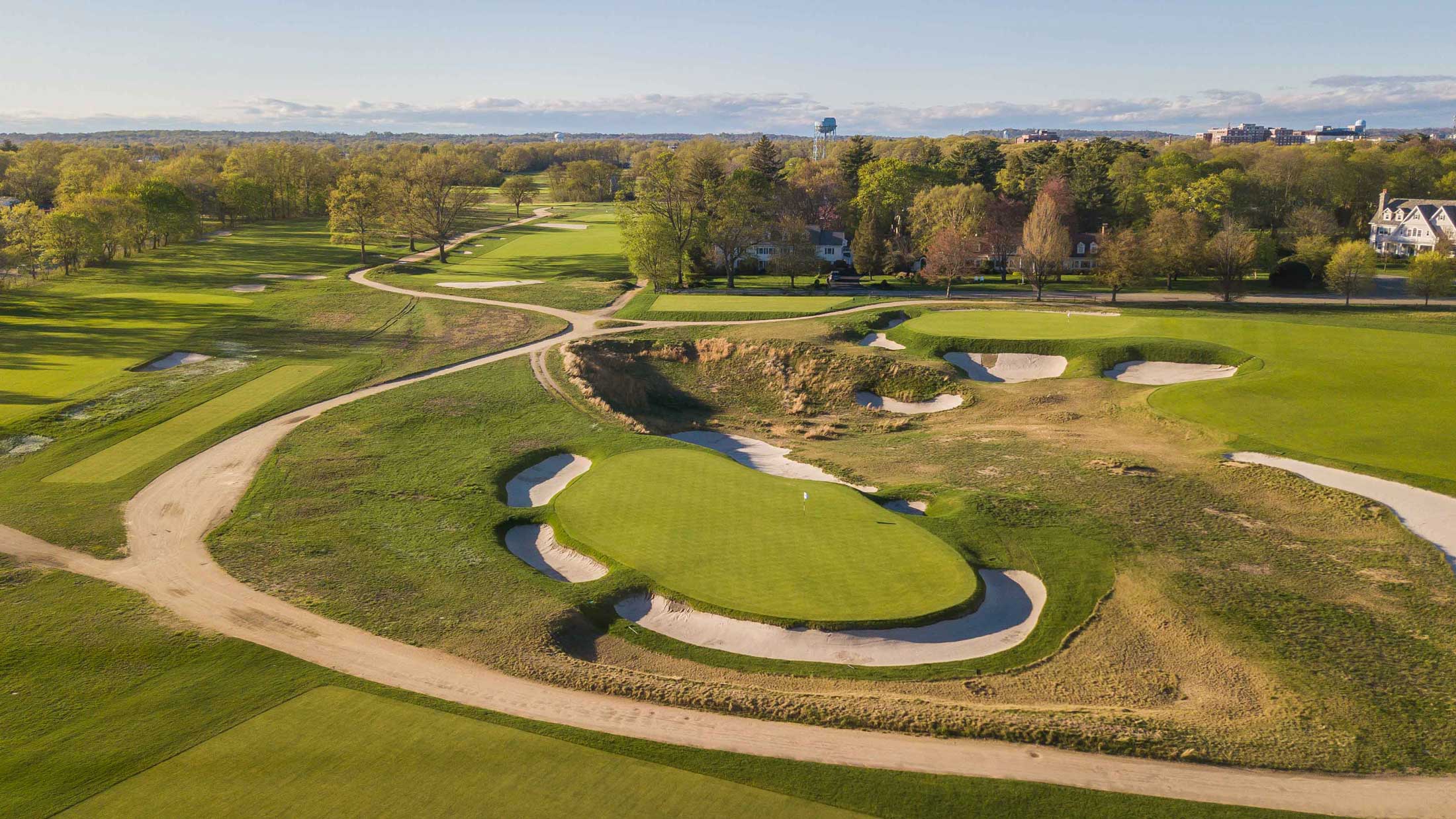
28. Garden City
Devereux Emmet and Walter Travis share credit for this old-school design that plays across Hempstead Plain on Long Island. The water is 10 miles both north and south, so sea breezes are a frequent companion. Laurie Auchterlonie won the 1902 U.S. Open here with record scores, owing to the debut of the longer, more durable Haskell ball. Garden City’s tilted greens, like the 10th and 15th, are lay-of-the-land architecture at its highest form. To understand what it means to “get the most from the land,” study the small parcel around the clubhouse that contains the 1st, 2nd and 18th holes, each stellar in its own right. (Photo: Patrick Koenig)
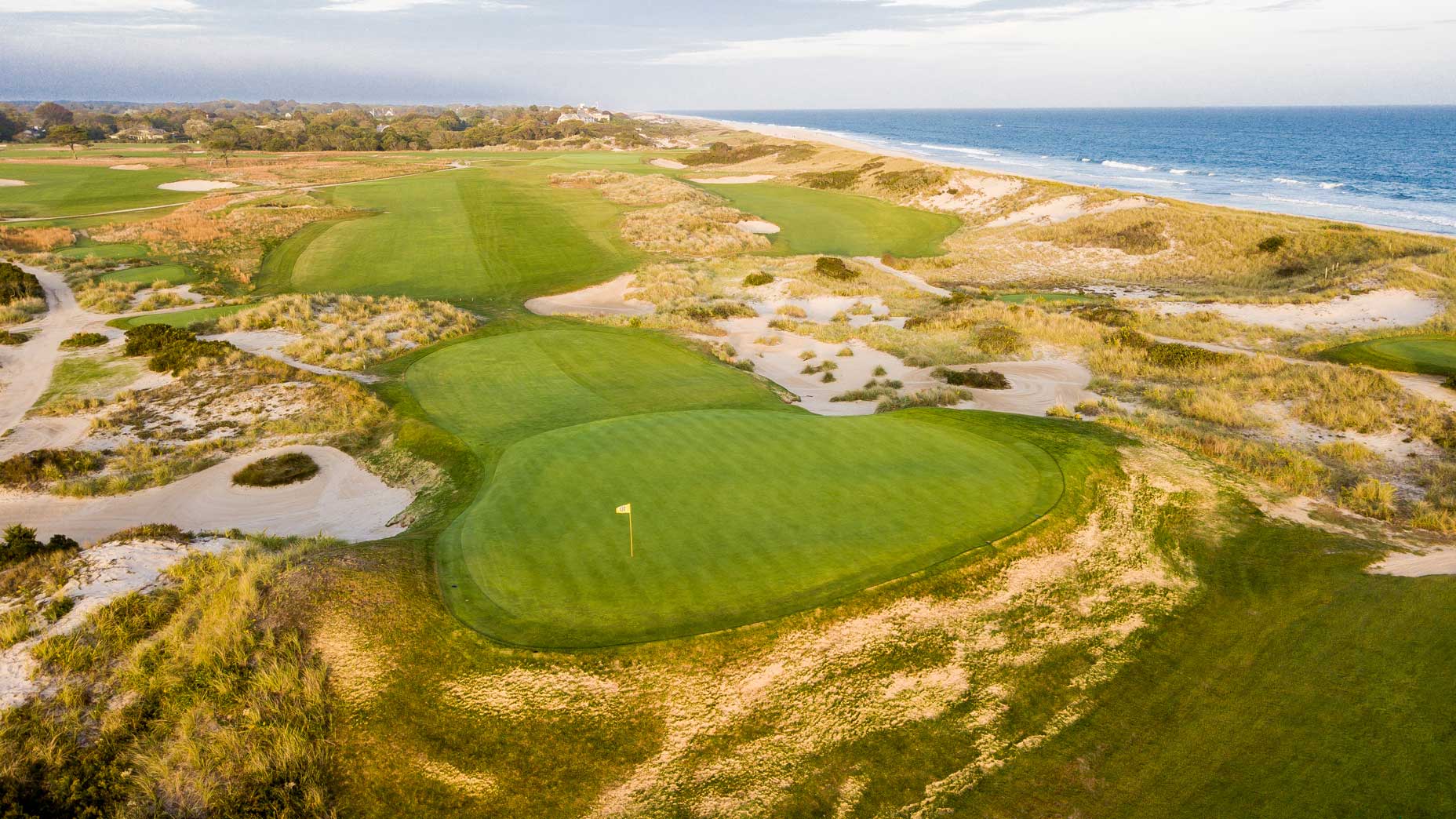
29. Maidstone
Maidstone’s glorious edge-of-the-Atlantic location is once again fully evident, thanks to a recent restoration by Coore & Crenshaw. Maintaining coastal dunes is an art form: expose too much sand and it blows away; cover it up and you lose a sense of place. Maidstone has struck the perfect balance. Adding to the pleasure of its romantic location is an exceptional set of Willie and John Park greens, many of which feature dramatic false fronts. Maidstone is a dream course to play regularly, in part because its asks change daily with the weather. (Photo: Patrick Koenig)
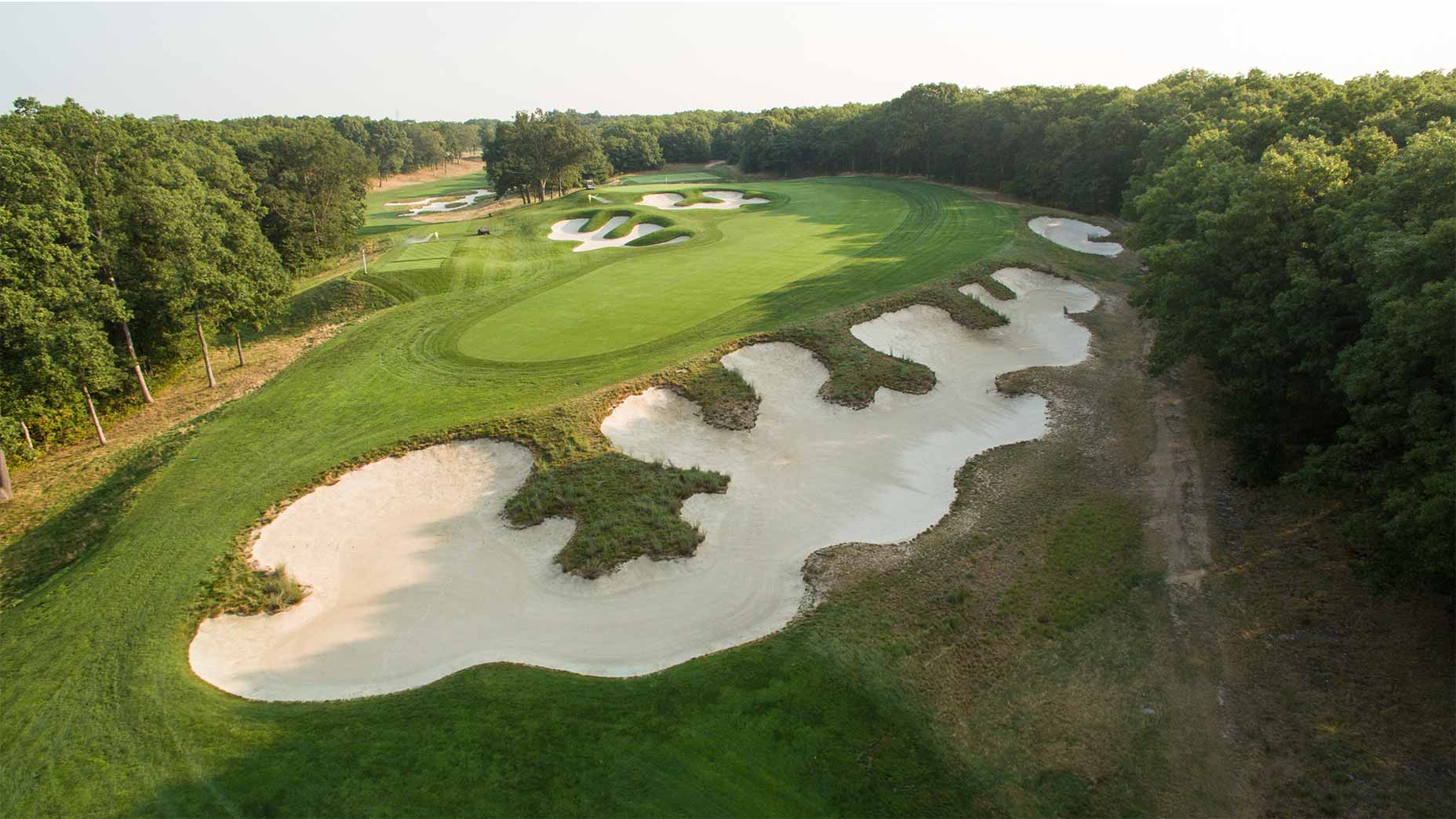
30. Bethpage (Black)
The Black intimidates golfers with a sign at the 1st tee that recommends the course “only for highly skilled golfers.” Among them? Tiger Woods, who won the 2002 “People’s Open,” as that U.S. Open came to be known. Woods was the only golfer to break par for 72 holes, owing to rugged, uphill par-4s, massive bunkers and the wrist-fracturing rough found on this Rees Jones-restored A.W. Tillinghast layout. The Black is one of the great routings, highlighted by the masterful way Tillinghast placed the fairways and greens from the 2nd hole in a valley all the way through the dogleg left 9th. The par-5 4th and its iconic cross-bunkering is a world-beater. (Photo: Getty Images)

31. Ballyneal
Founding a private club in a remote destination is not without peril and it is reasonable to expect a club to take some time find its footing. Now well in its second decade, Ballyneal enjoys its finest playing conditions since opening. Fescue fairways help the ground-game options flourish as balls release across the rumpled ground. Often on a Tom Doak course, the best way to get a ball close to the hole requires both imagination and creativity. That’s true in spades here as players delight in finding creative ways to use banks and punchbowl features.
(Photo: Evan Schiller)
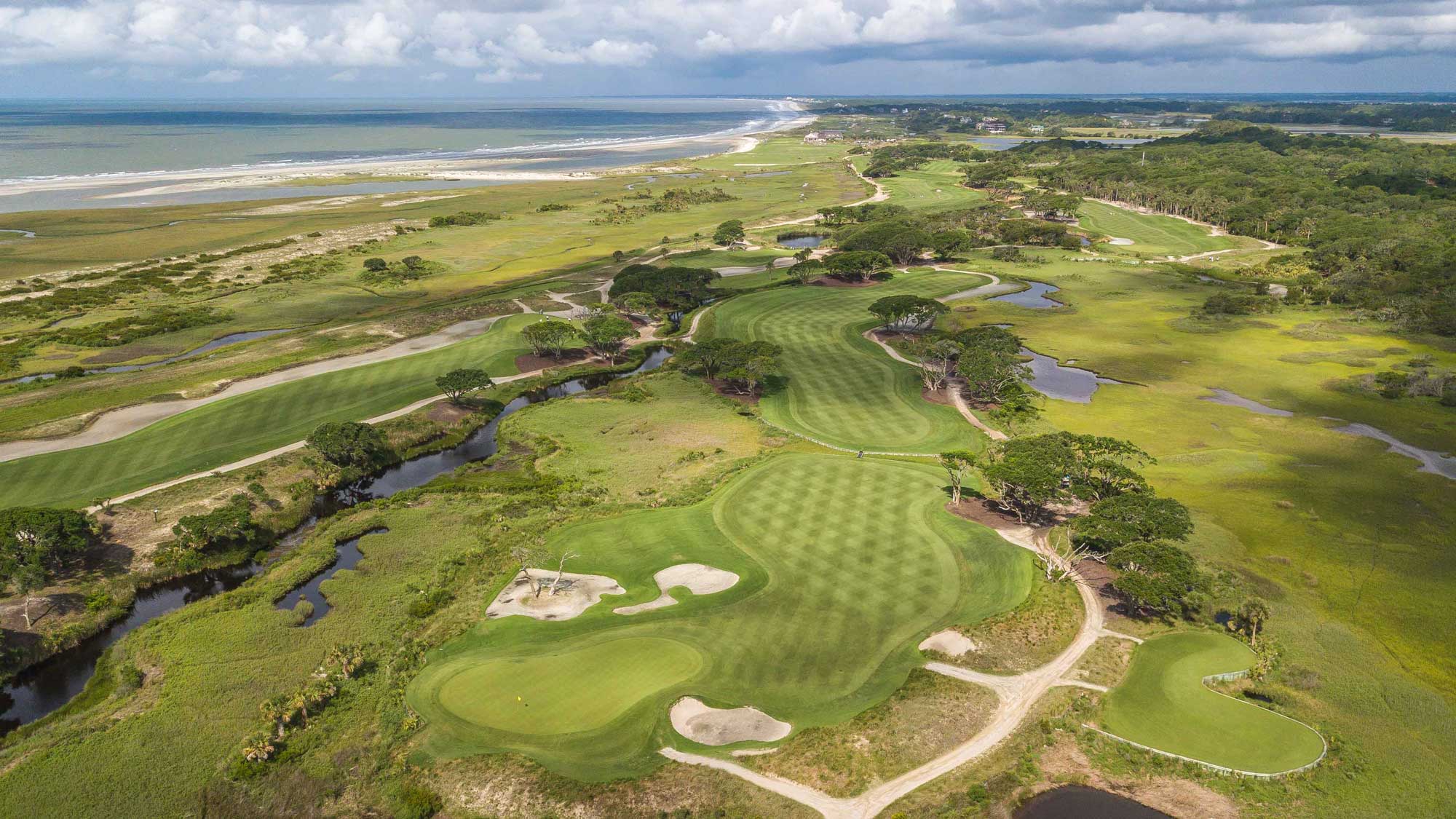
32. Kiawah Island (Ocean)
The blend of tidal marshes, scrub-topped dunes, live oaks and the soothing sound of the Atlantic on every hole make this one of the South’s most memorable playing experiences. Though the course just turned 30 years old, it already has an illustrious history of hosting big-time events, none more memorable than the drama-filled 1991 “War by the Shore” Ryder Cup. Much more short grass has been added around the green complexes since then and now the design is more thought-provoking rather than terror-inducing. Many of its greens are plateaued, with some of the more pronounced coming on the 3rd, 11th and 14th holes. Phil Mickelson more than handled the putting surfaces on his way to his historic win at the 2021 PGA Championship. (Photo: Courtesy Kiawah Island Resort)
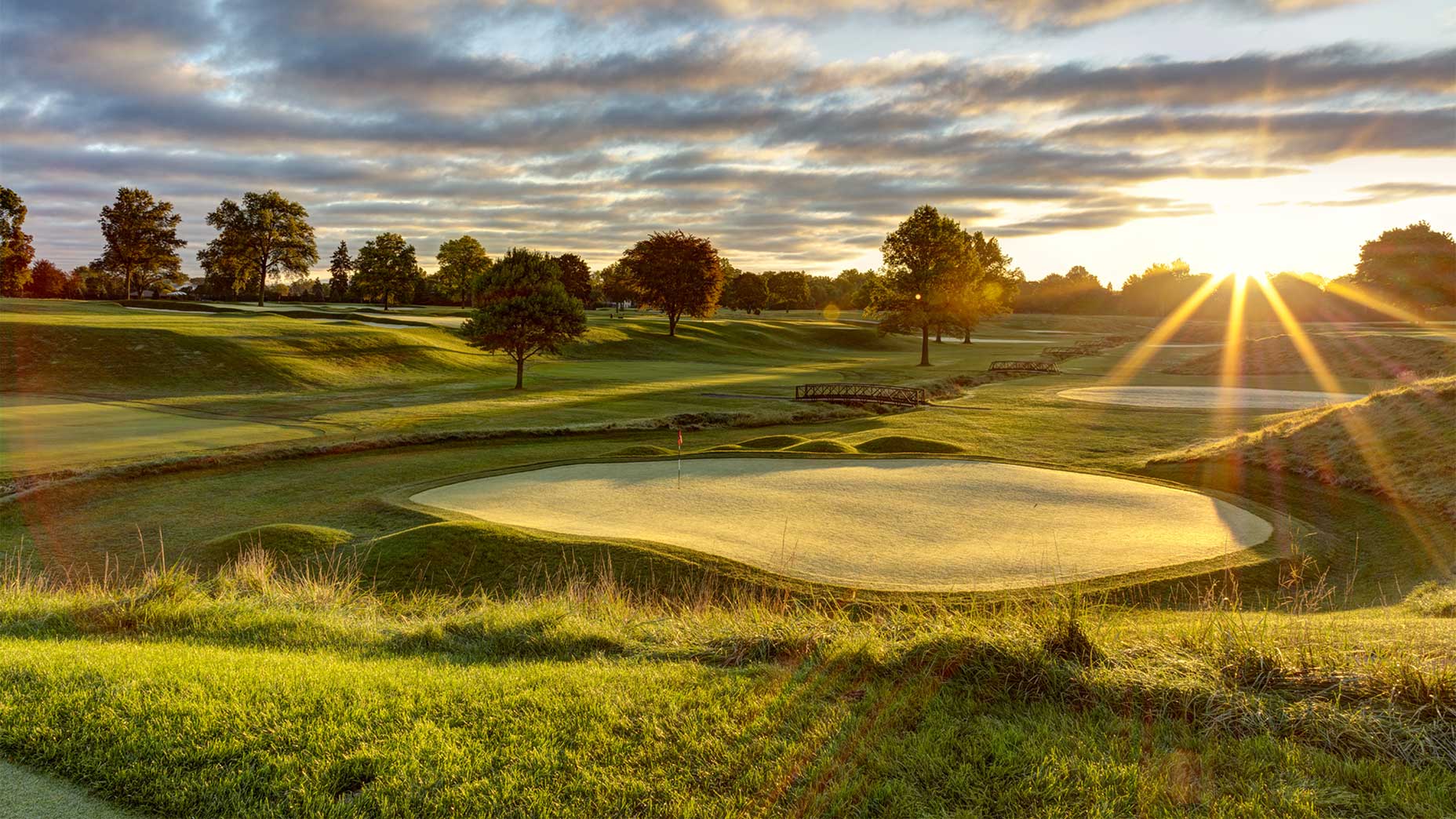
33. Inverness
Andrew Green’s renovation restored Ross features, expunged those that were not and added length to test today’s tournament players. Few courses can claim as sterling a set of two-shotters, headlined by the 6th, 7th, 9th, 15th, 17th and 18th holes. Inverness’s home hole famously measures under 400 yards and is one of the most interesting closers in the game. Too bad more modern architects are leery to build finishers that reward mind over muscle. (Photo: Courtesy Inverness)
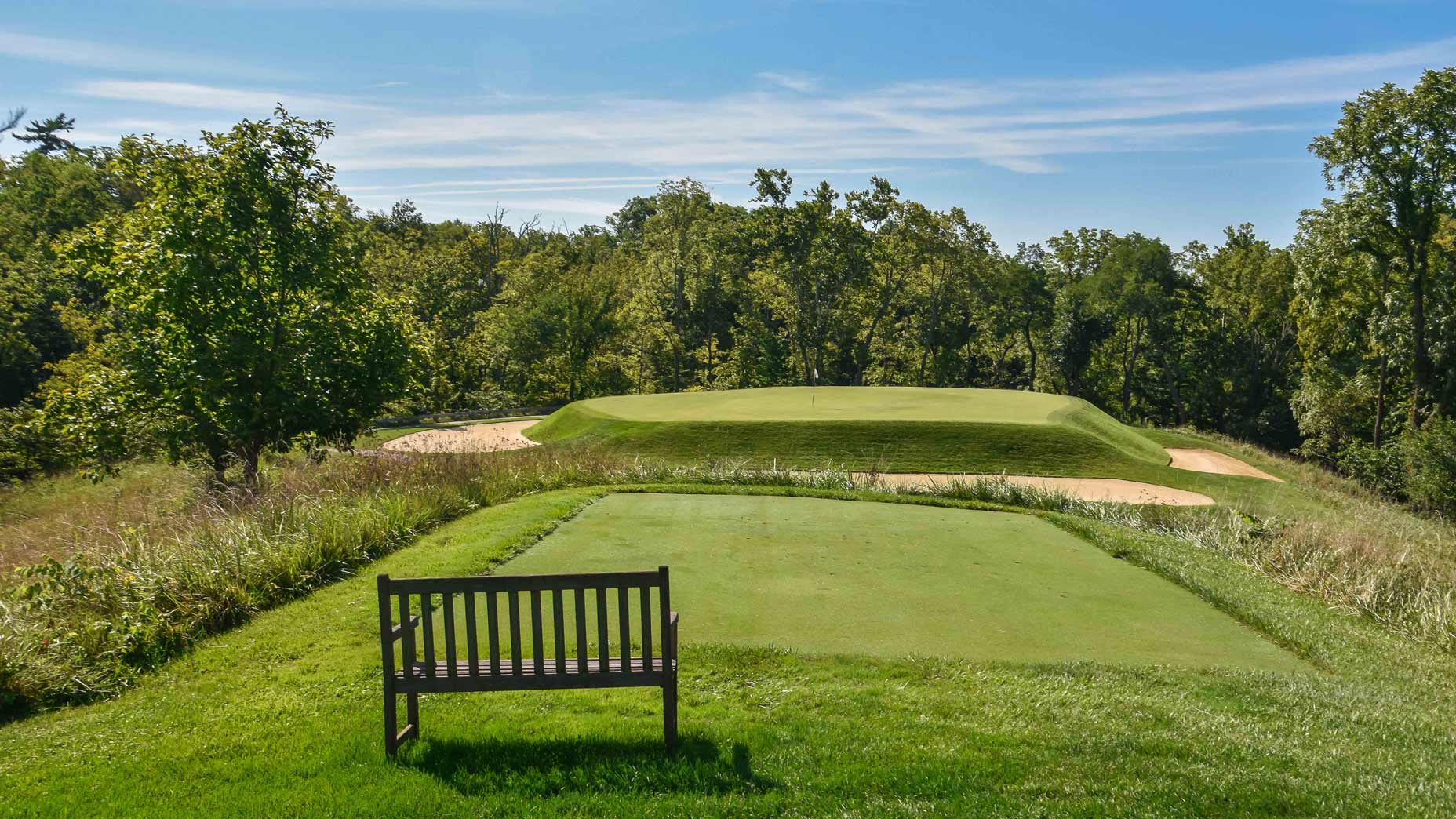
34. Camargo
This low-key 1926 Seth Raynor creation in suburban Cincinnati dishes out deep bunkers and huge, squared-off greens on a property laced with valleys and ravines. The standard quartet of Raynor template one-shot holes (Redan, Short, Biarritz and Eden) are here and rival his best set. Constant refinements continue, including to mow lines, but this course will never close for a splashy restoration. Why? Because the club has always been a good custodian of its course. (Photo: Patrick Koenig)
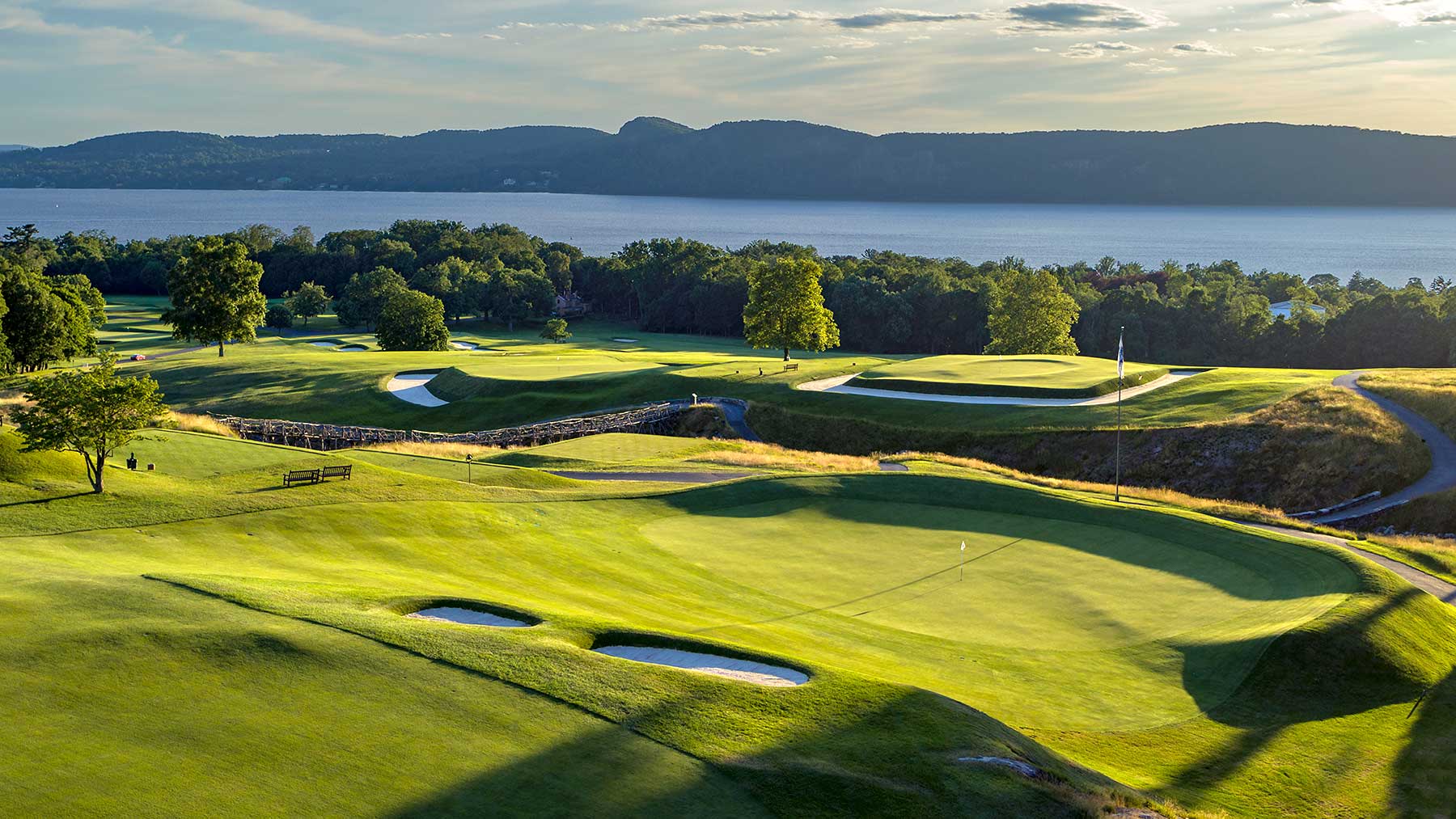
35. Sleepy Hollow
This Westchester County course has always enjoyed a spectacular component to it, courtesy of breathtaking views of the Hudson River, particularly at the 15th and 16th holes. What its holes lacked was playing interest from 50 yards and in. That changed in 2016 when Gil Hanse embarked on a two-year project to imbue the greens with a C.B. Macdonald flair that, well, even Macdonald would appreciate. (Photo: Evan Schiller)
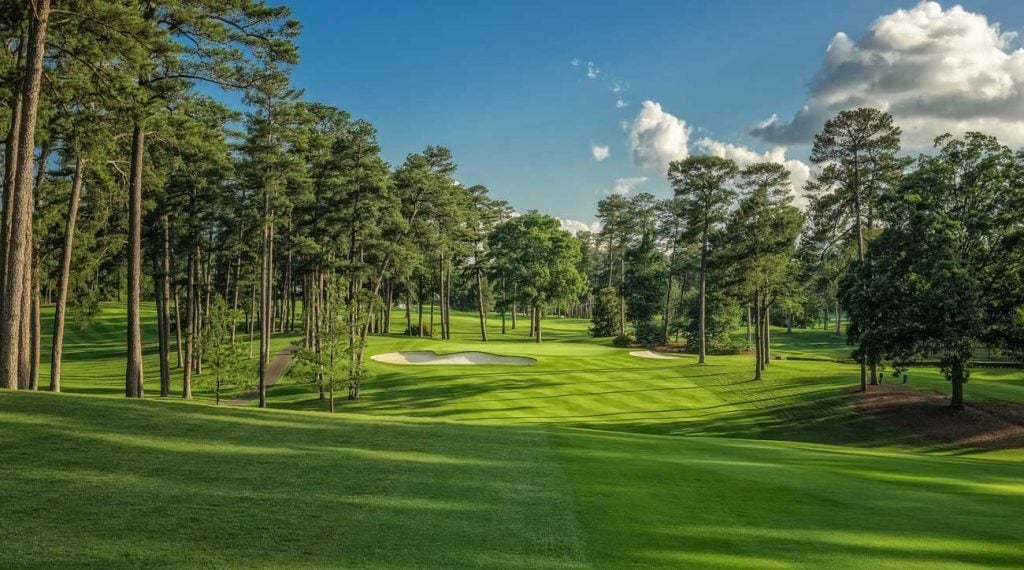
36. Peachtree
Built in the late 1940s, this Robert Trent Jones Sr. design came before he acquired his Oakland Hills “monster” rep. More of Stanley Thompson’s influence is seen in Jones’ early work, highlighted here by his imaginative — and enormous — punchbowl green at the 10th. Seventy-five years later and this Georgia course still adheres to the founding vision, which speaks volumes to the quality of RTJ’s original design. (Photo: Dave Samson)
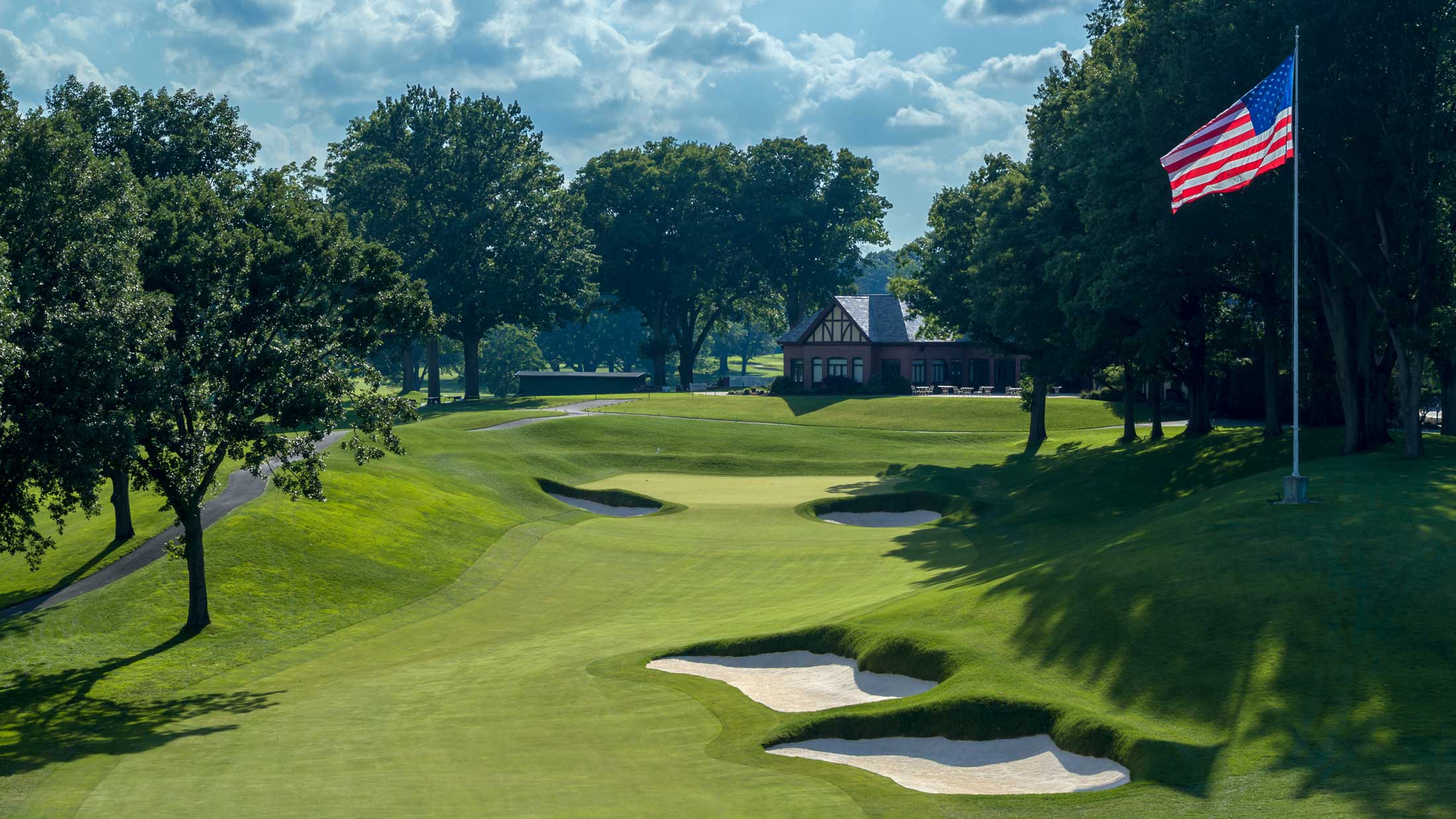
37. Oak Hill (East)
Championship golf is a double-edged sword. Hosting major events on a regular basis confers prestige and pride to any membership. Conversely, many sites deemed worthy were built approximately a century ago when hickory-shafted clubs were the norm. Immense pressure is placed on clubs to have their course evolve to handle equipment advancements. One banal way? Increase the use of penal water hazards. Such happened at Oak Hill in the late 1970s. Much to its credit, the club recently reversed course, recognizing that Donald Ross's work should be brought back to the greatest extent possible. Among other things, Andrew Green saw to it that the incongruent water features were removed and made sure that the mighty East Course was once again a cohesive Golden Age masterpiece without blemishes. (Photo: Evan Schiller)
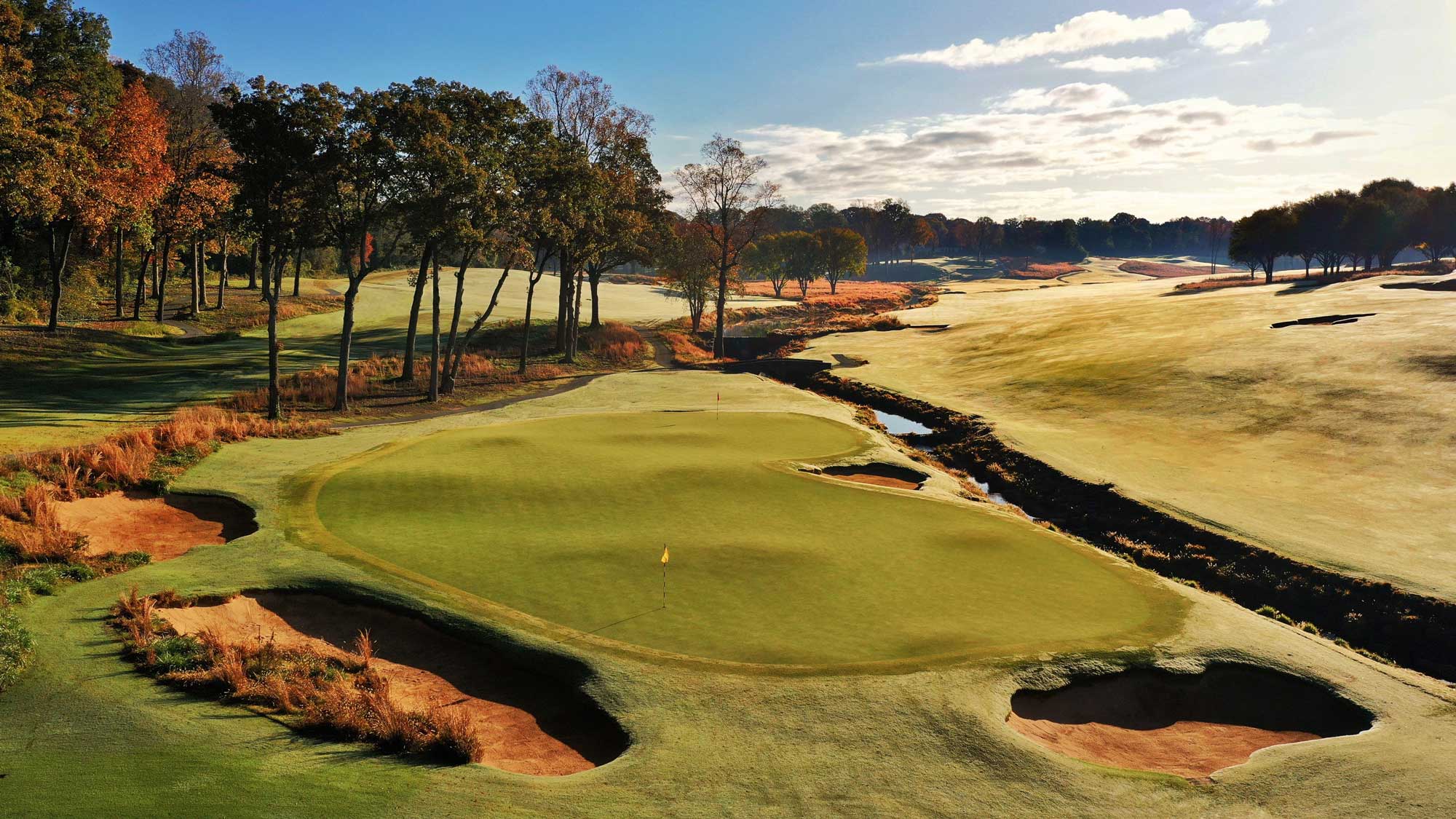
38. Old Town
With sweeping, cross-course vistas punctuated by tawny native grasses and an exemplary routing that twists around miles of creek beds, side-slopes and artistic bunkering, Old Town’s restoration portrays the enduring spirit of classic golf architecture. Perry Maxwell built this inspired North Carolina layout on a former R.J. Reynolds horsefarm. The manner by which Maxwell draped the fairways across the rolling landscape resulted in few level lies. No wonder former Demon Deacon Lanny Wadkins called it the best course for training serious young players. Wake Forest’s golf teams practice at Old Town, which gives them a huge home-field advantage as few collegiate golfers are accustomed to putting on undulating Maxwell greens or consistently hitting approach shots from uneven stances. The club’s longtime green chair analyzes every minute detail of the design during his annual walks around the property with former Wake grad, Bill Coore. (Photo: Jon Cavalier)

39. Ohoopee Match Club
Sand accumulated on the east side of the Ohoopee River for centuries. Ultimately, Gil Hanse and Jim Wagner were given this dream site upon which to build an original design. Their own sense of aesthetics complemented the rustic site’s color palette of browns, rusts and tans. The result is a low-profile design that beguiles. Be careful of its short par-4s: the 4th, 9th and 14th all tempt with driver off the tee — and punish rash tactics. The course isn’t overseeded, and the release of the ball across its dormant fairways allows the first-class architecture to shine. It also signifies the owner’s high golf IQ. (Photo: Jon Cavalier)
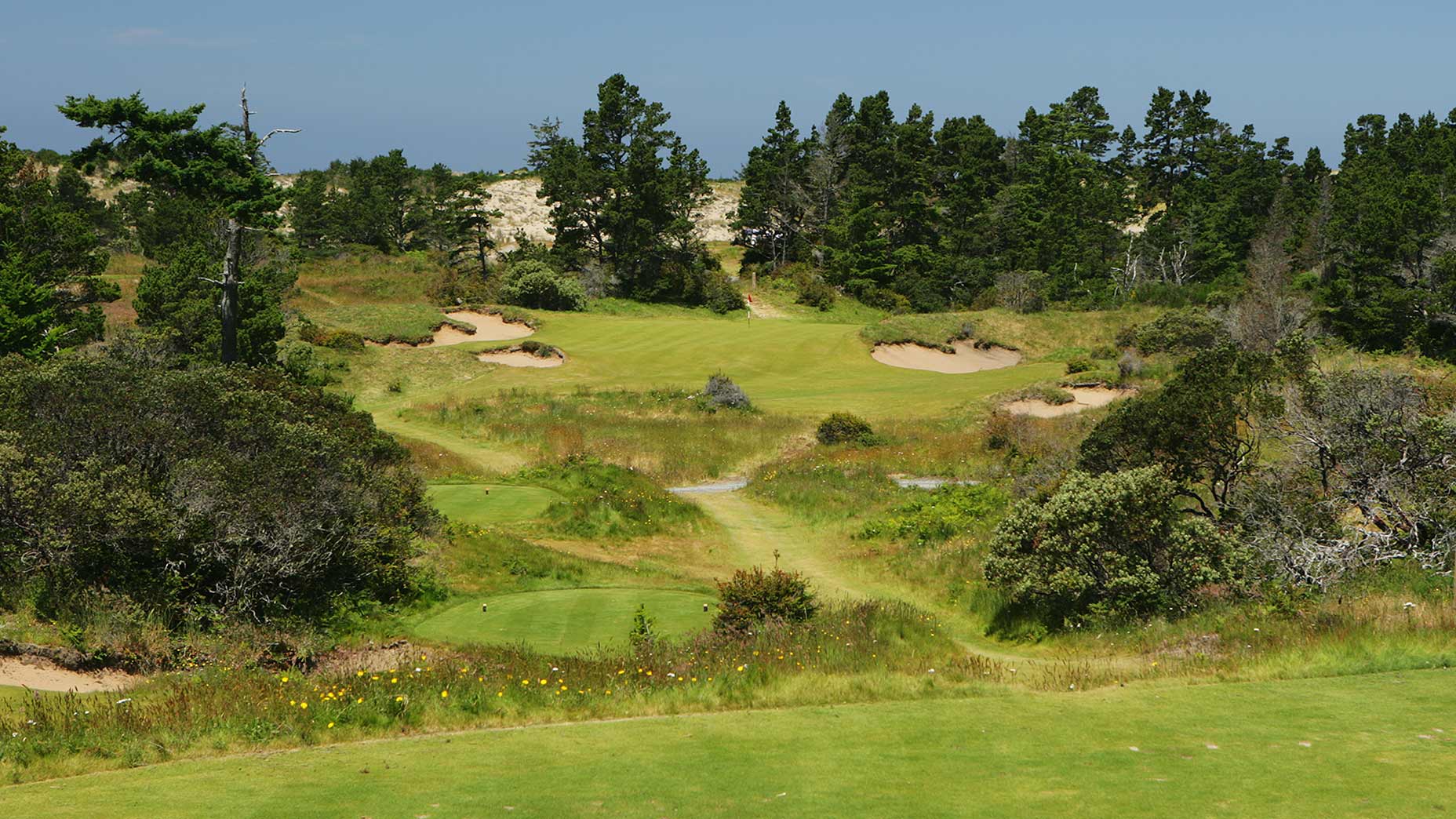
40. Bandon Trails
Several of Coore & Crenshaw’s finest designs are located at hard-to-access private clubs but many of their works thankfully are available to the public, often courtesy of developer Mike Keiser. Trails is one of their best — public or private. The routing works its way over and across heaving dunes and through an enchanting coastal forest, and the fact that you don’t miss the sight of the nearby water for most of the round speaks volumes to its design quality. The 3rd through the 5th is a particularly inspired stretch of inland golf, featuring an exemplary par-5, par-4 and par-3. (Photo: Getty Images)

41. Baltusrol (Lower)
Gil Hanse and Jim Wagner’s 2020 restoration showcases Tillinghast’s immense talent for innovative bunker patterns and fascinating greens. Central hazards once again abound here, most famously at the 2nd and 17th holes where large bunker complexes bisect the fairways. Just as impressive is the diagonal bunker scheme that slashes into the 5th fairway, making it one of the best 400-yarders in the country. Though the middle of the property is pretty tame topographically, that’s precisely where Tillinghast created some of the best greens. Take the time to study both green pads of the par 3s on the second nine as each is a master class in creating something from nothing.
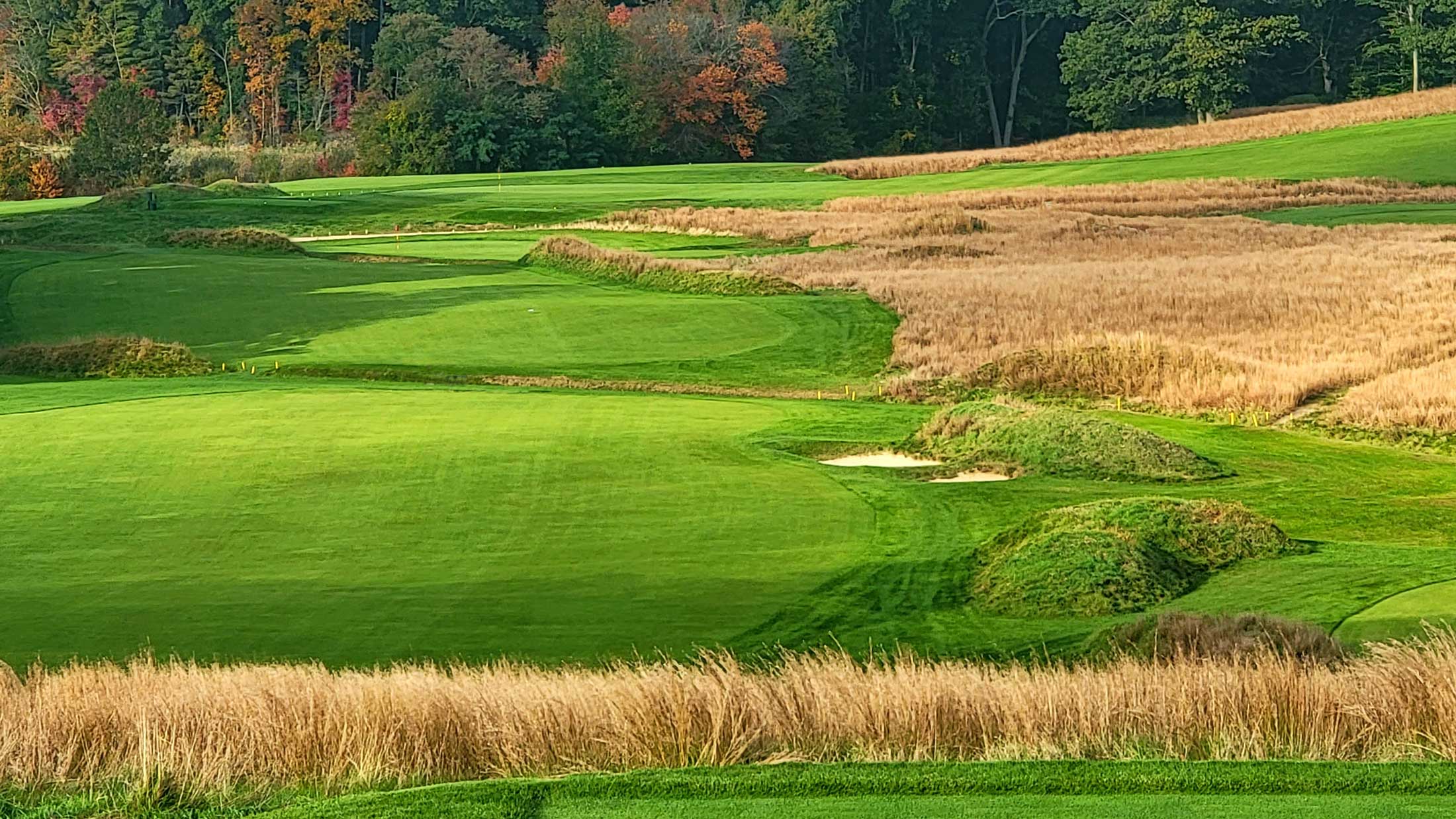
42. Myopia Hunt Club
Some critics of rankings grumble that hosting a major unduly elevates a course. Is that true for Myopia Hunt, given that it has played host to four U.S. Opens? Probably not, given its last one was in 1908! What helped Myopia continue to rise in the list is appreciation for Gil Hanse’s restoration work whereby trees came down, and fairways were expanded/reconnected to Herbert Leeds’s fabulous pit bunkers. The handsome blue stem rough is best admired from a distance but there is no hiding from the severely titled greens at the 4th, 6th and 13th. None of those two-shotters is long but the slopes with which Leeds imbued them about 120 years ago define treachery at modern green speeds. With the wind more evident and the playing surfaces firm, the course’s thorny playing attributes are once again on full display. Fun fact: The winning score at its four U.S. Opens averaged nearly 324, or 81 strokes per round.
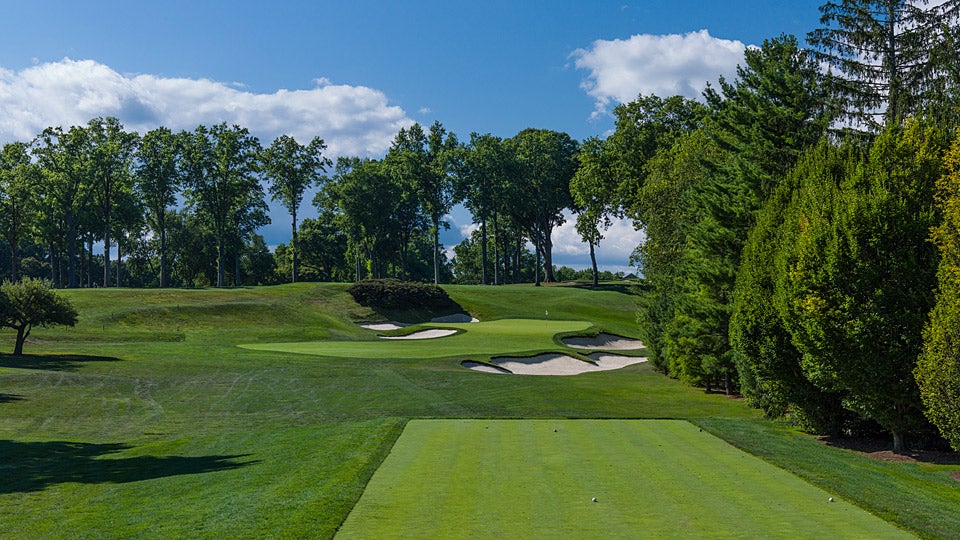
43. Winged Foot (East)
Neither as long nor as tough as its illustrious West sibling, the East enjoys its own devoted fanbase for its variety and the encouraging manner in which ground game options are now presented. Great attention has been paid to the mow lines, with short tight fairway grass on the high side of the entrance to all the greens. More than a few Winged Foot devotees consider the 13th and 17th the best par-3s on the property, a seemingly outlandish claim until you play them. Spend time putting on greens like the 1st and 11th and you will wonder what A.W. Tillinghast understood about green construction that eludes other architects. (Photo: LC Lambrecht)
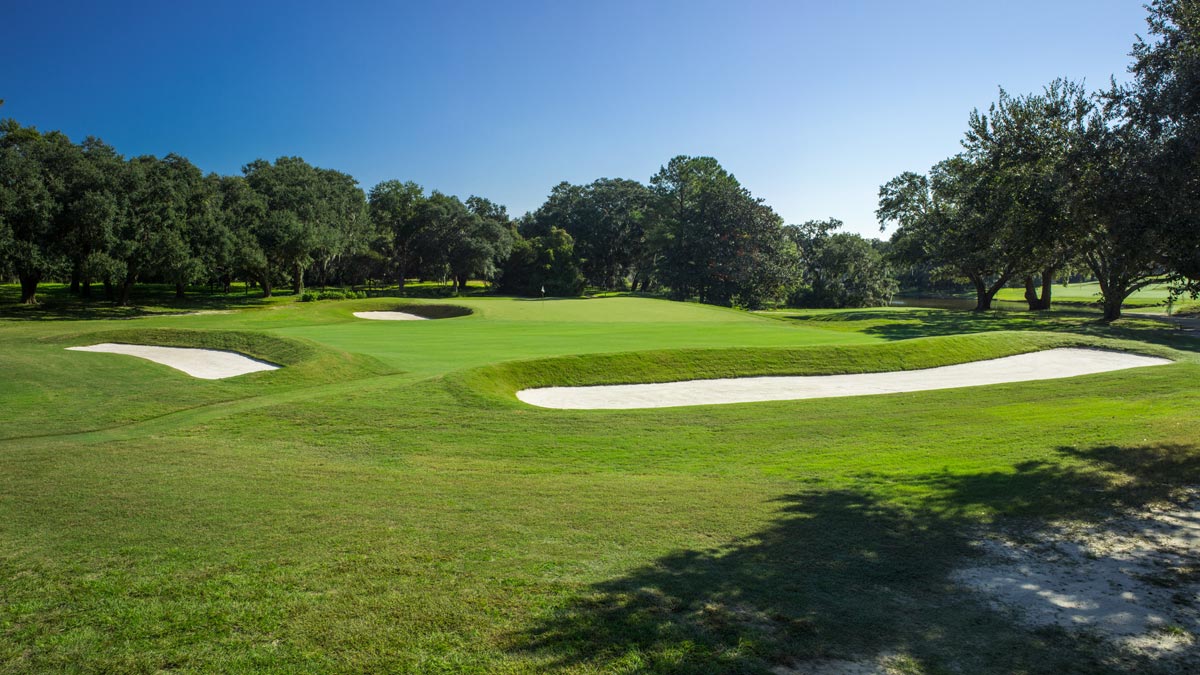
44. Yeamans Hall
Marrying classic Seth Raynor design with coastal South Carolina topography, Yeamans presents a charming tour of Redan, Biarritz and Road holes woven through marshland and magnificent live oaks. Over the years, the course’s original wonder faded as bunkers grew in and green complexes shrank. But a two decade-long renovation based on Raynor’s original property maps — discovered in the clubhouse attic — has returned this Golden Age masterpiece to its original brilliance. (Photo: LC Lambrecht)
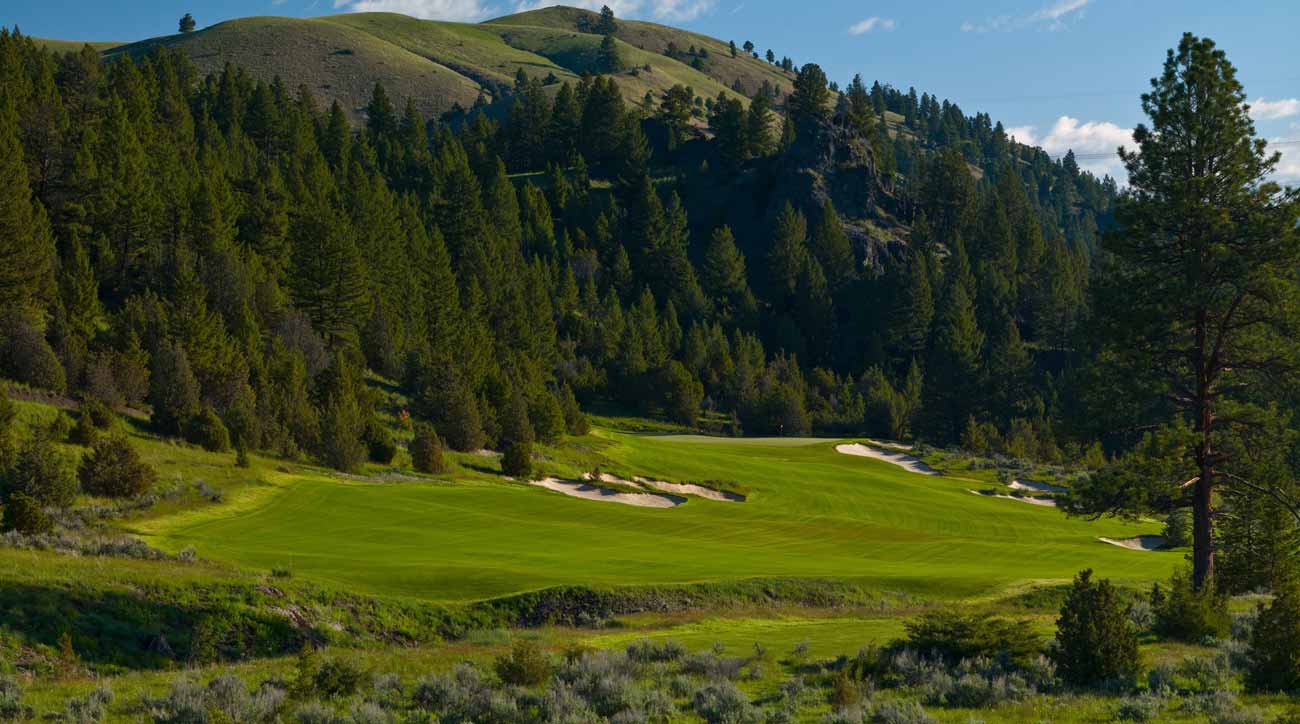
45. Rock Creek Cattle Company
Tom Doak’s works along large bodies of water populate our list but some contend what he did in the American West at Rock Creek is just as exhilarating as his more photographed courses in sandy soil. Though Montana’s rocky conditions made for a tough build, the result is wide fairways that flow over the tumbling land with a grace and ease that is hard to fathom. The same design principles — fairway contours that either shunt you out of position or send you to the ideal location, hazards that appear ageless and greens that offer a wide range of hole locations — demand you reassess how to best play each hole from one day to the next. Hard to find better playing angles. (Photo: LC Lambrecht)
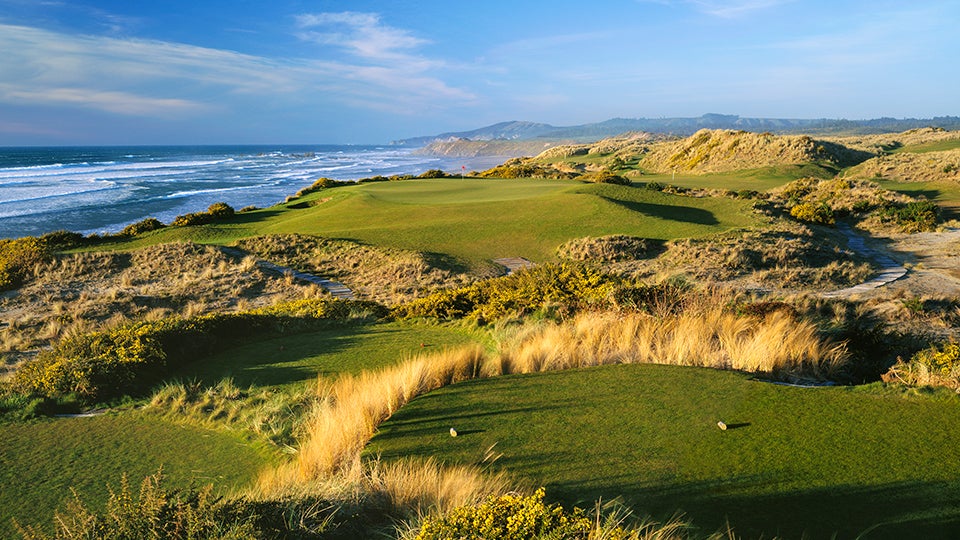
46. Bandon Dunes
Bandon’s original course is a David McLay Kidd design draped atop craggy headlands above the Pacific. Ocean views stun the senses, along with bluff-top sand dunes sprinkled with Scotch broom and gorse bushes, coastal pines, crashing surf, wind-whipped tall native grasses and stacked sod bunkers. The most memorable seaside tests are the par-4 4th and 5th, the par-3 12th and the drivable par-4 16th, each with eye-popping scenery and enjoyable risk/rewards. The 2020 U.S. Amateur telecast from here was captivating. (Photo: Wood Sabold)
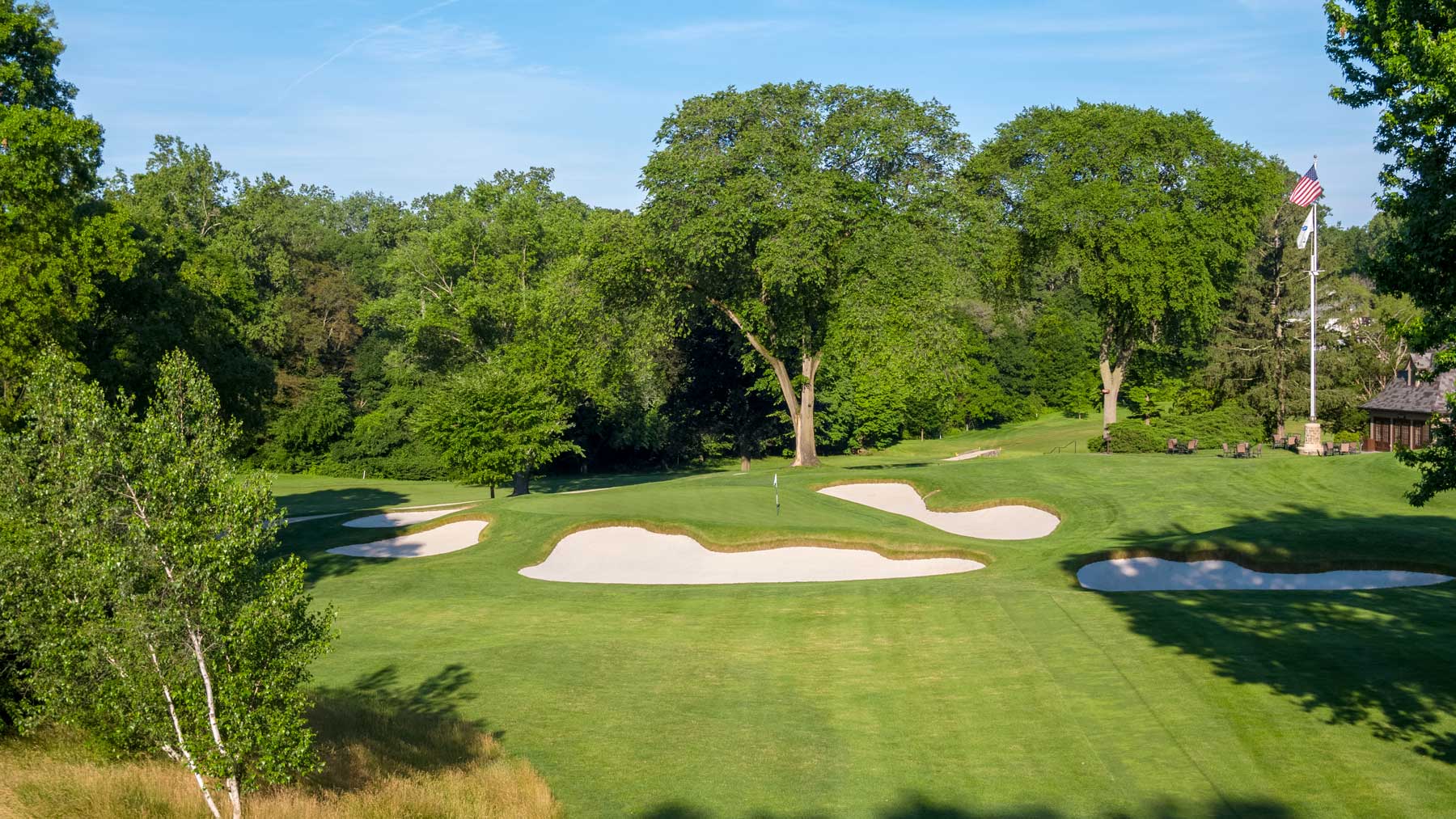
47. Quaker Ridge
This quiet club across the street from Winged Foot has counts Jack Nicklaus and Pete Dye among its admirers. Its outstanding cluster of gently rolling par-4s, notably the 6th and the 11th, provided a terrific canvas for amateurs such as Justin Rose and Jason Gore in the 1997 Walker Cup. Dating to 1916, the course was made over by A.W. Tillinghast in 1926 and Gil Hanse’s restoration this past decade has the course at peak. The par-3 9th is one of the hidden gem one-shotters in the Northeast, though it may take a few rounds to figure out why. (Photo: Evan Schiller)

48. Muirfield Village
Conceived by Jack Nicklaus in 1966 to be his hometown equivalent of Bobby Jones’ Augusta National, this 1974 collaboration with Desmond Muirhead was an instant smash, both for its strategic design and flawless conditioning. Equally impressive was how Nicklaus seamlessly integrated spectator areas into the closing holes, using hillsides and amphitheater-style mounding to provide patrons with clear views of the action. Hard to imagine that the professionals now try to drive the sliver of green at 14 but that’s how much the game has changed — and yet the hole is still no easy par. That’s great architecture. Work over 2020 saw the unlikely happen: one of the best sets of par-5s on the list got even better. (Photo: Keyur Khamar/PGA Tour)
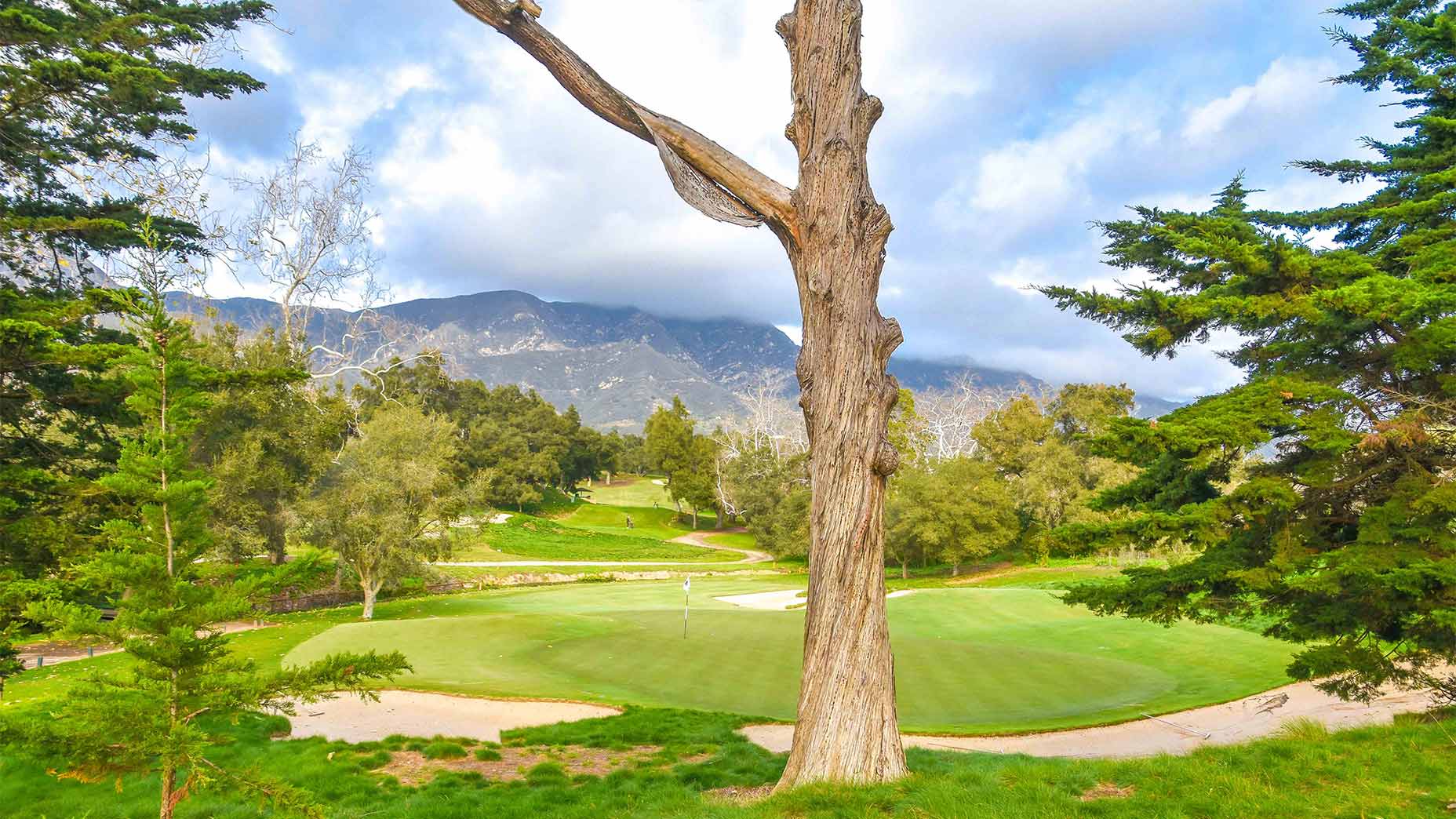
49. Valley Club of Montecito
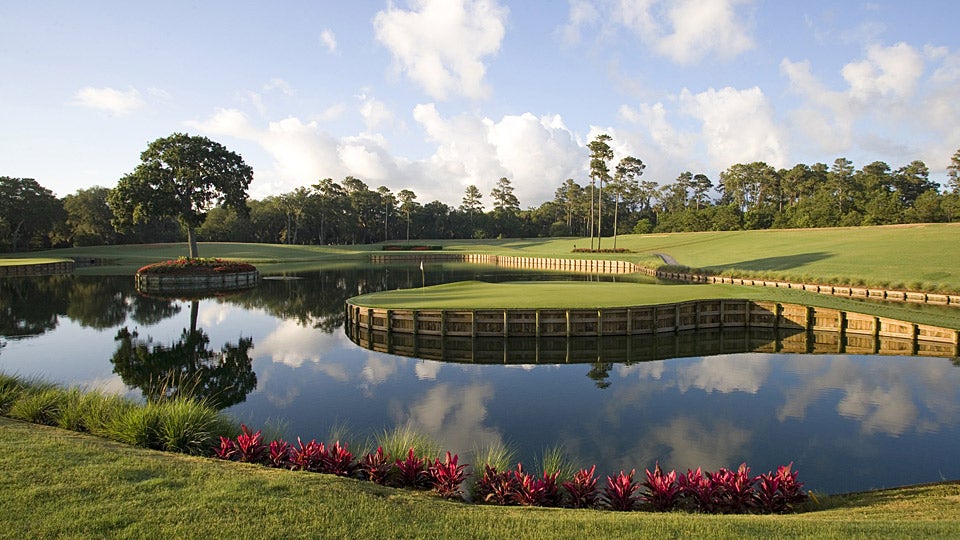
50. TPC Sawgrass (Stadium)
Some sniff at the artificiality of a course being hewn from a swamp, yet that’s also what makes the Stadium Course stand out from the crowd. Home of the Players Championship since 1982, the design has evolved into a handsome battleground (however you feel about the towering clubhouse), highlighting Pete Dye’s talent for envisioning something from nothing. The short par-4 4th, reachable par-5 11th and the long par-4 14th rank among Dye’s all-time best. For shotmaking options and memorable individual holes that require a blend of power and finesse, the Stadium Course has few peers. (Photo: Chris Condon/Getty Images)
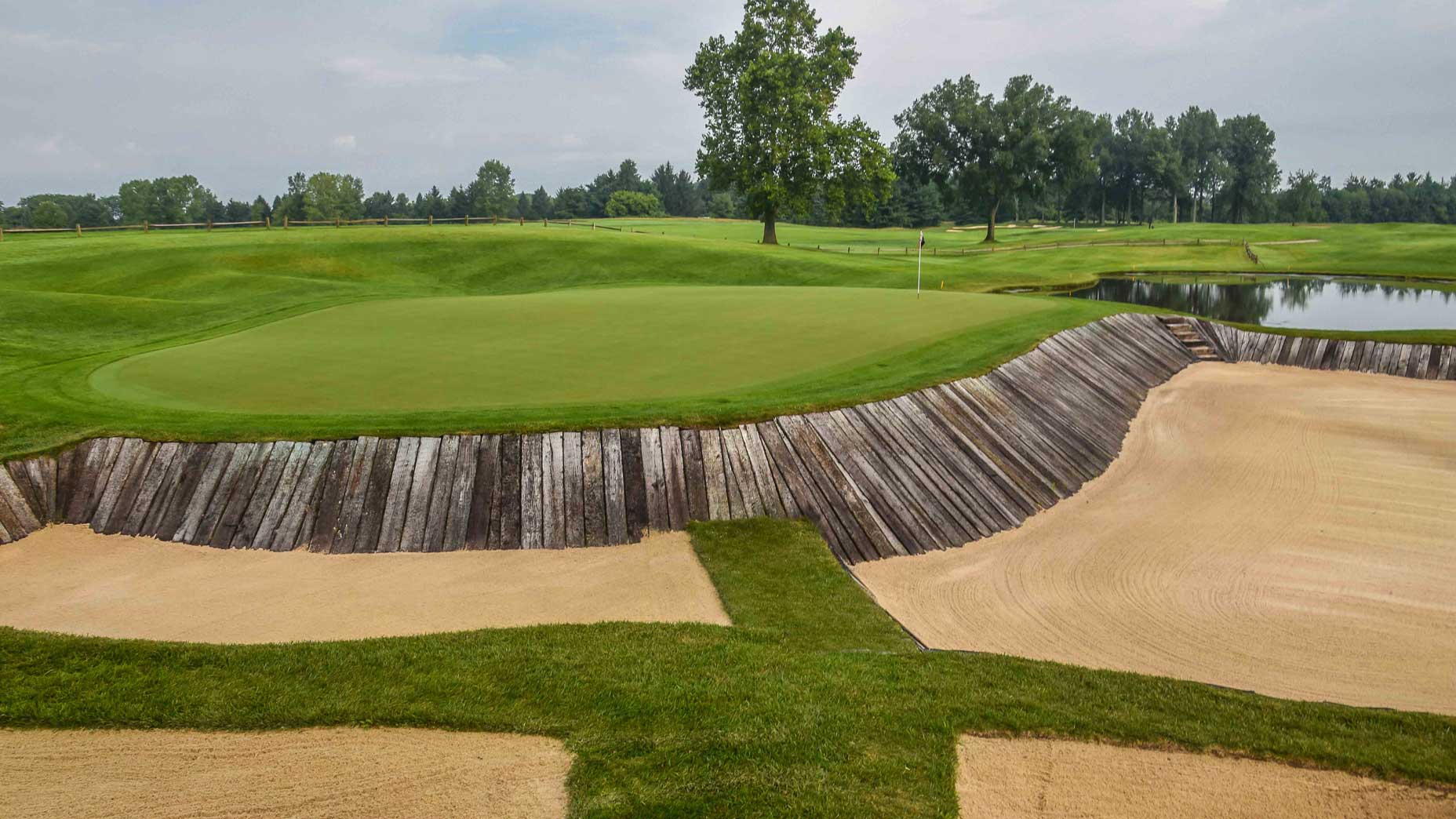
51. The Golf Club
One of Pete Dye’s early masterworks, this rural retreat built in 1967 in suburban Columbus is where Jack Nicklaus first learned about design, as an unpaid consultant. With bunkers and water hazards framed by railroad ties and tall native grasses scattered throughout, this thorough original left no doubt that Dye was a generational talent in the works. Golf simply hadn’t seen holes like the 3rd and 13th. Golf architecture was about to head in a more exciting direction, one that prized variety as well as the use of grasses for texture and contrast. Dye’s contributions to modern architecture can’t be overstated. (Photo: Patrick Koenig)
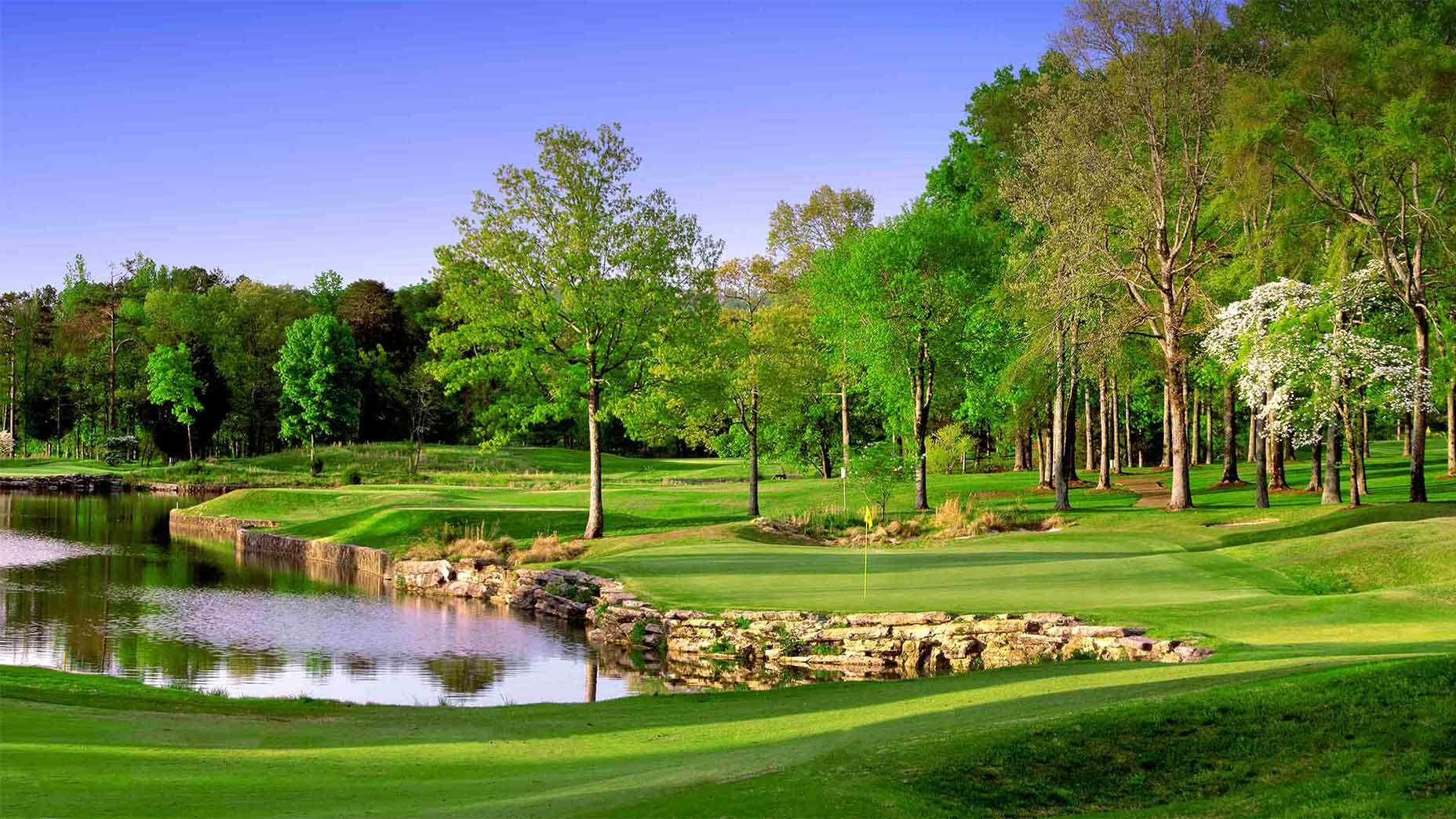
52. Honors Course
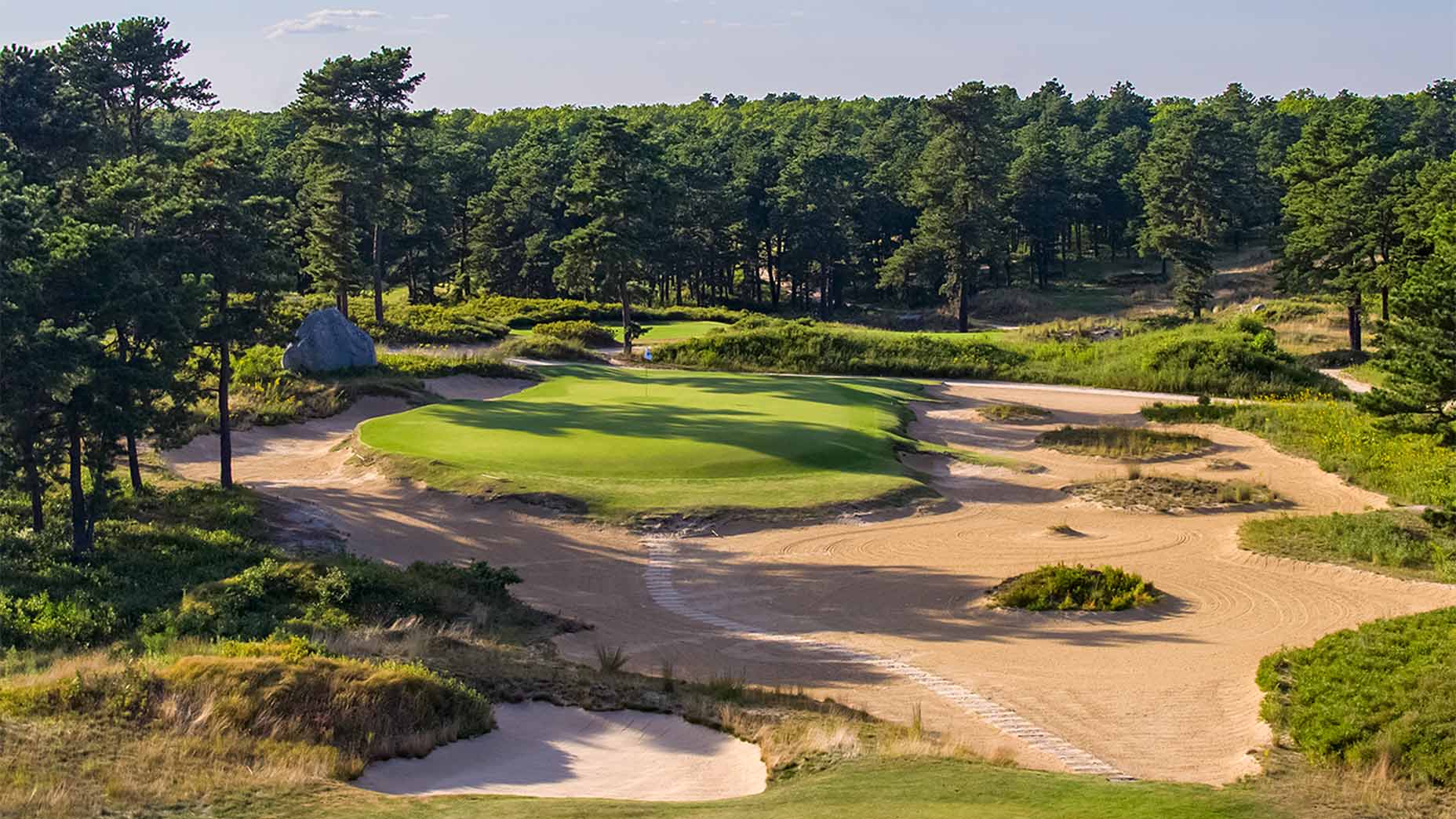
53. Old Sandwich
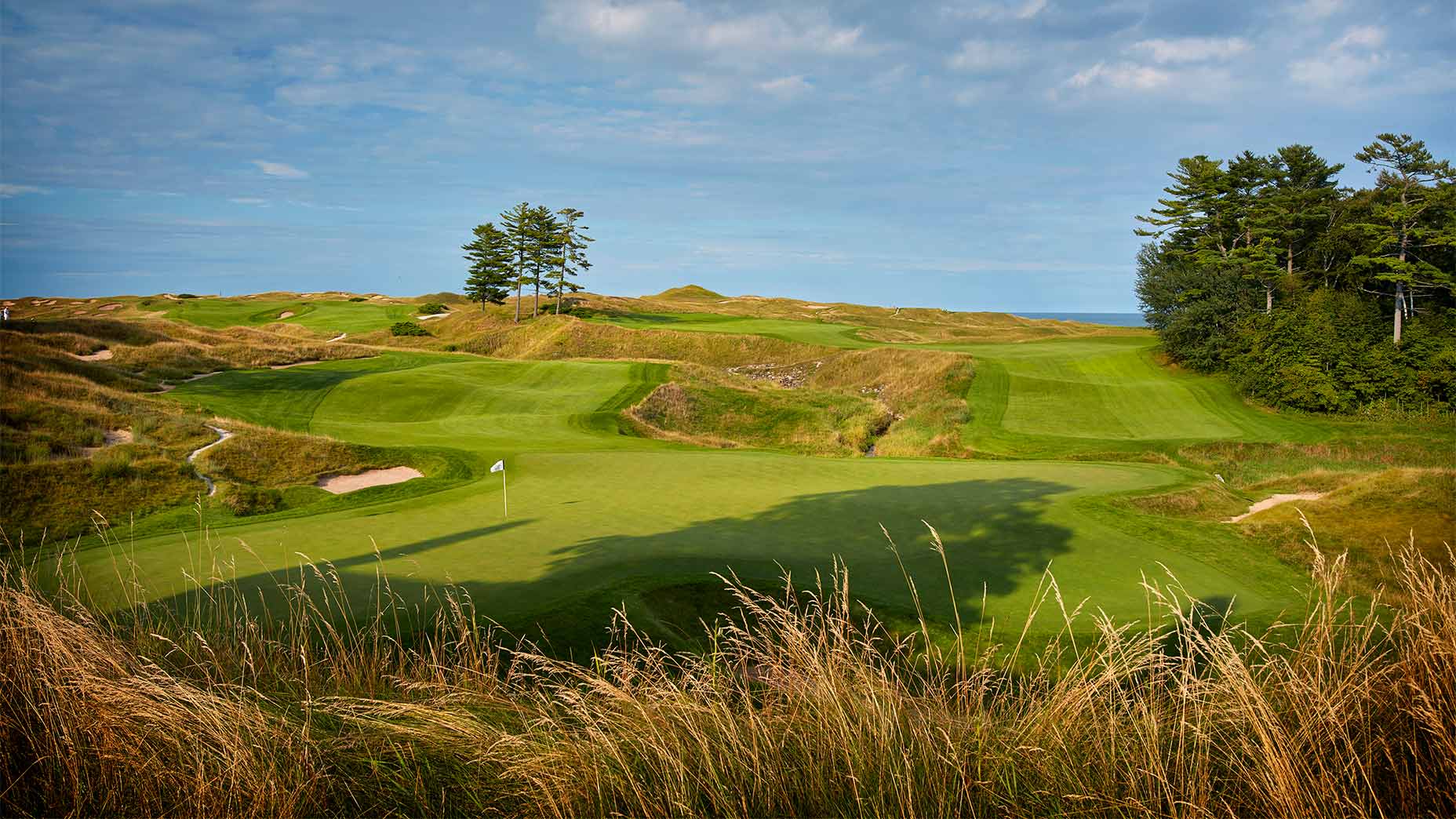
54. Whistling Straits (Straits)
Home of the 2004, ’10 and ’15 PGA Championships, this 1998 Pete Dye design on Lake Michigan was once a poker-table-flat military training base in World War II. Eventually it became a site for illegal dumping of toxic waste. Dye and owner Herb Kohler engineered a mind-boggling cleanup, moving 3 million cubic yards of dirt, trucking in 7,000 loads of sand to create the hills and bunkers and relocating the bluffs back off the shore. Kohler told Dye “I want the course to look like it’s in Ireland.” Mission accomplished. The 2021 Ryder Cup played here highlighted what a great match-play course it is, too, with its plethora of ½-par holes. (Photo: Getty Images)
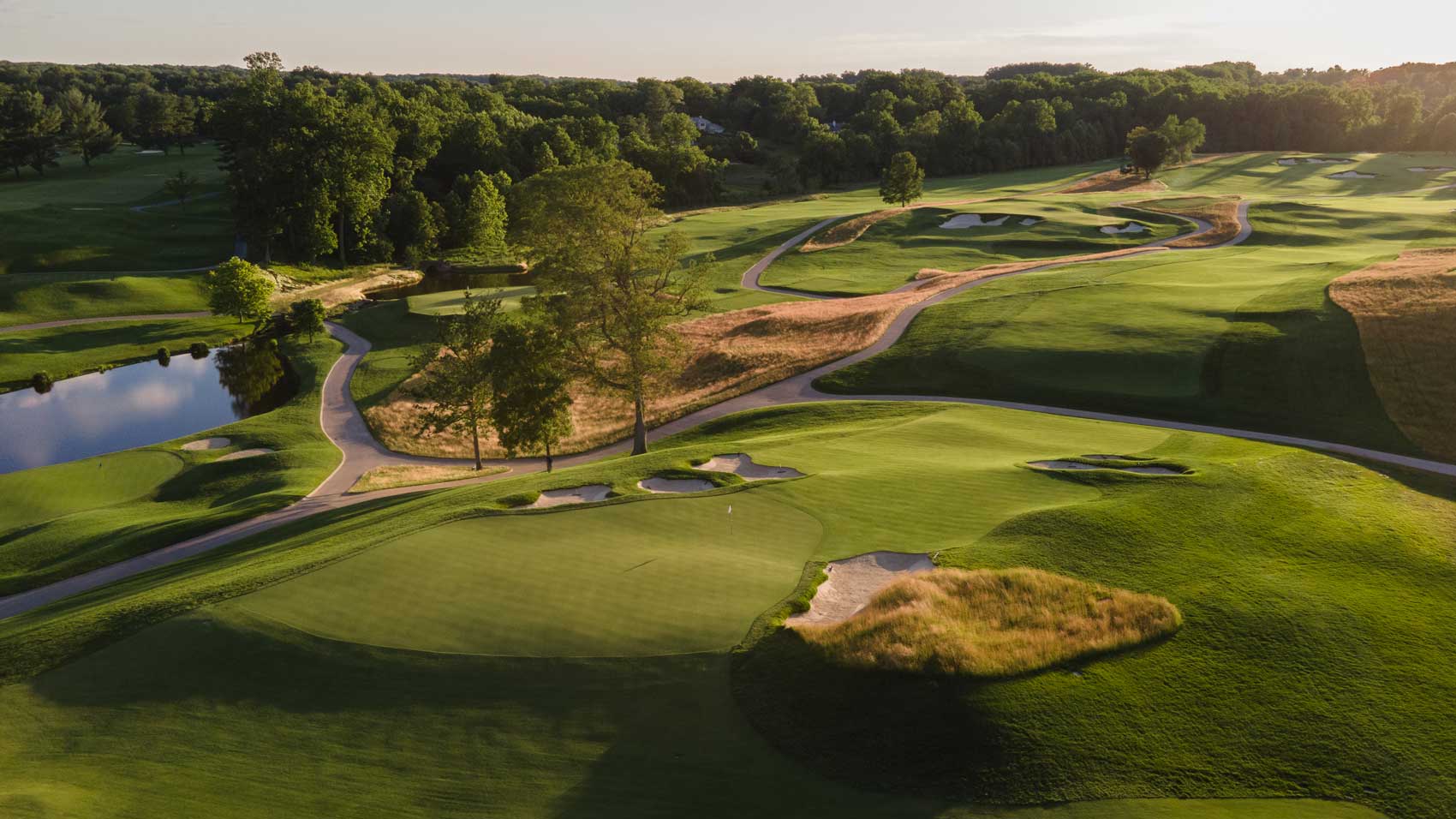
55. Congressional (Blue)
Great things were always intended for this course, given its location just outside our nation’s capital. But after 100 years of existence, too many architects had had a hand in its evolution, and this Devereux Emmet design lost its Golden Age ethos. What to do? The club pivoted to Andrew Green and gave him carte blanche to wholly reimagine the course and unify it under one hand. Green delivered with the revamped design now looking like it has been there for more than a century. The alternating asks are excellent and every aspect of your game is tested. Take the stretch of 7 thru 9: the uphill par-3 7th requires a carry over the course’s deepest greenside bunker; the 8th is a teaser of a short par-4 with par amply defended at the angled green; and the 9th is a 600-plus yard rollercoaster that follows the heaving land back to the majestic clubhouse. Pete Wendt is one of the country’s finest greenkeepers and his layering of native grasses across the rollicking landscape lends the course a sumptuous texture that had long been absent. With trees removed and the wind blowing through, the days of a soft course — like the one Rory McIlroy encountered when he won the 2011 U.S. Open here — are a distant memory at the “new old” Congressional. (Photo: James Lewis)
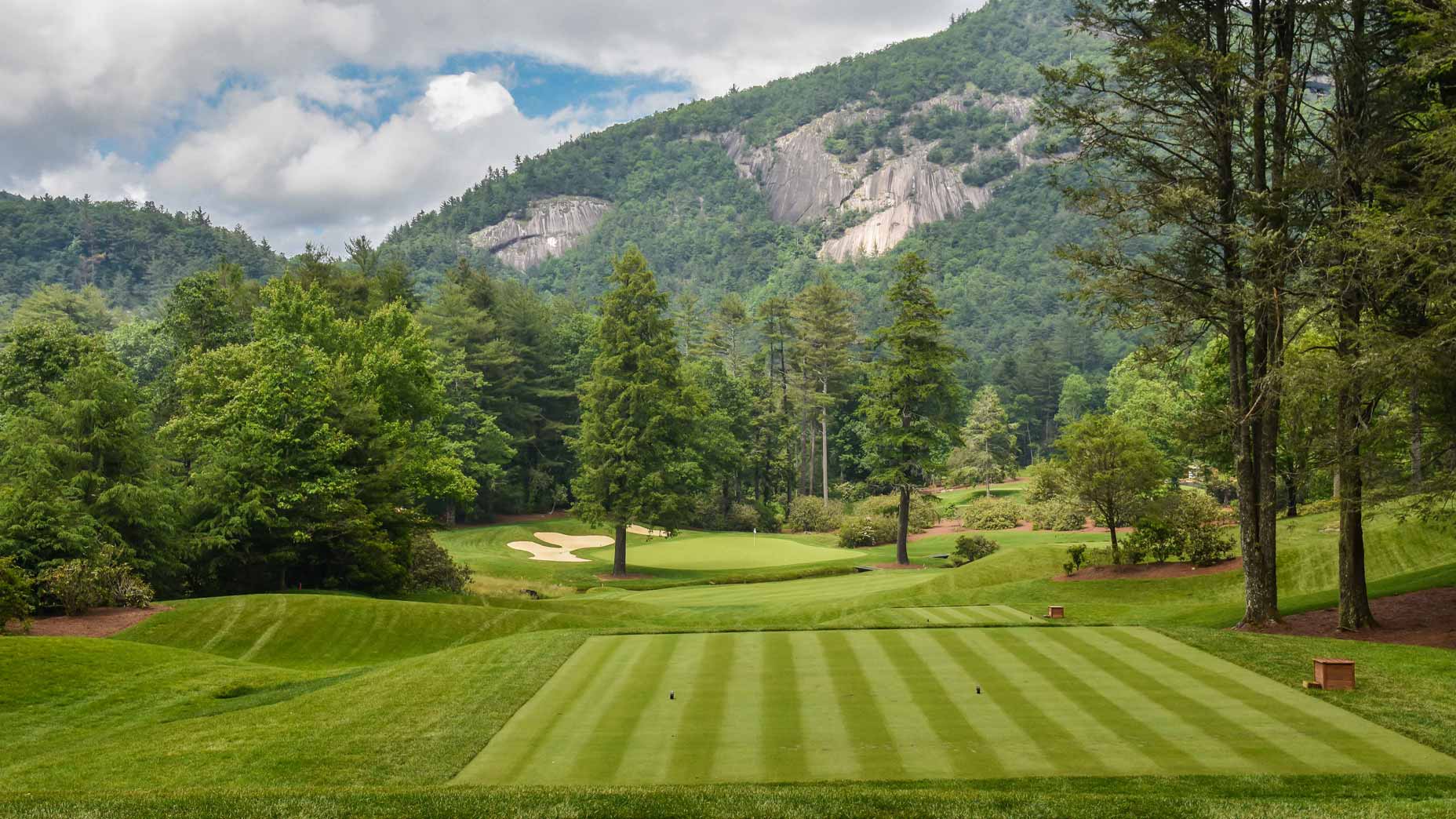
56. Wade Hampton
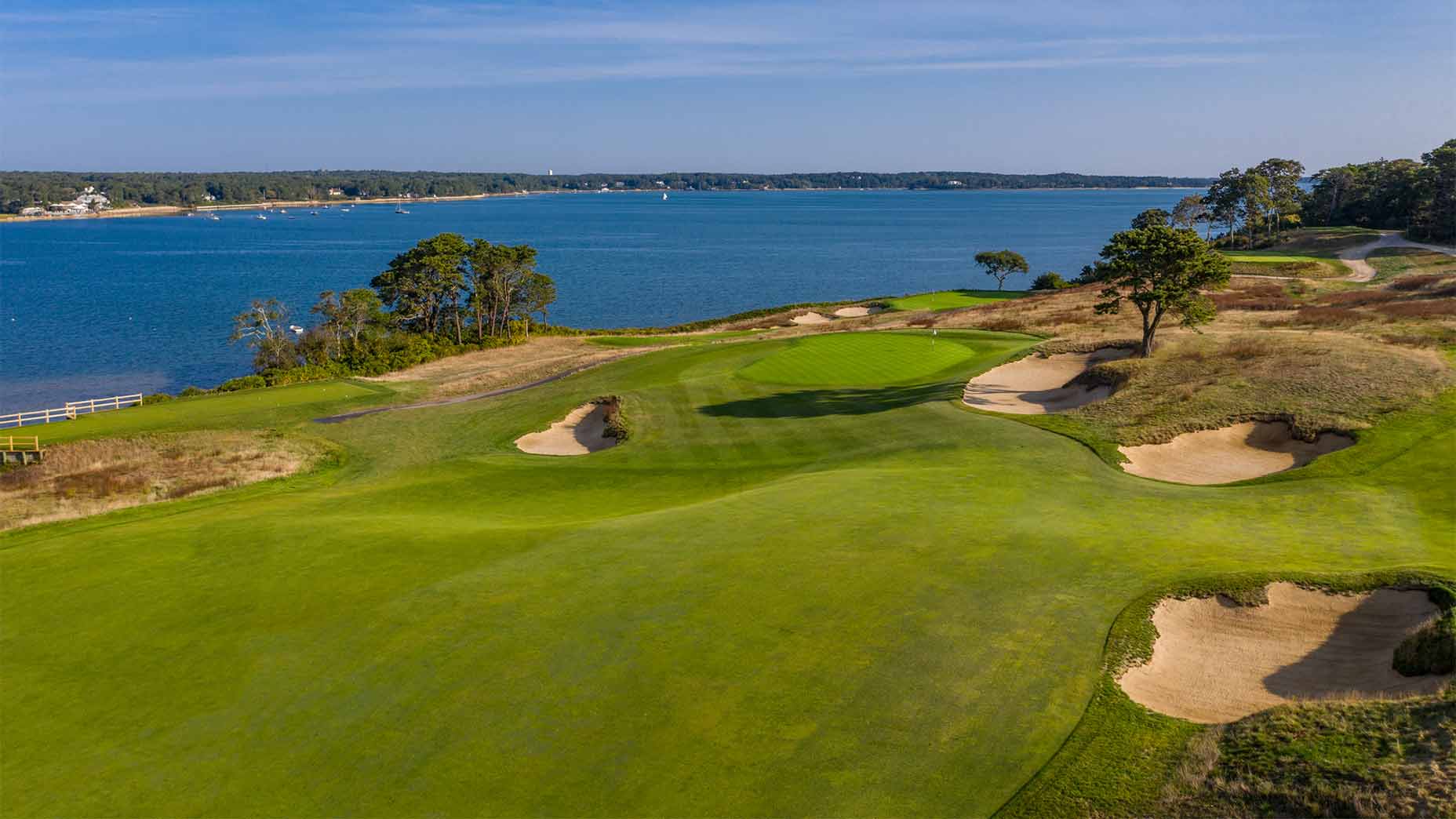
57. Eastward Ho!
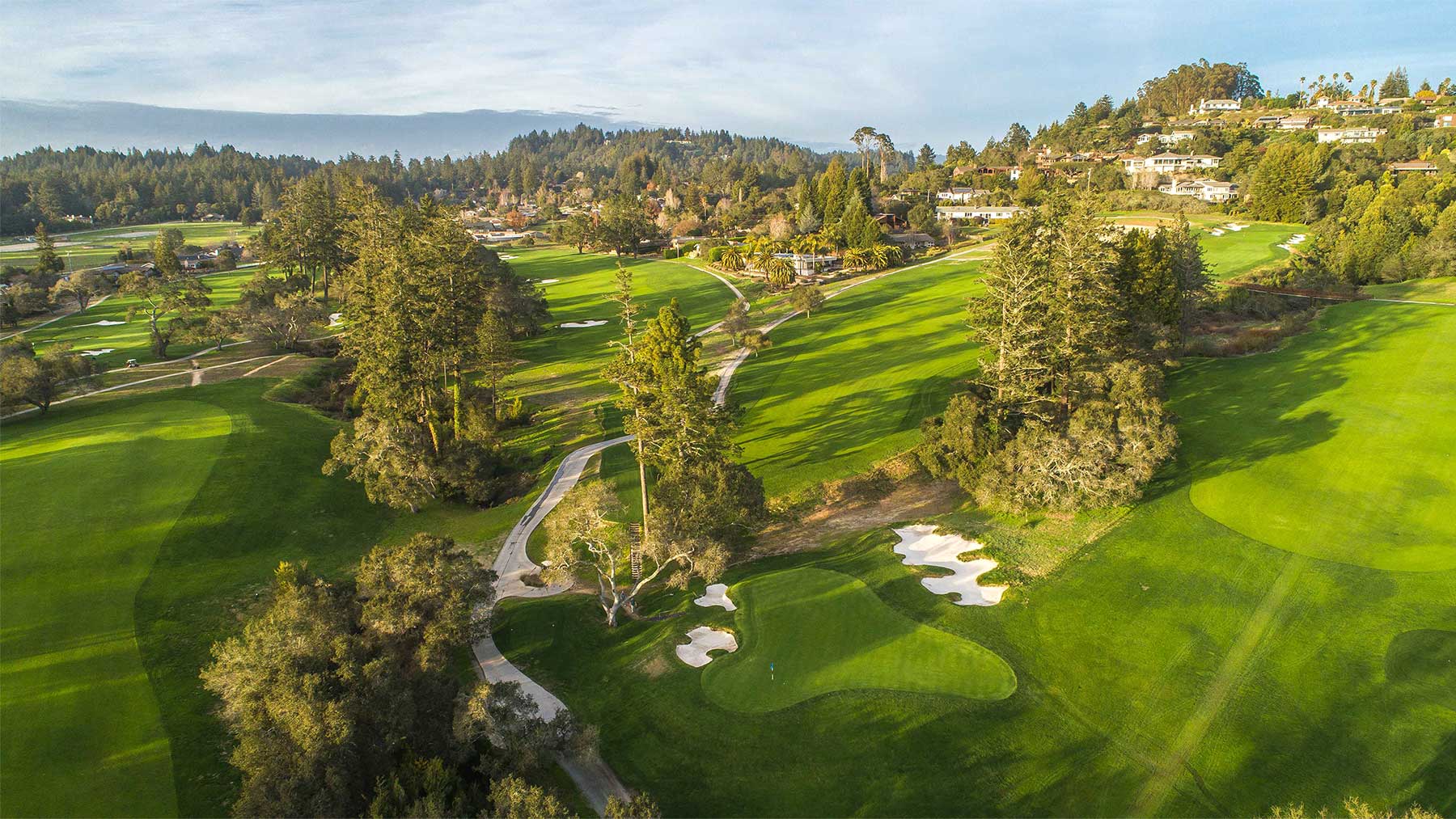
58. Pasatiempo
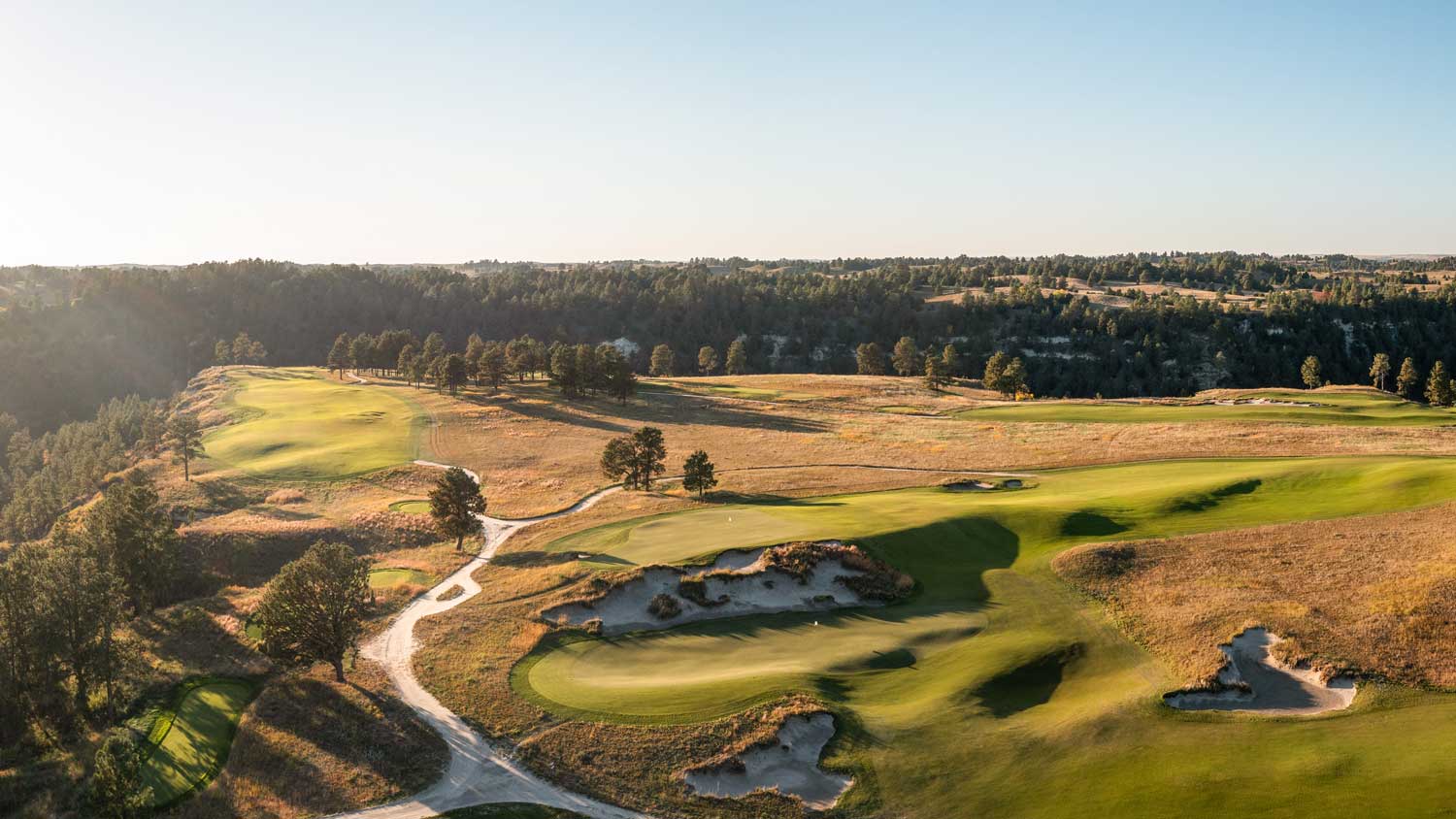
59. CapRock Ranch
This Gil Hanse and Jim Wagner design is the only new course built in the modern age to break into the 2022-23 U.S. Top 100. The raw property enjoys copious natural advantages with which few other properties can compete, and the design takes advantage of both the Snake River valley and the bordering dunescape. Eight greens are set along or border the Snake River valley. Standing on the 6th green, you look down and see the winding river some 190 feet below. (Always neat to see a 10-million-year-old feature included in a two-year-old design!) The holes away from the valley play into dunes with some greens, like the 8th, enjoying punchbowl qualities. Other greens, like the 14th, are perched high, poised to wreak havoc. The routing effortlessly runs to the spectacular caprock cliffs back to the dunes and back again. Though the finishing four-hole stretch, including the dramatic 230-yard 18th, is tough to beat, the front nine is equally as good. (Photo: Brian Oar)
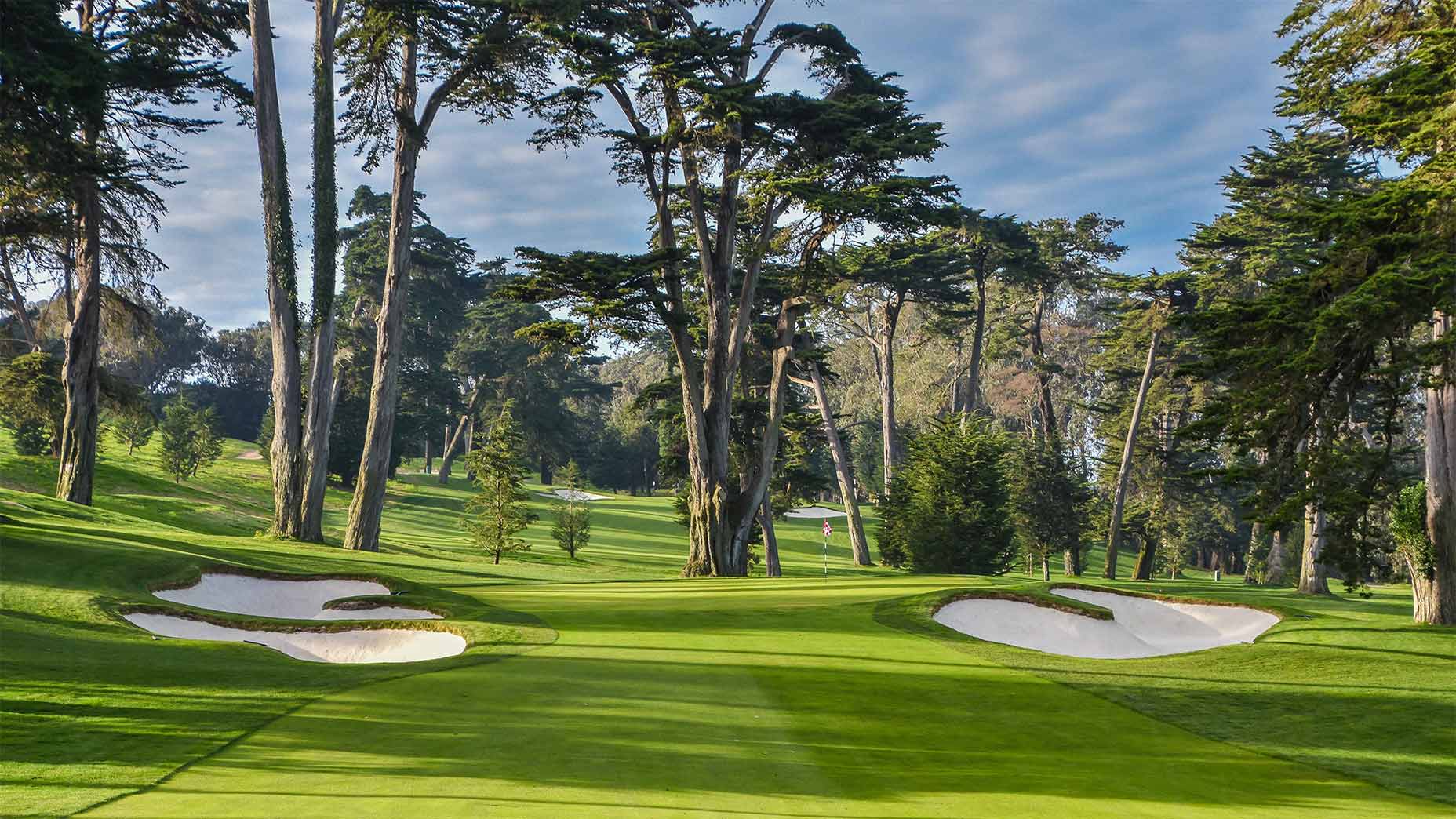
60. Olympic (Lake)
It’s always a delight to find a course that rewards the lost art of shaping shots. The 4th hole, for instance, features a reverse-camber fairway: the hole swings right to left but the fairway tilts left to right, mandating a draw from the tee. The next hole, a dogleg right, calls for a fade. Recent clearing has helped to highlight the stunning nature of the cypress trees that line this hillside overlooking Lake Merced. Its famous 5-5-short 4 closing stretch produced another climactic finish at the 2021 U.S. Women’s Open. Kudos to William Watson, who might well be the least appreciated important architect from the Golden Age. (Photo: Patrick Koenig)

61. The Creek
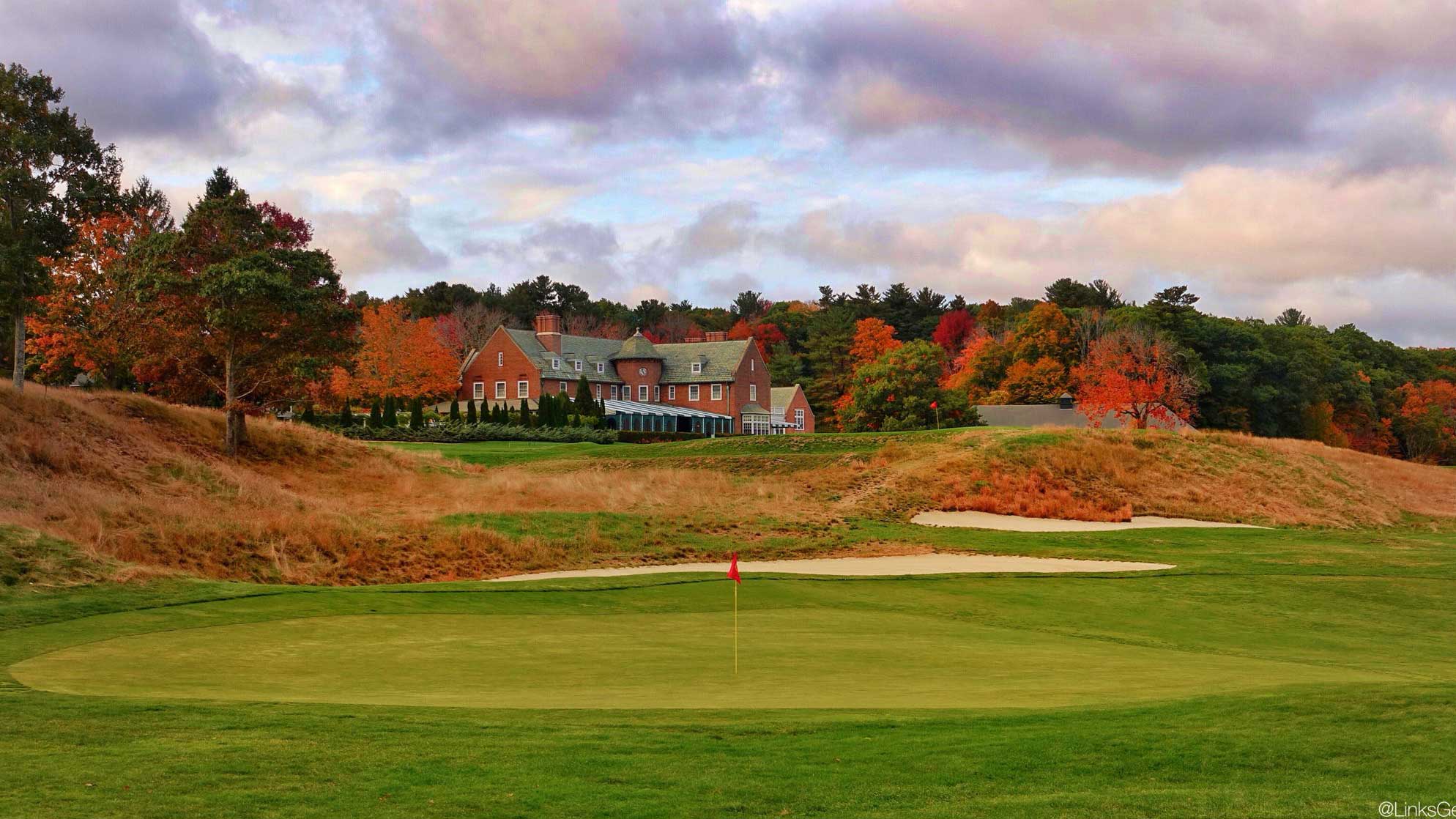
62. Essex County
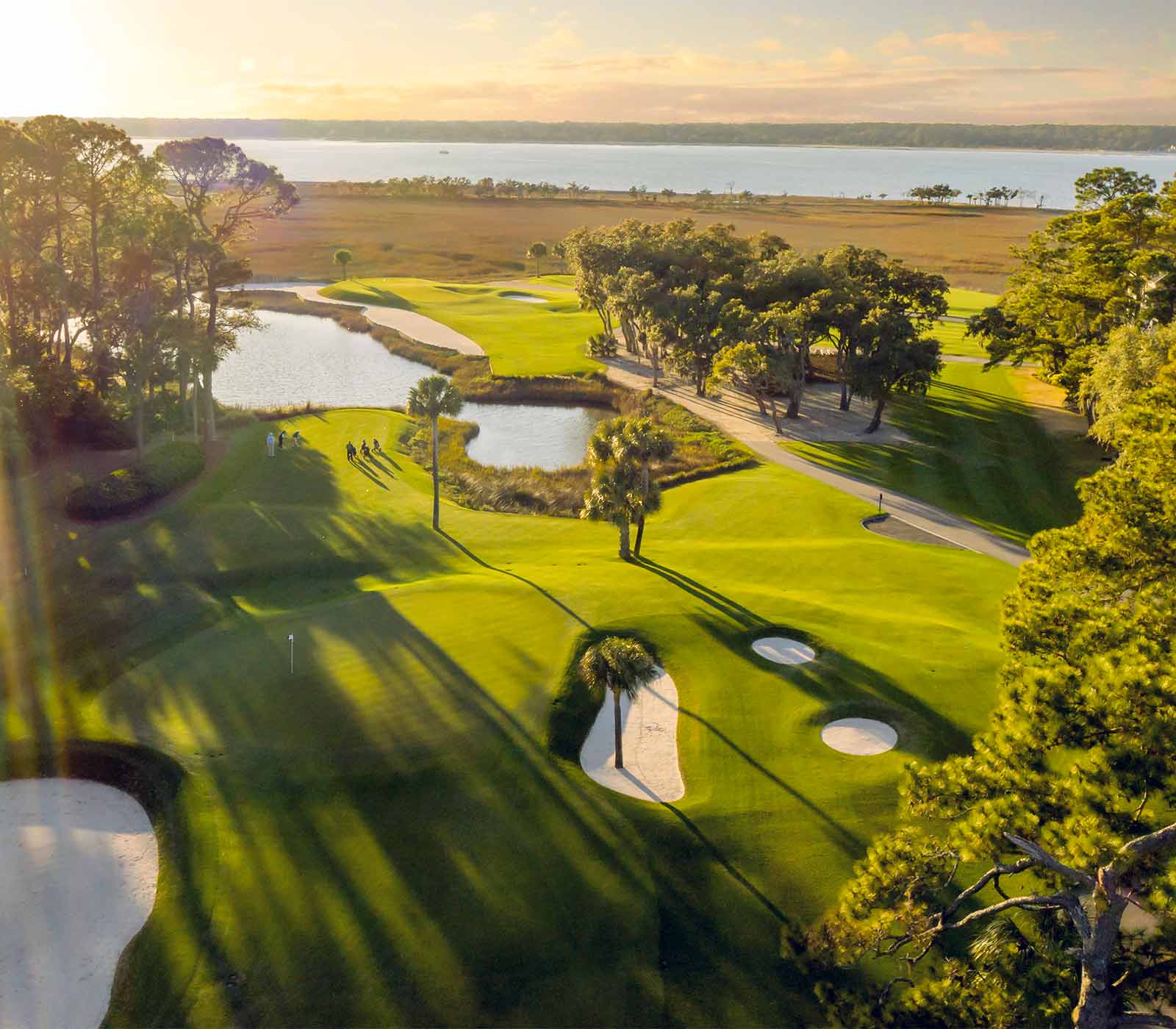
63. Harbour Town
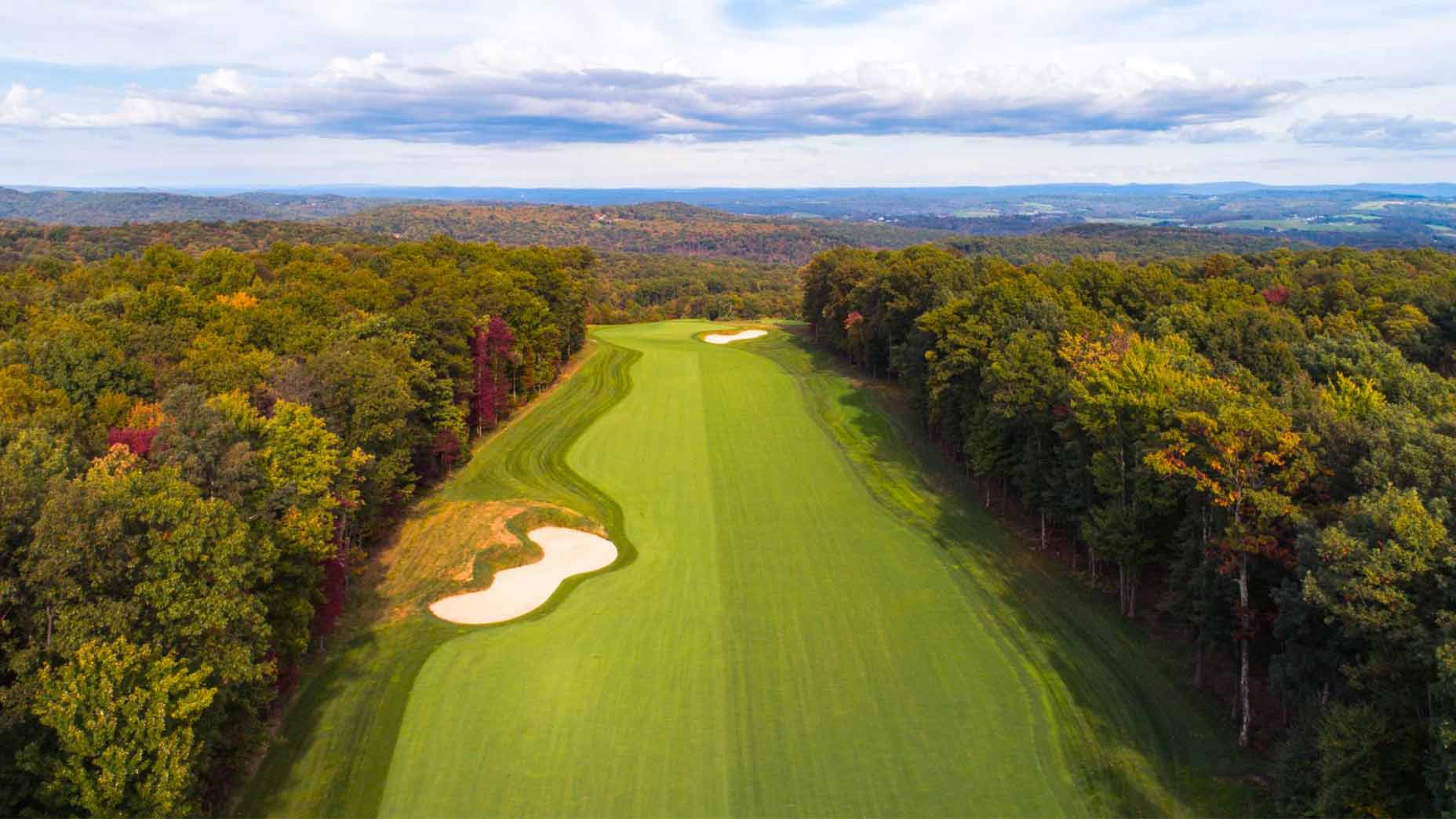
64. Pikewood National

65. Kittansett
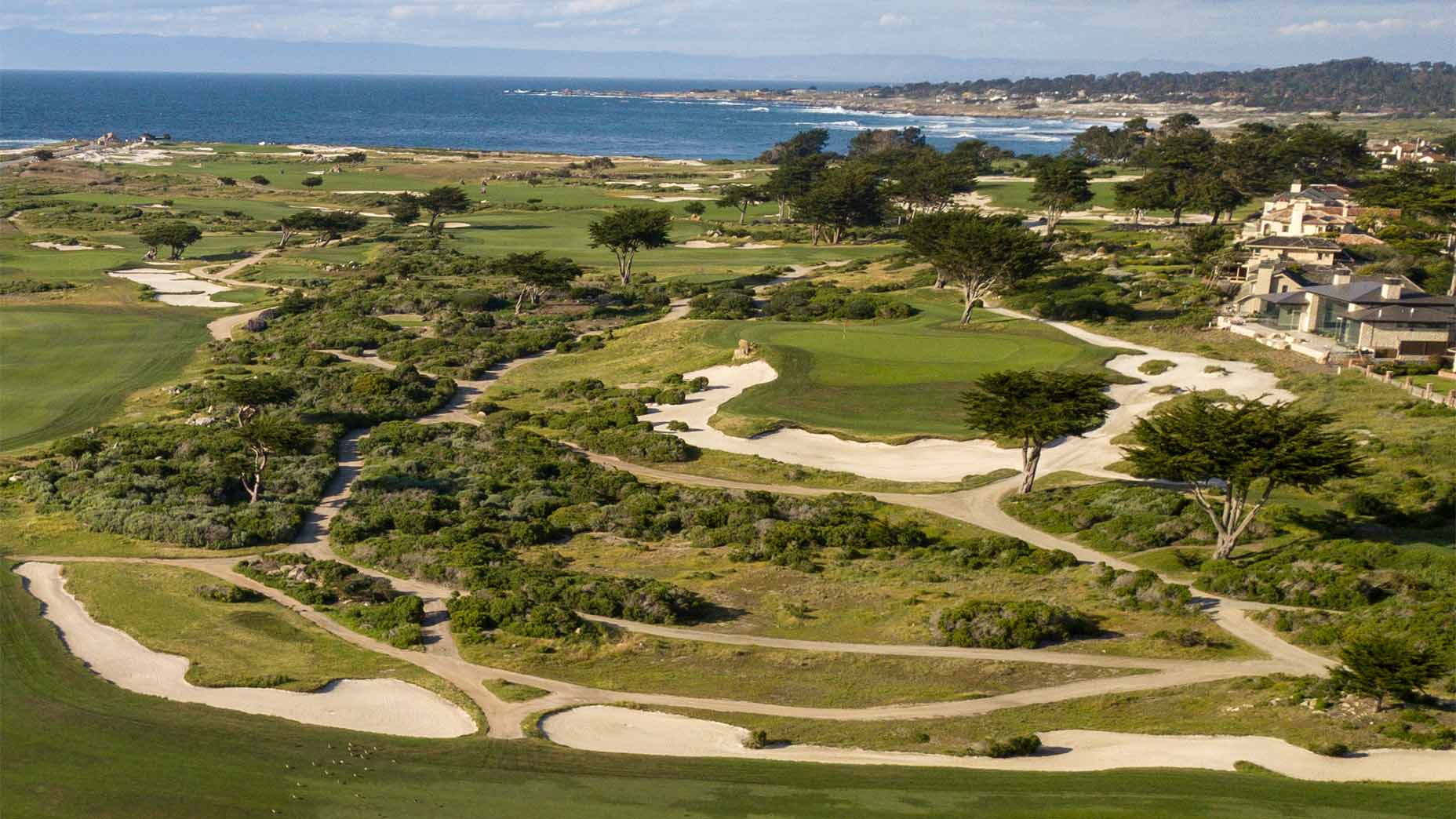
66. Monterey Peninsula (Shore)

67. Bel-Air
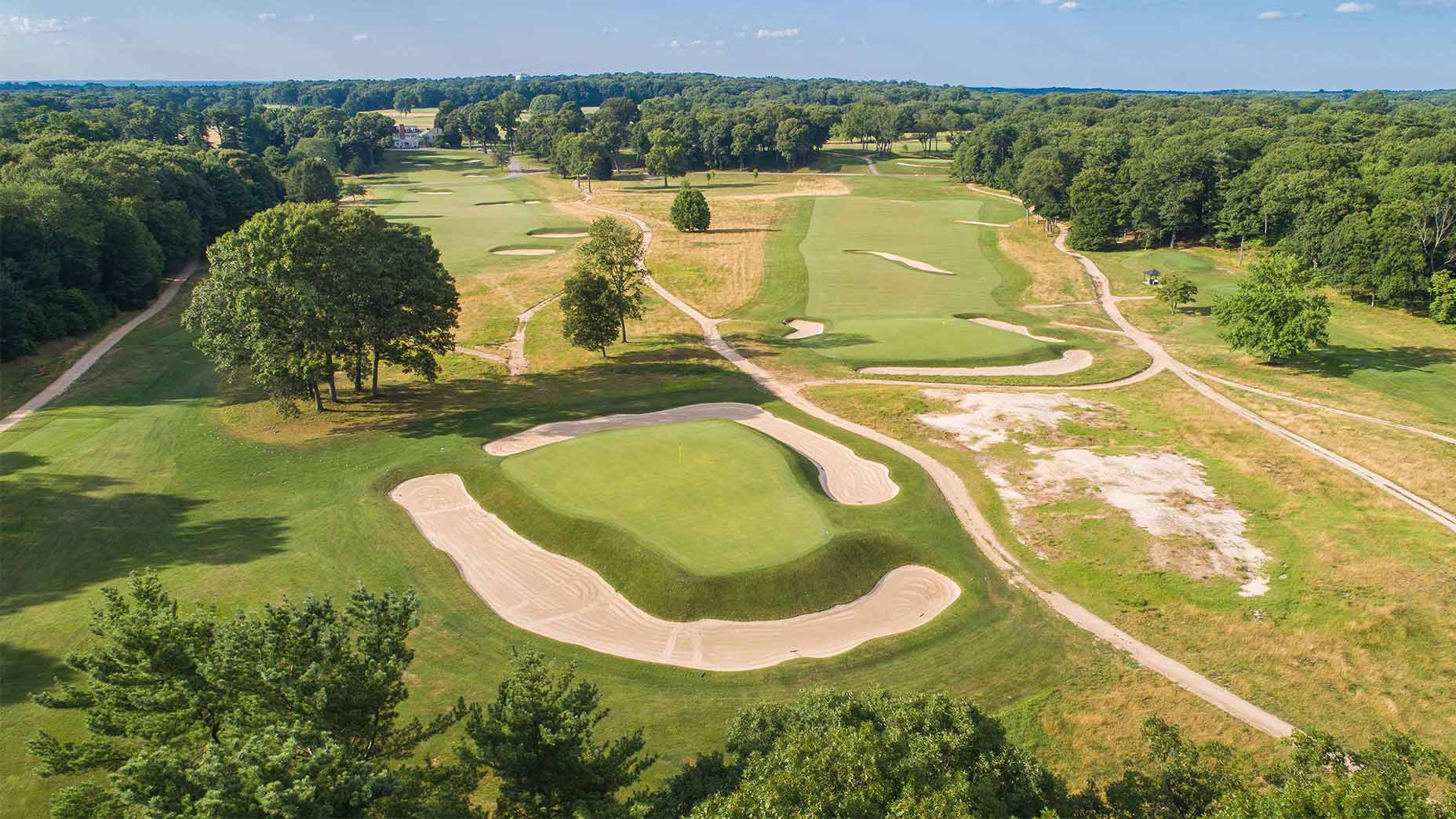
68. Piping Rock
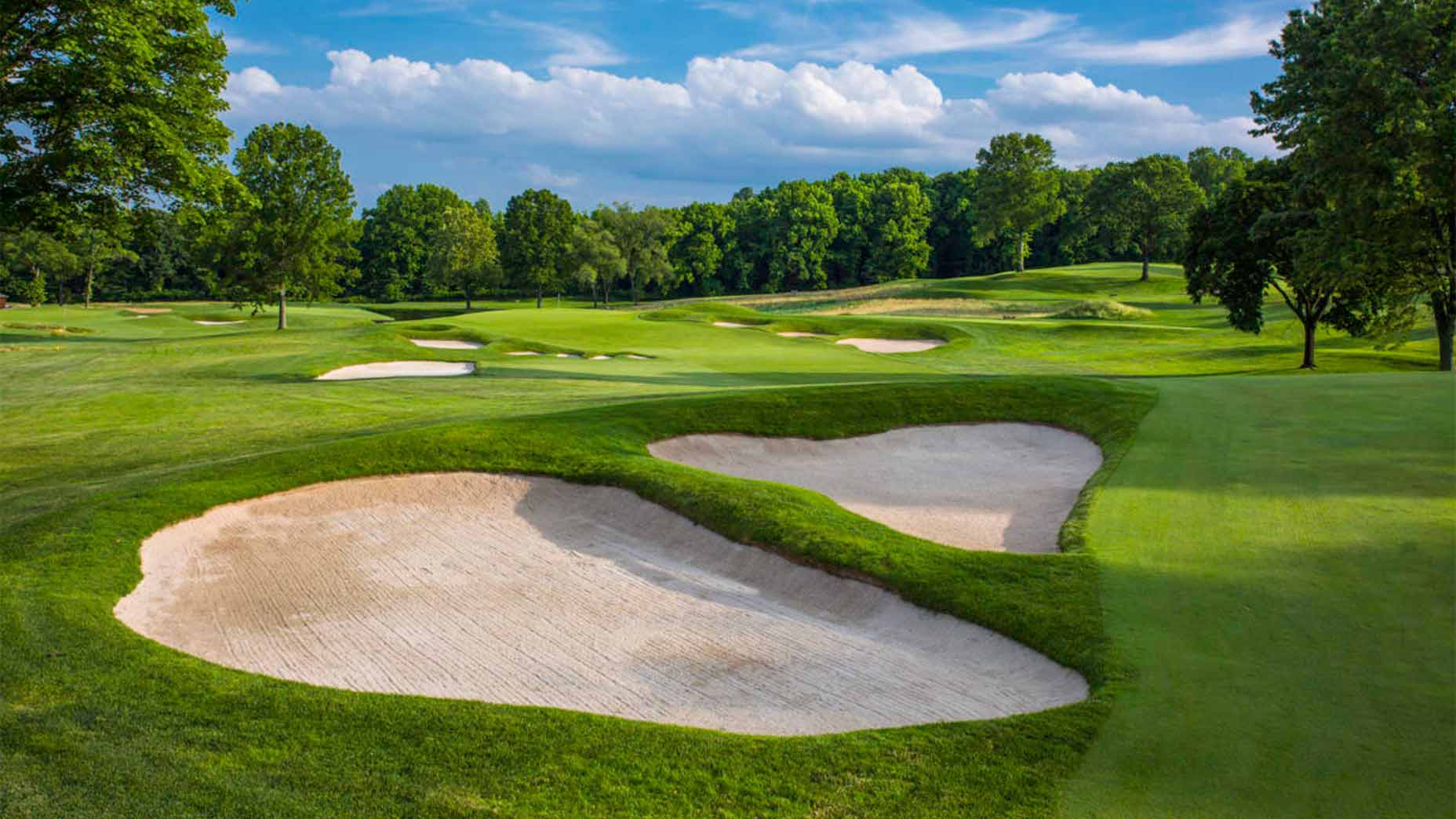
69. Plainfield
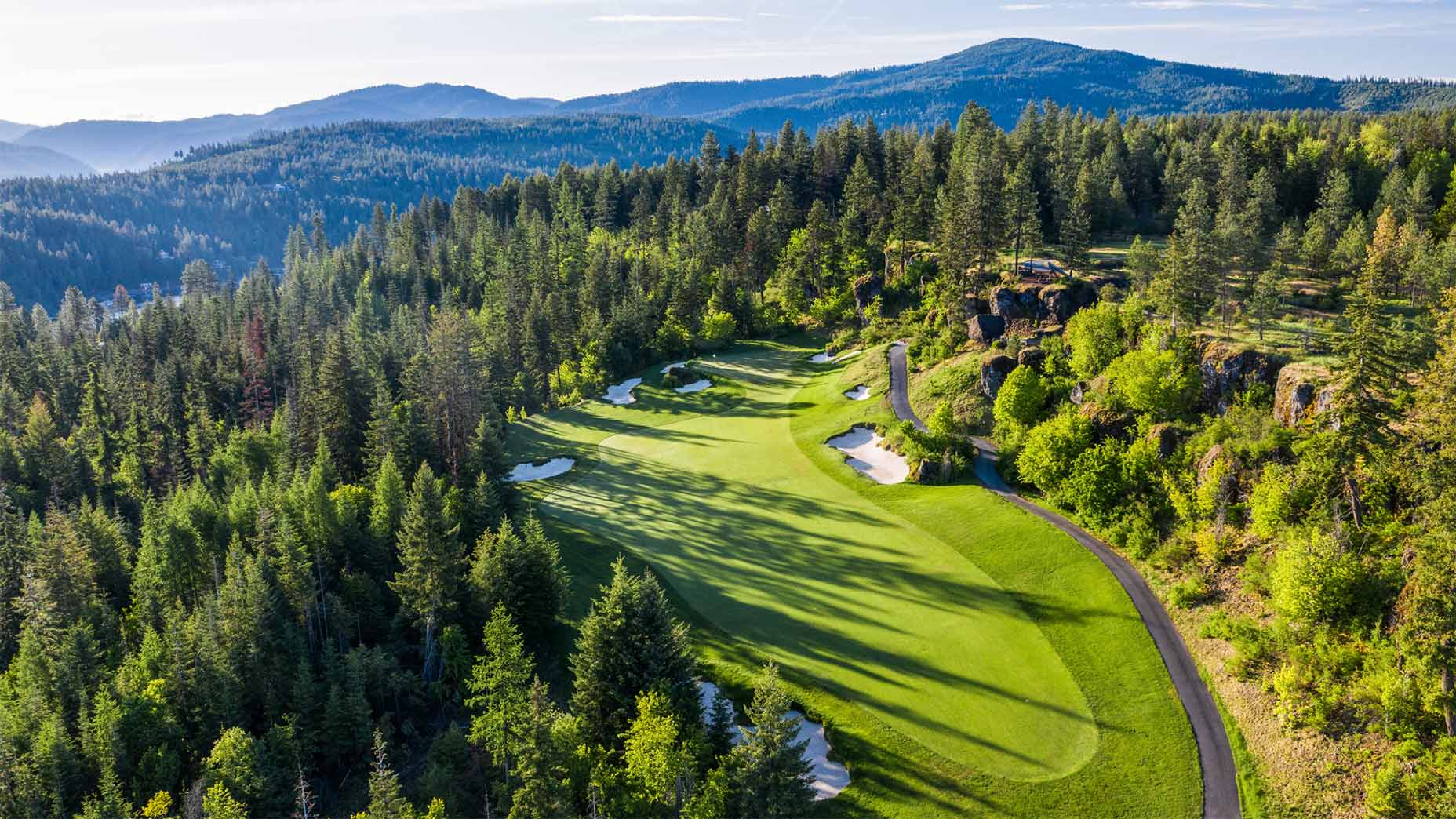
70. Gozzer Ranch
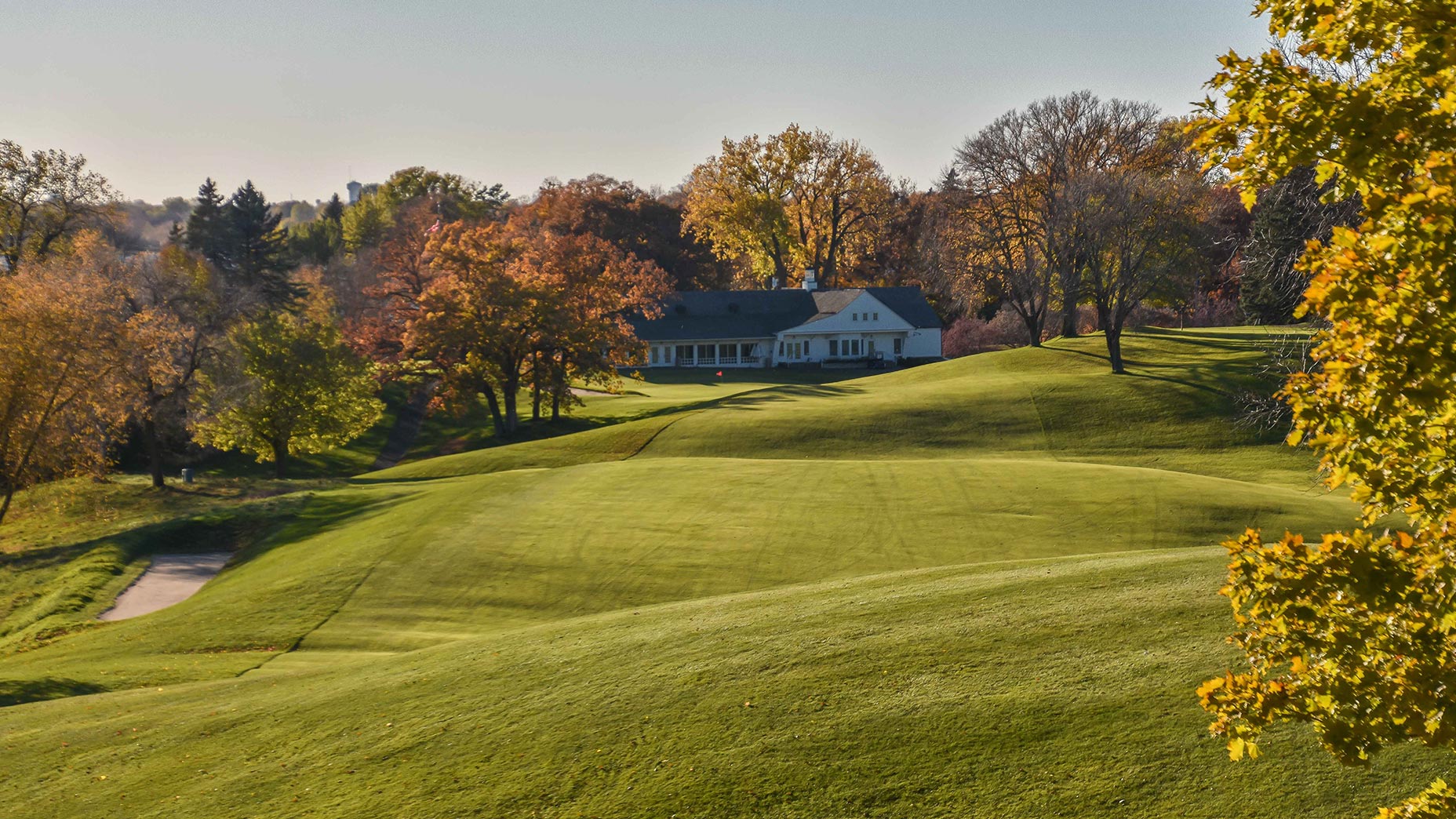
71. White Bear Yacht
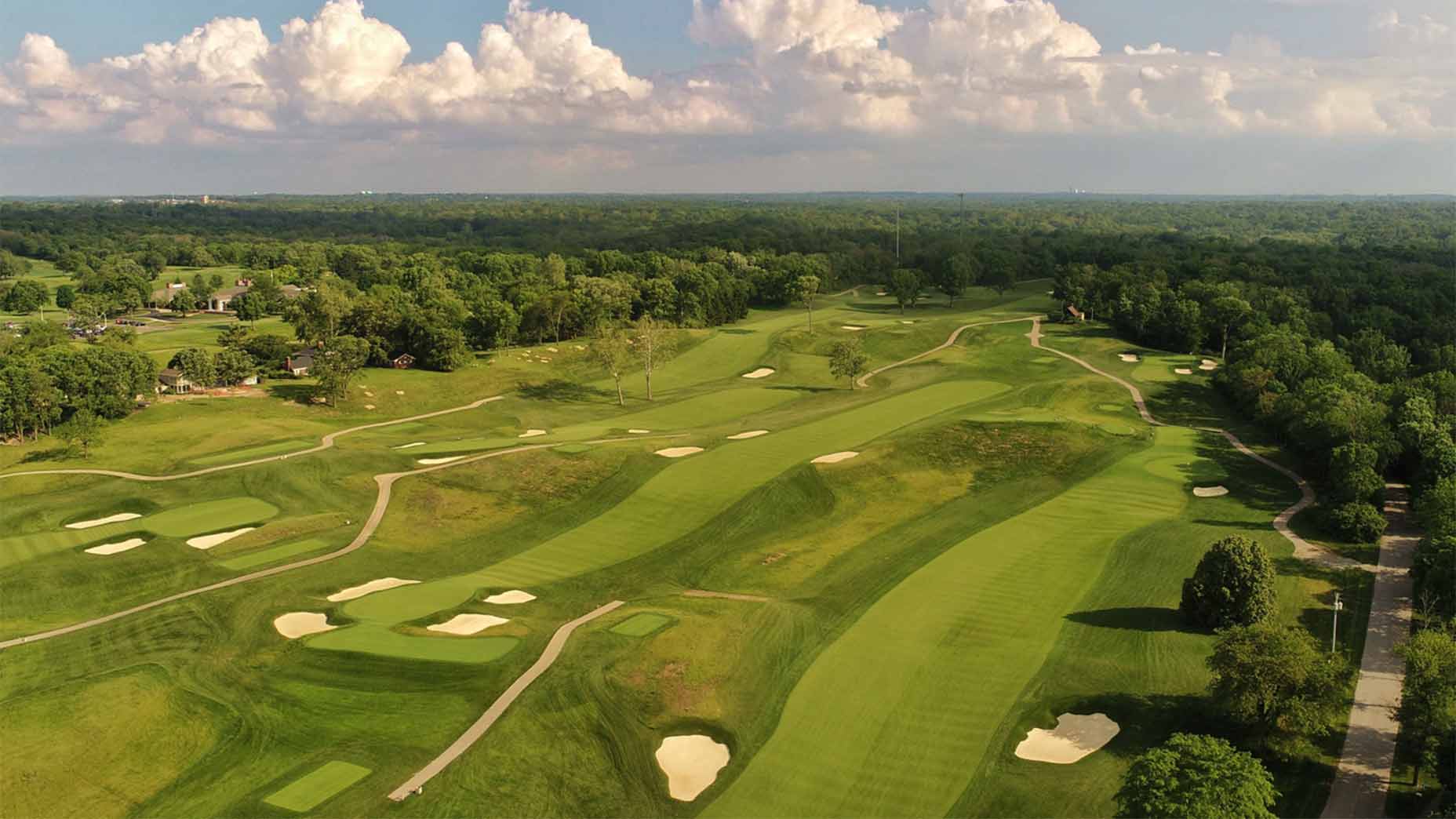
72. Moraine
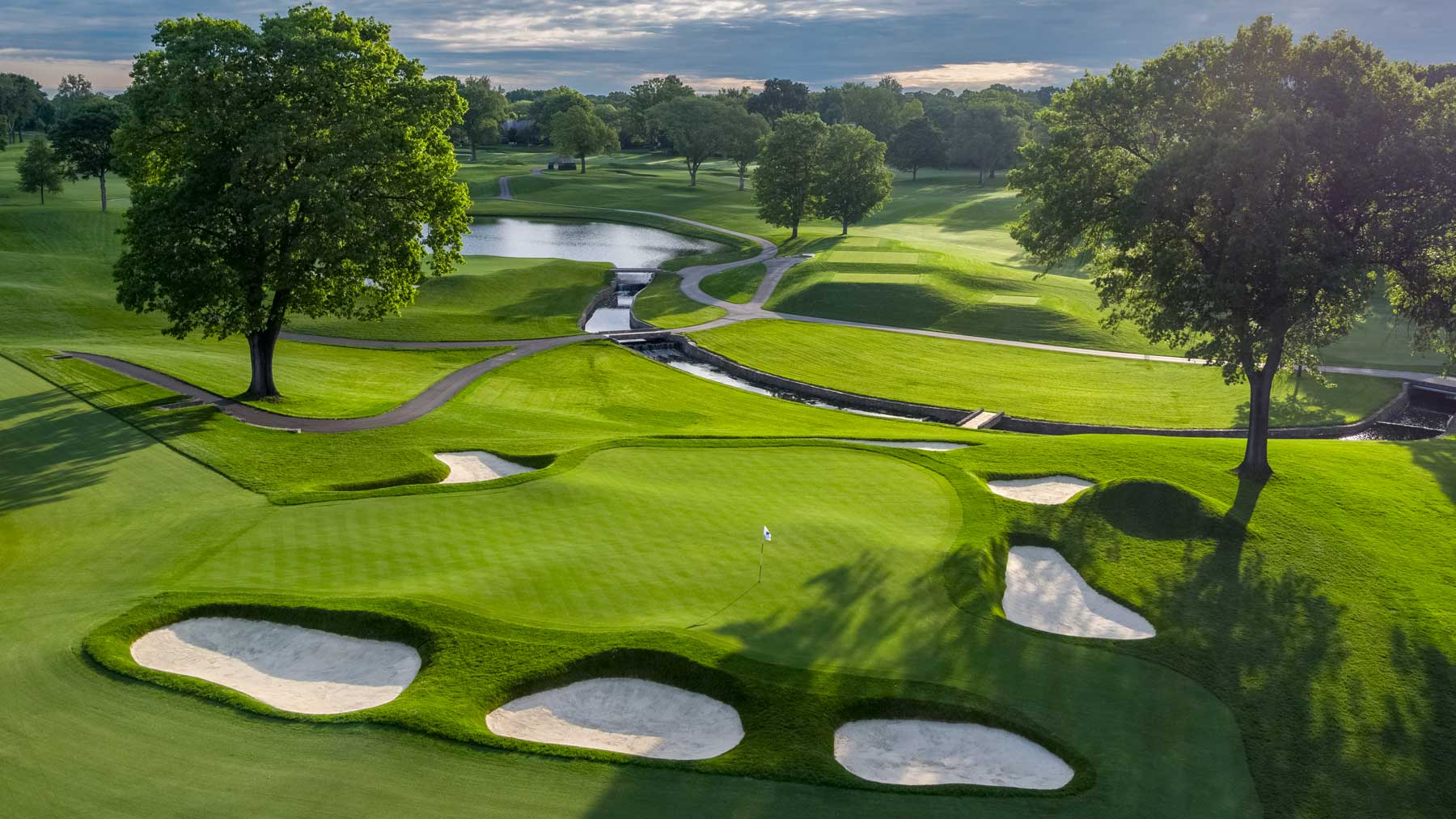
73. Scioto
This Donald Ross gem returns to the U.S. Top 100 after a multi-year absence, thanks to an Andrew Green restoration. By returning the 8th and 17th greens to their original locations, Green removed vestiges of a 1950s Dick Wilson redesign. Ross’s intimate routing across 110 acres of rolling parkland is a star feature and can be appreciated anew, thanks to much-needed tree removal. Green’s touch with rebuilding the greens and bunkers in classic Ross style completes a Golden Age picture. This was Jack Nicklaus’s boyhood course and ball-strikers will appreciate the deft shot-making required to reach certain hole locations on these challenging greens. (Photo: Evan Schiller)

74. Ridgewood (E/W)
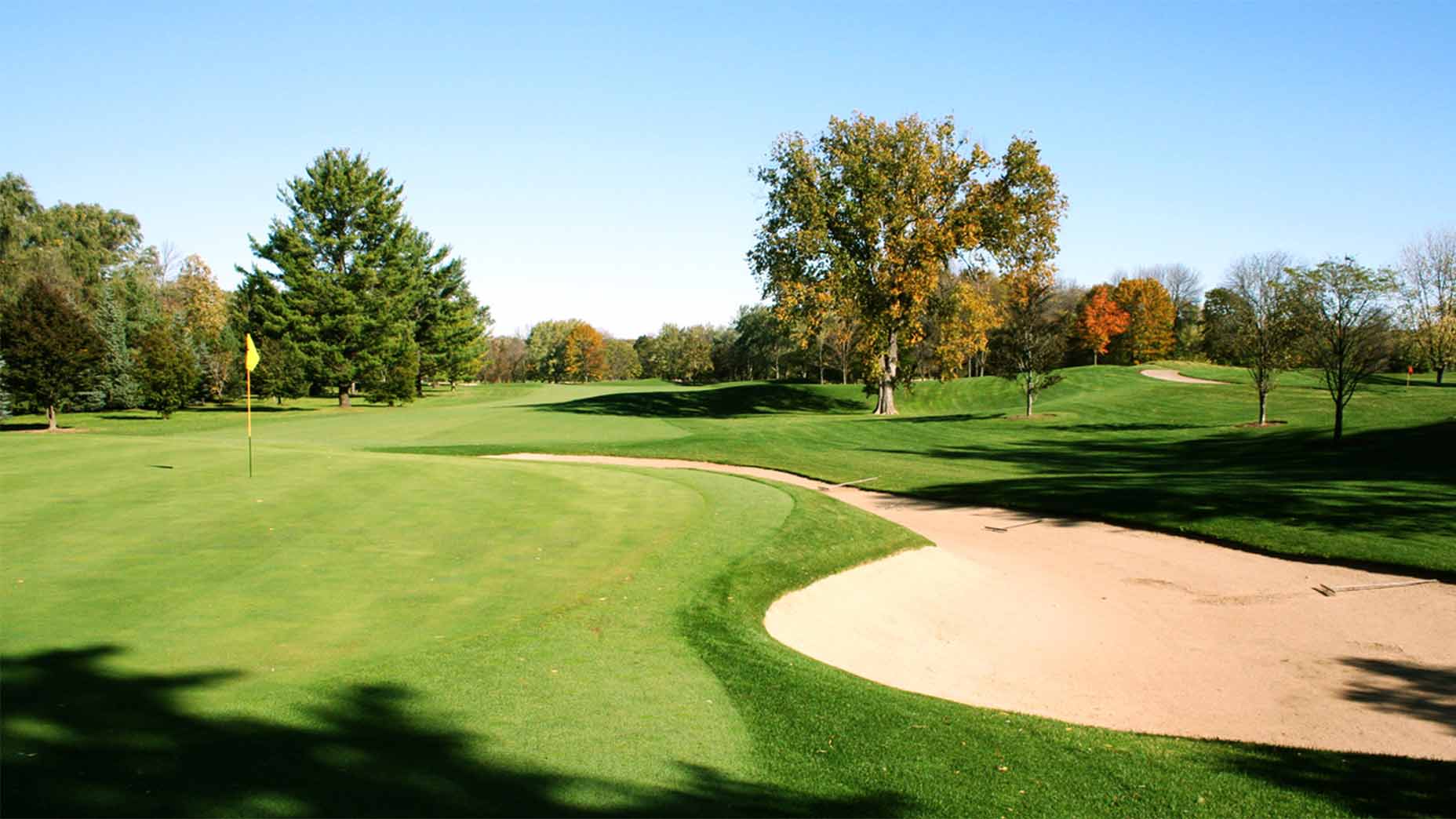
75. Milwaukee
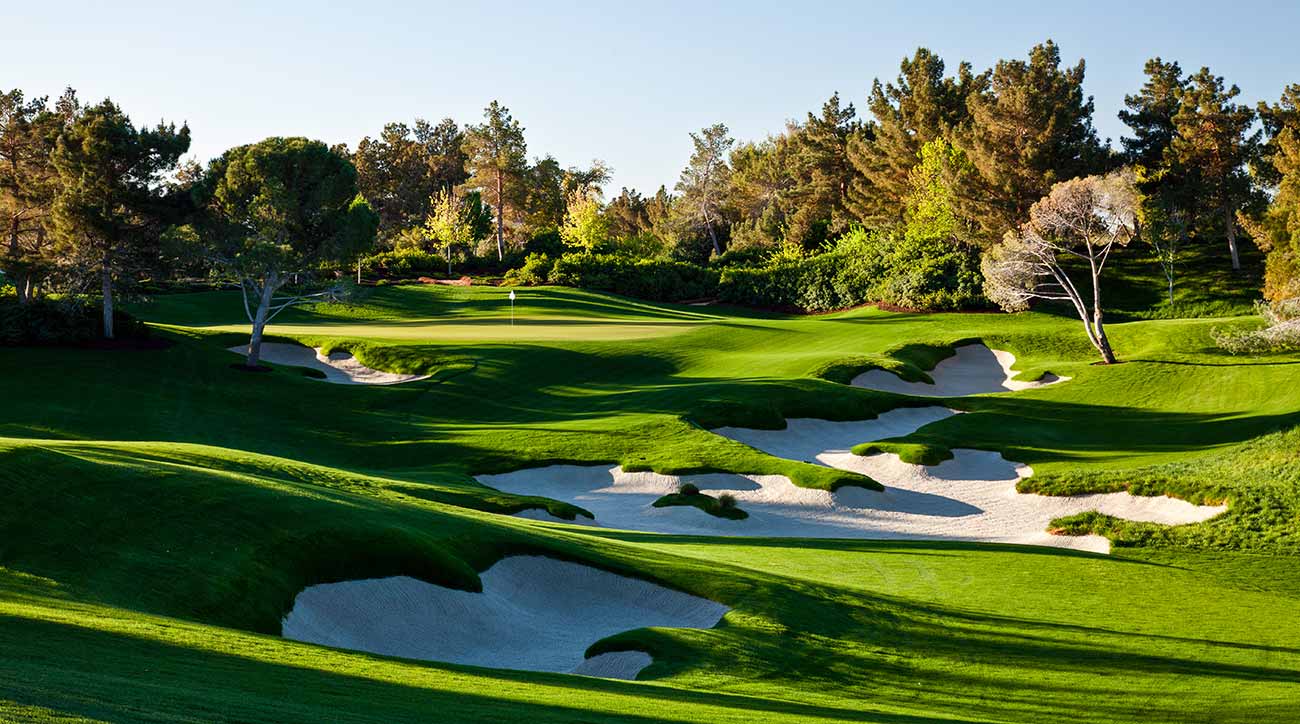
76. Shadow Creek

77. Old Macdonald
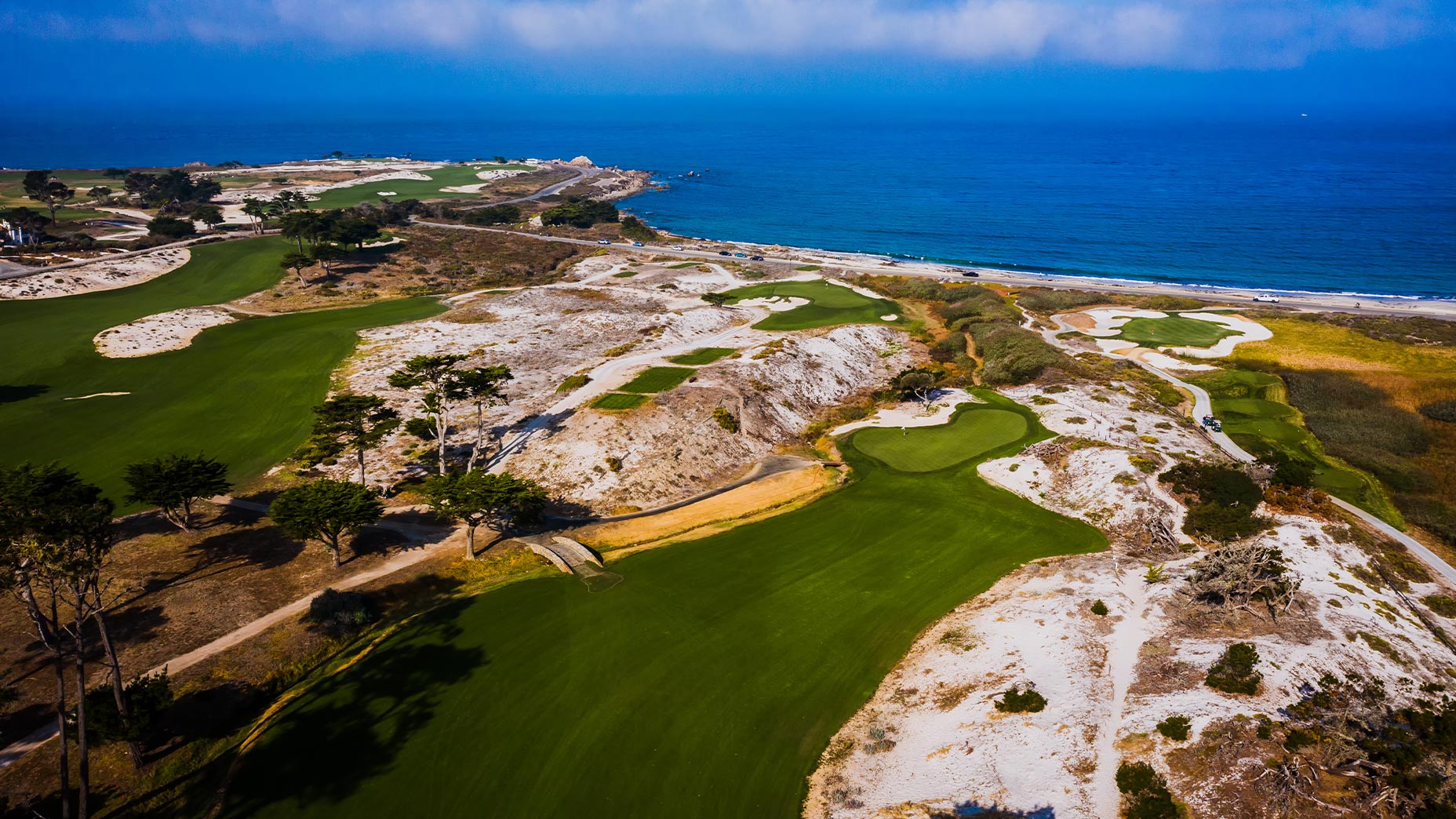
78. Monterey Peninsula (Dunes)
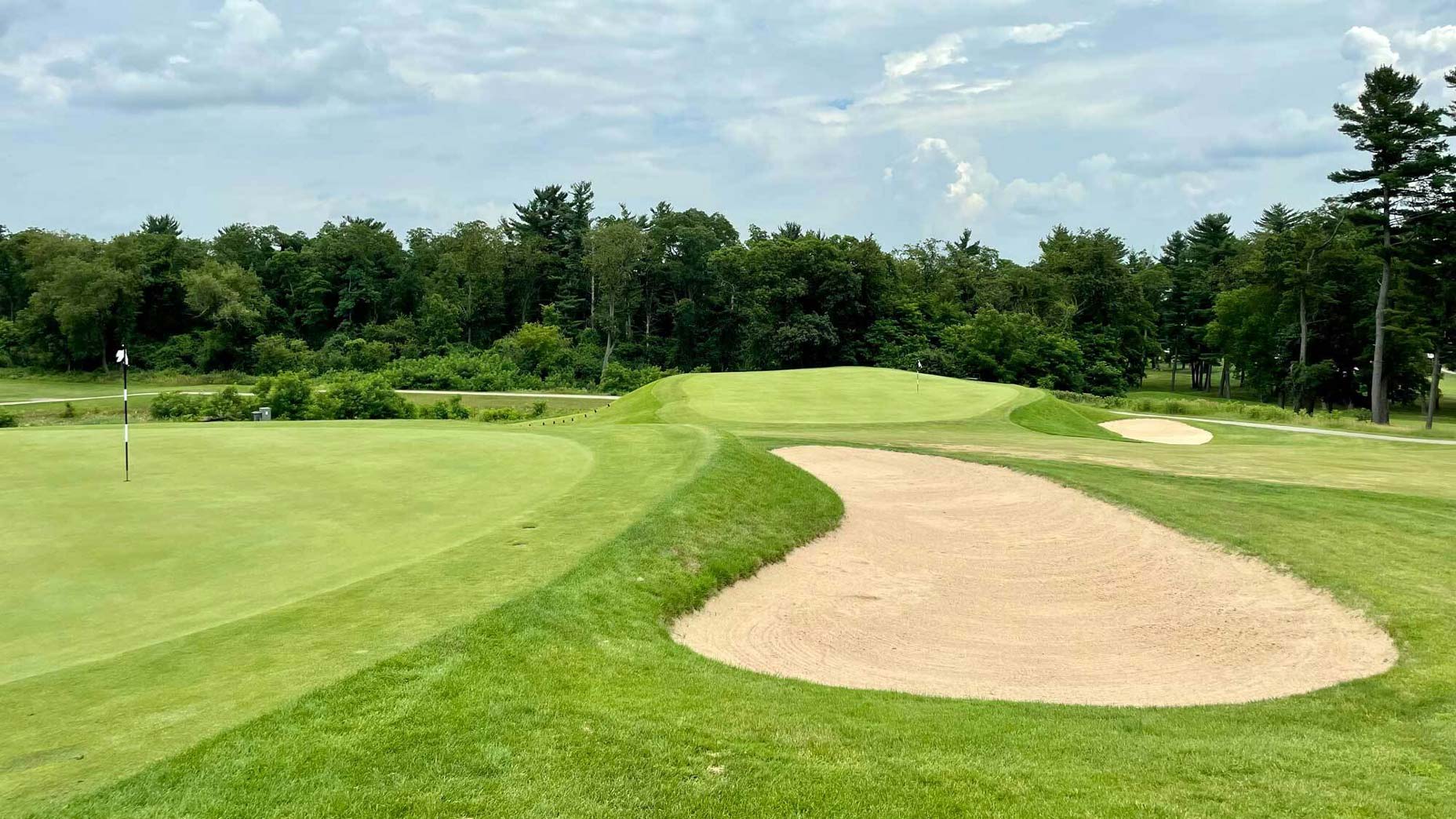
79. Lawsonia (Links)
Golden Age masters Langford & Moreau spent nearly $4 million in 2020 dollars to build this literally ground-breaking Wisconsin layout. Steam shovels shaped its most spectacular features, including some of the game's boldest greens. Rumor has it a boxcar was buried under the 7th green to create the dramatic 20-foot drop-off. The result of all this mechanical wizardry? Possibly the most underrated course in America and its greatest golfing value. We almost feel guilty finally sharing the secret. Max fee: $125. (Photo: Alan Bastable)
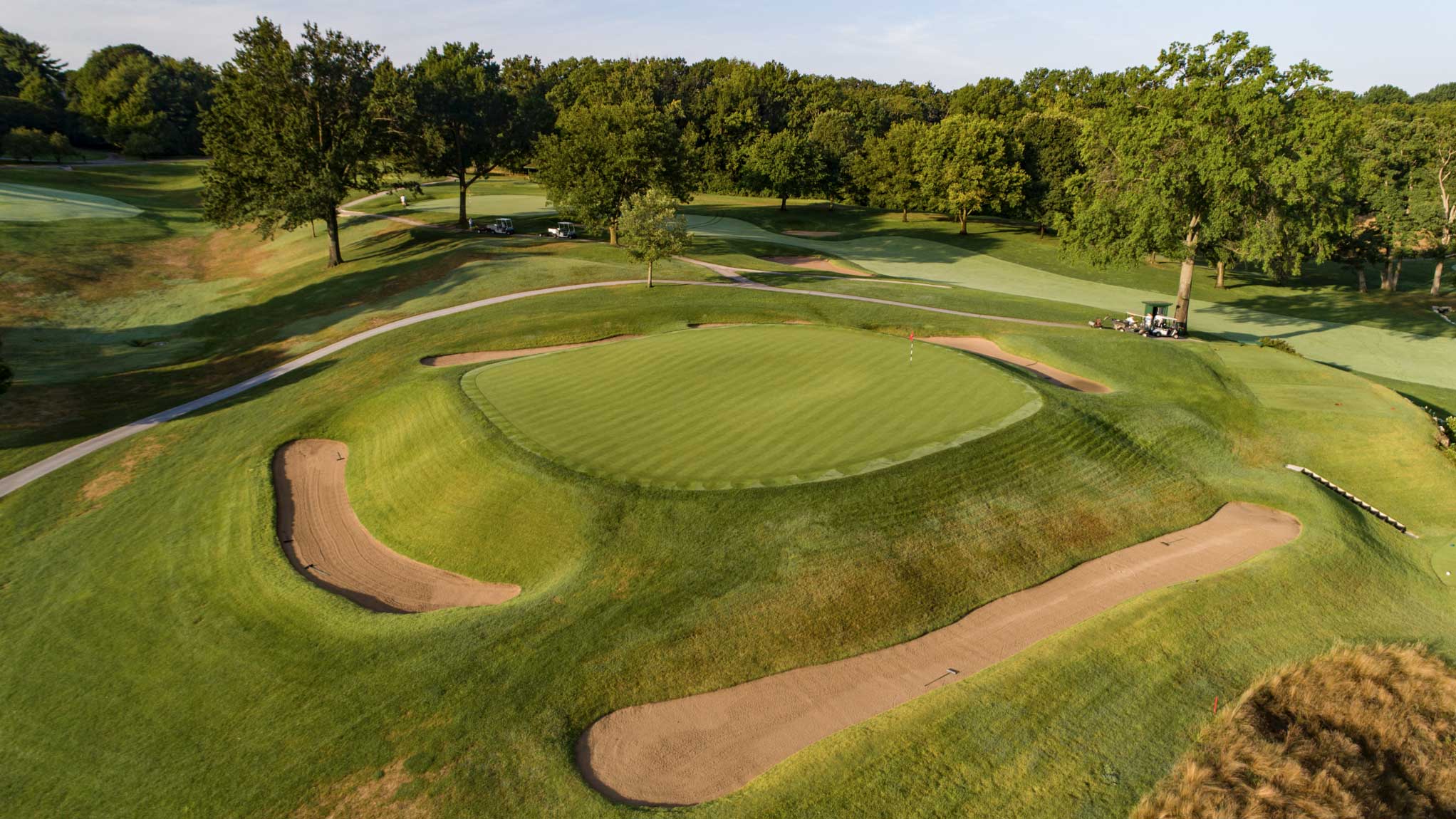
80. St. Louis
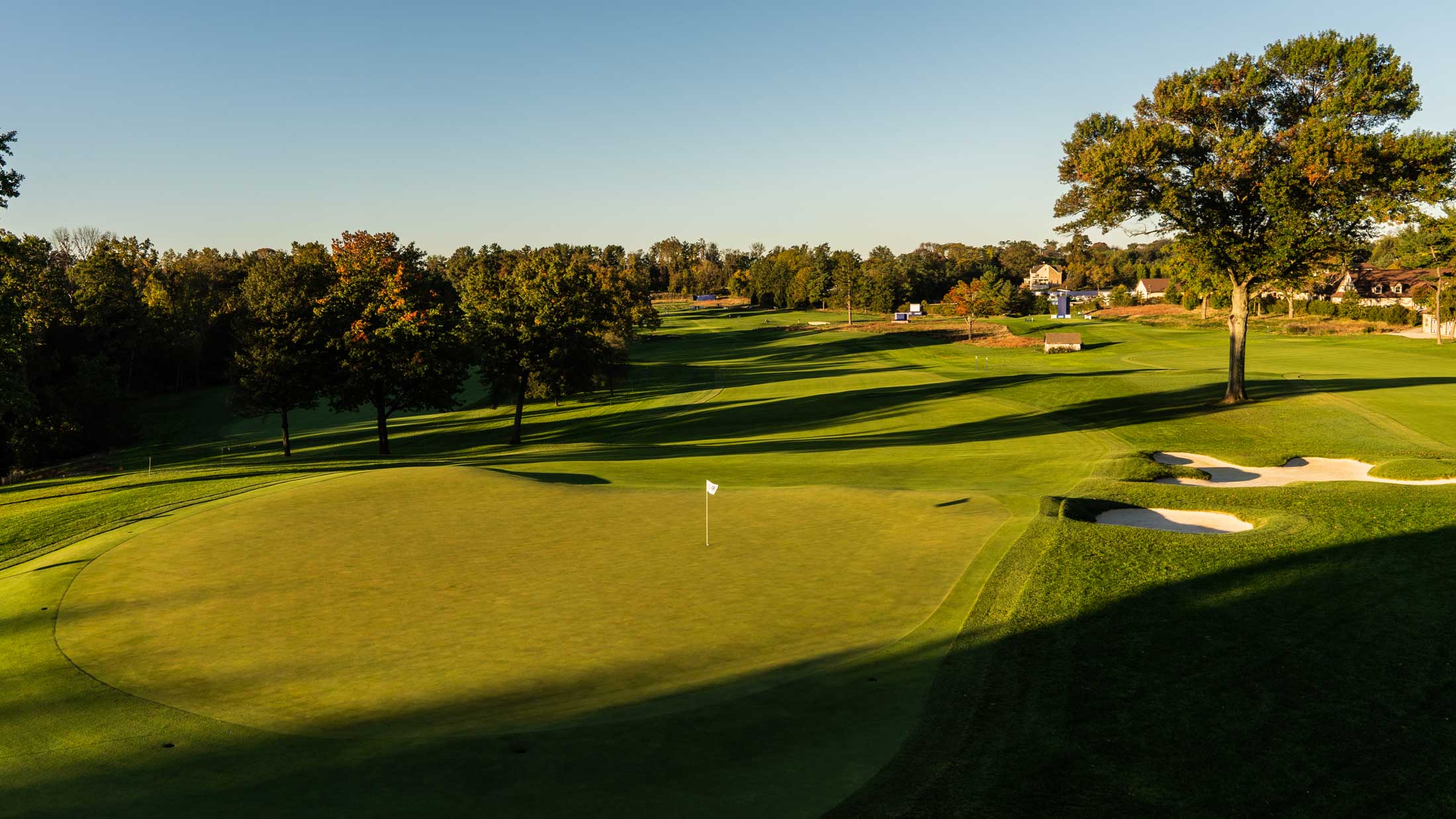
81. Aronimink
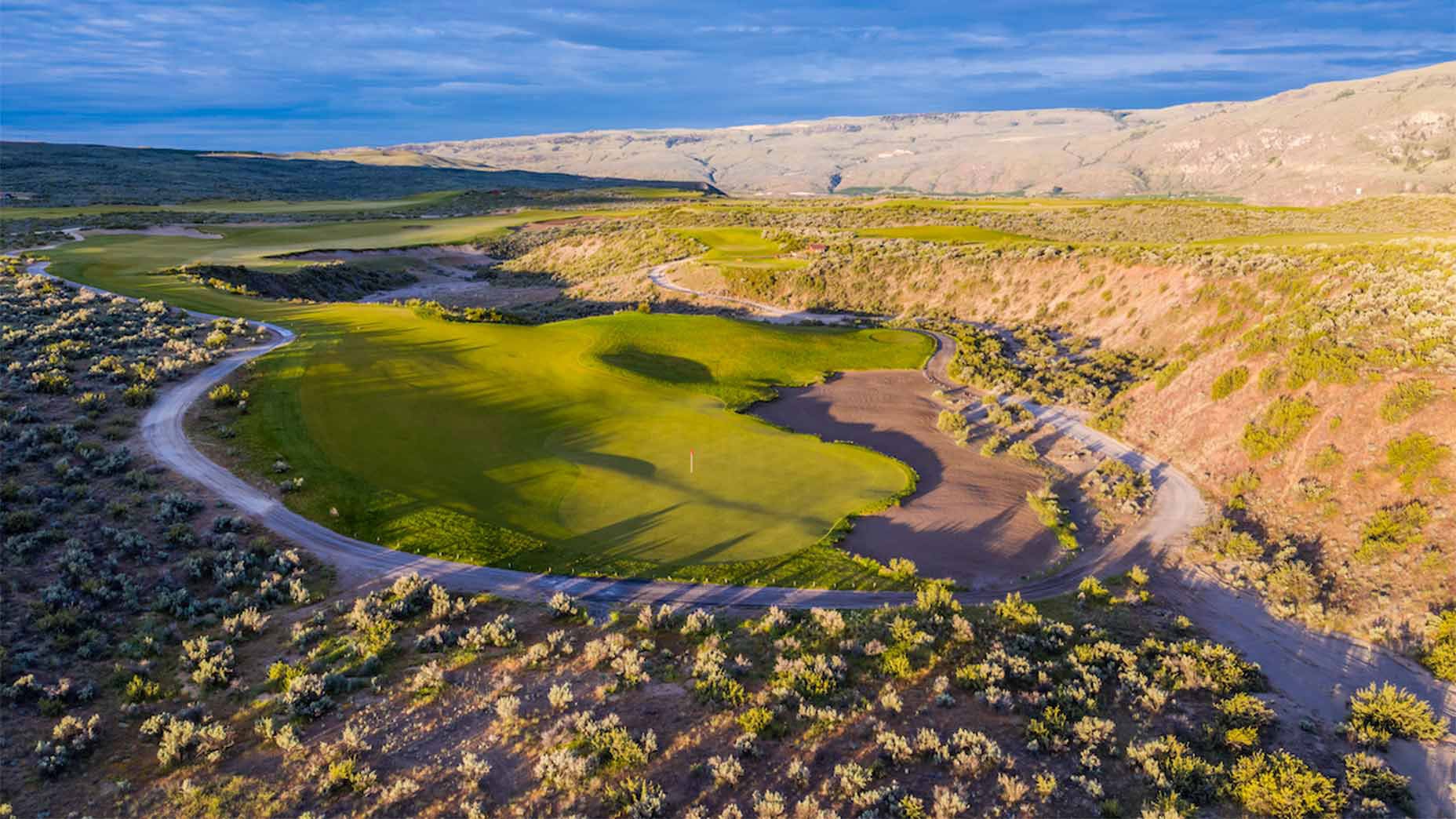
82. Gamble Sands

83. Glens Falls
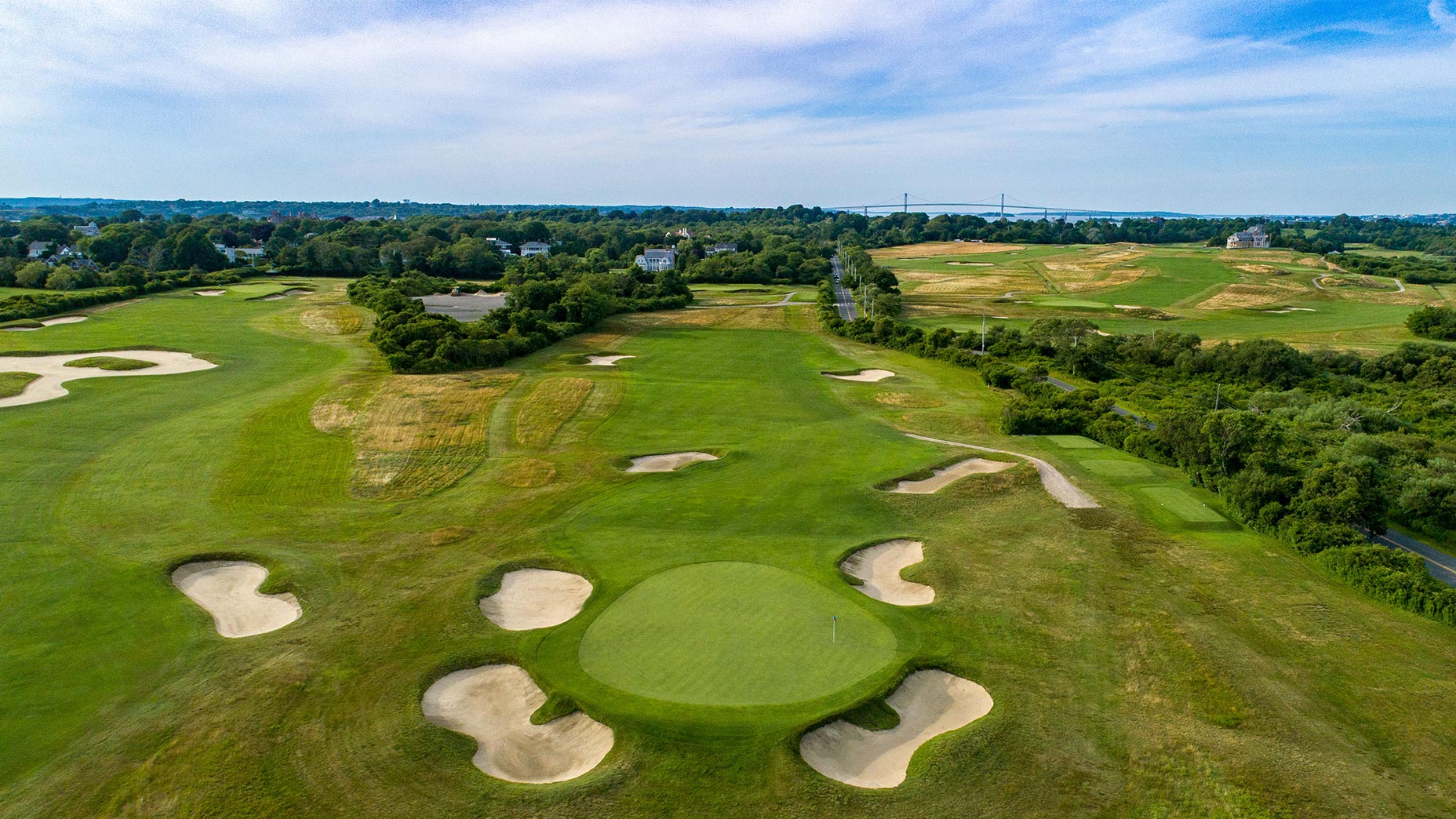
84. Newport

85. Congaree
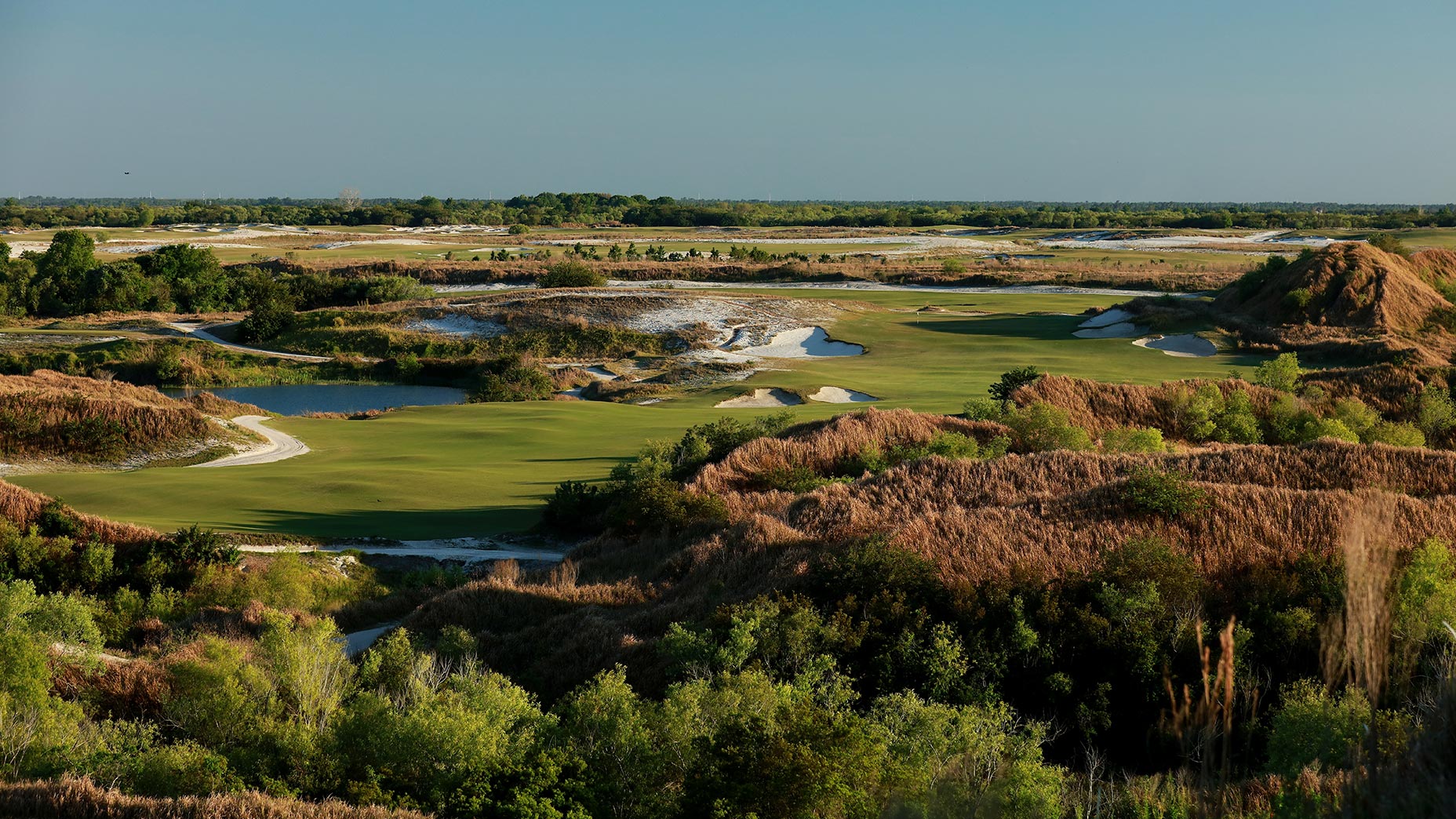
86. Streamsong (Red)

87. Baltimore (Five Farms East)

88. Cherry Hills

89. Hollywood

90. Kingsley
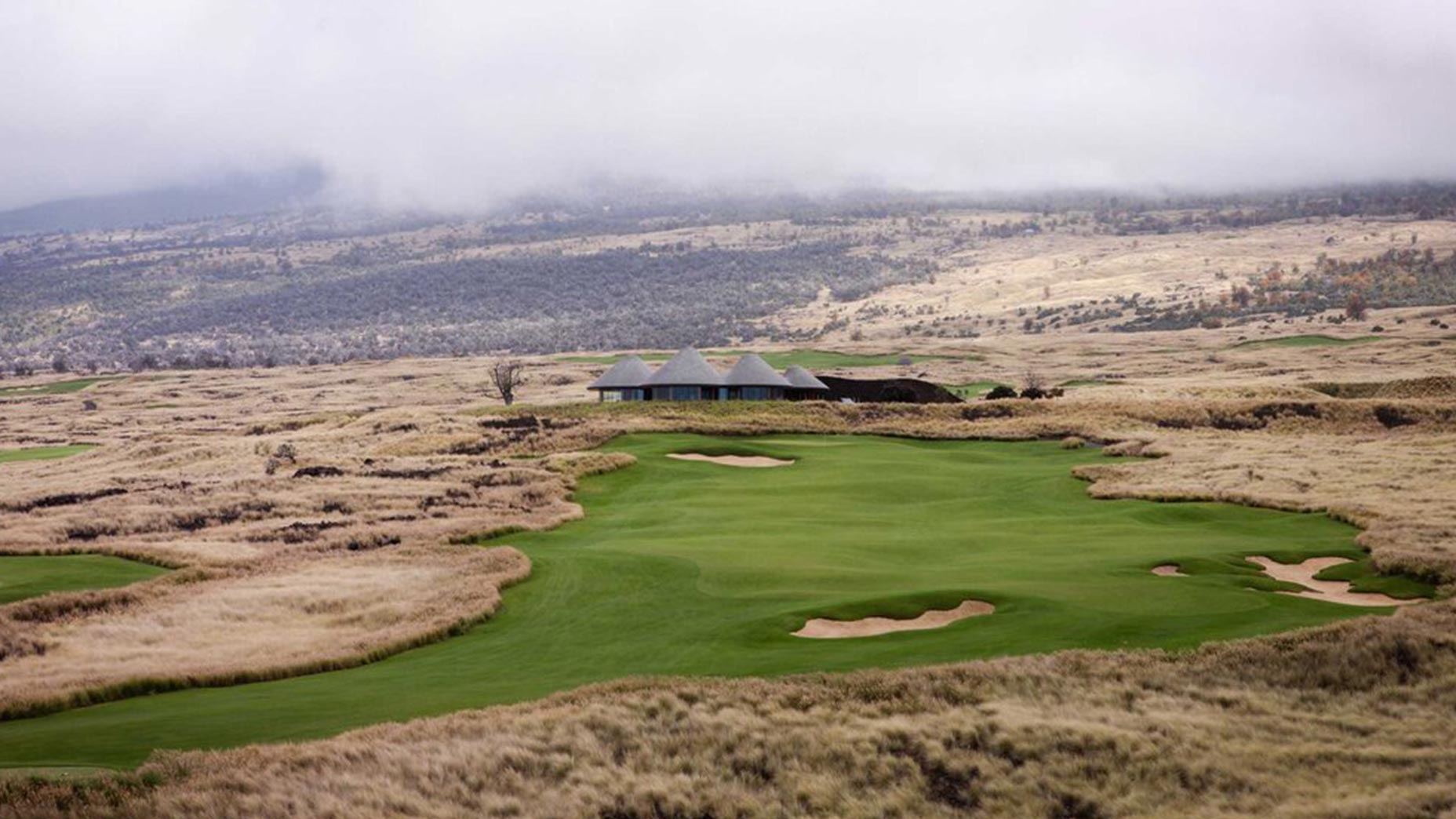
91. Nanea
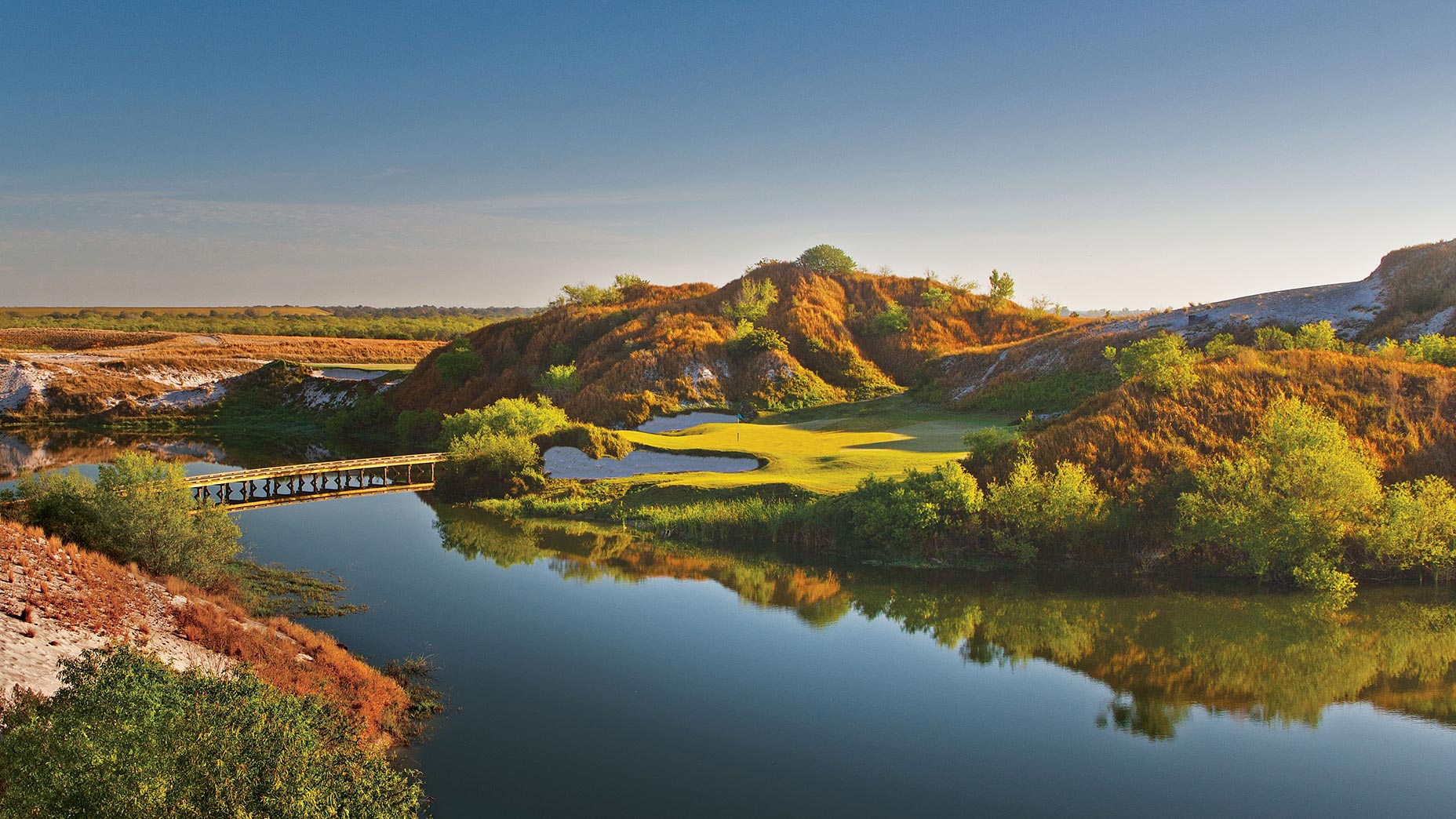
92. Streamsong (Blue)
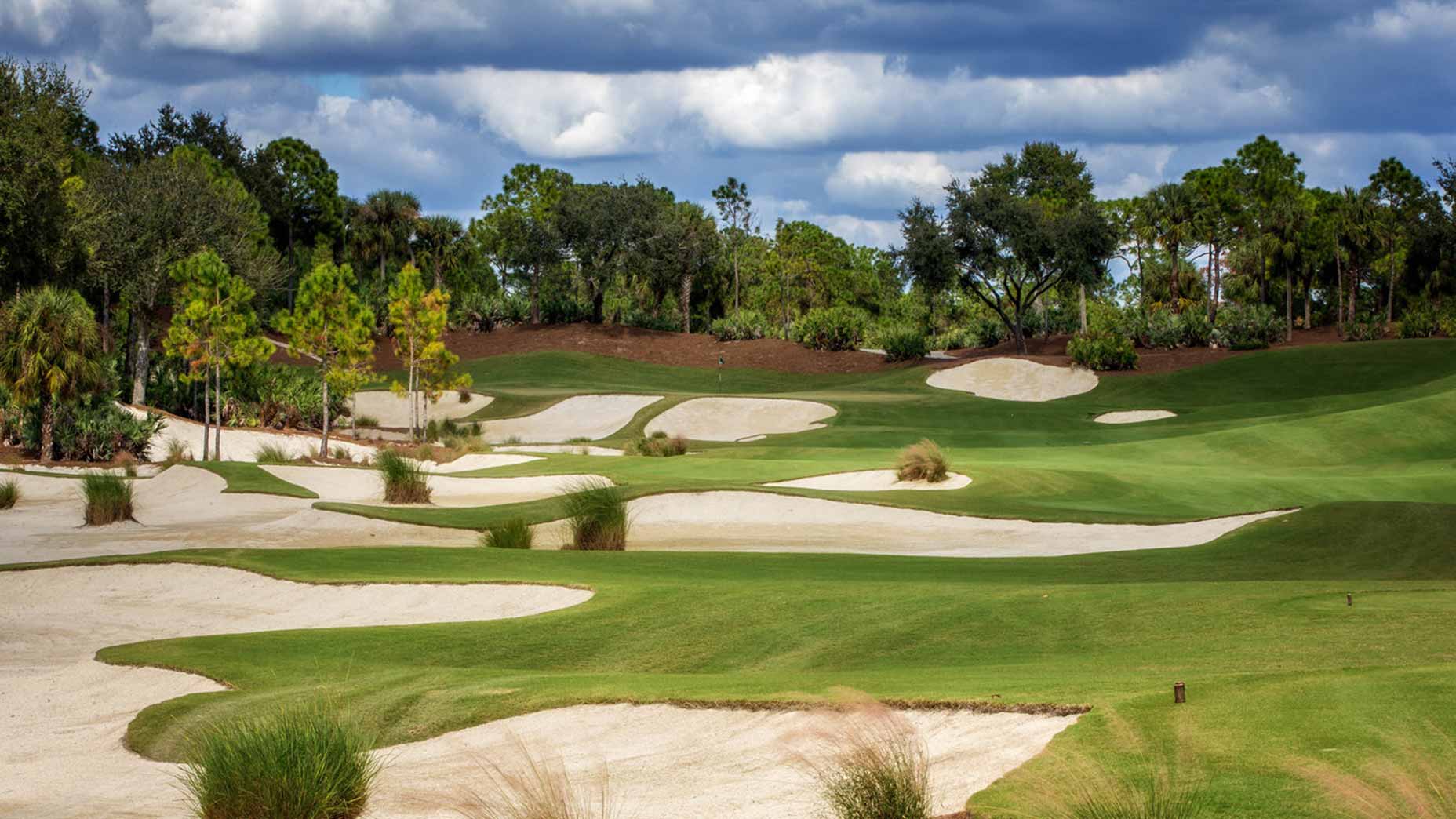
93. Calusa Pines

94. Prairie Club (Dunes)
Co-architect Tom Lehman set out to build a walkable course very much in harmony with nature. He and partner Chris Brands more than succeeded, turning this former cattle ranch into an epic homage to links golf. Carved out of rolling sand hills near the Snake River, the Dunes Course has it all — sweeping vistas, rolling fairways, enormous bunkers and imaginative green complexes. A taste of Scotland in the middle of Nebraska, this is Lehman’s second major and it features some of the widest fairways on our list — which are offset by some of the wildest greens. Max fee: $132.50, hosted guest; $199.50, public. (Photo: Brian Oar)

95. Davenport
Colt & Alison is a legendary name in golf-course design but most golfers don’t realize that Harry Colt never returned to North America after 1914. Therefore, many Colt & Alison courses in the U.S. actually are solo Alison designs, like this one, which opened in 1924. Similar to Milwaukee Country Club and Kirtland outside of Cleveland, this river valley property was blessed with a stream (an off-shoot of the Mississippi River) that runs through it. Alison took maximum advantage of the water feature at such holes as the par-5 9th, where the stream runs the length of the hole; the dramatic one-shot 10th, which that plays diagonally across the river valley; and the famous downhill 16th, at which you cross the stream from the elevated tee. Though set on higher ground, the course’s best hole might be the 440-yard 7th, a showpiece in how to drape a hole over interesting landforms. (Photo: Patrick Koenig)

96. Brookside
This Donald Ross design, which is making its Top 100 debut, epitomizes the virtues of parkland golf with rolling topography, sweeping views and a stream that bisects the property. The design lacks for nothing and has reached peak form after years of consulting with Brian Silva. Ross’s use of the stream at holes 4, 5 and 11 is especially noteworthy but the real attention-grabber is Brookside’s set of greens, led by those at the 8th and 12th. Pinpoint accuracy is required into all of the targets — a few observers have groused that the steeply pitched back-to-front surfaces at 14 and 16 lack a sufficient number of hole locations for today’s green speeds — but if you stay in position (i.e., below the hole!), you are guaranteed to be enchanted by this Ross gem. (Photo: Andy Johnson/The Fried Egg)

97. Sheep Ranch
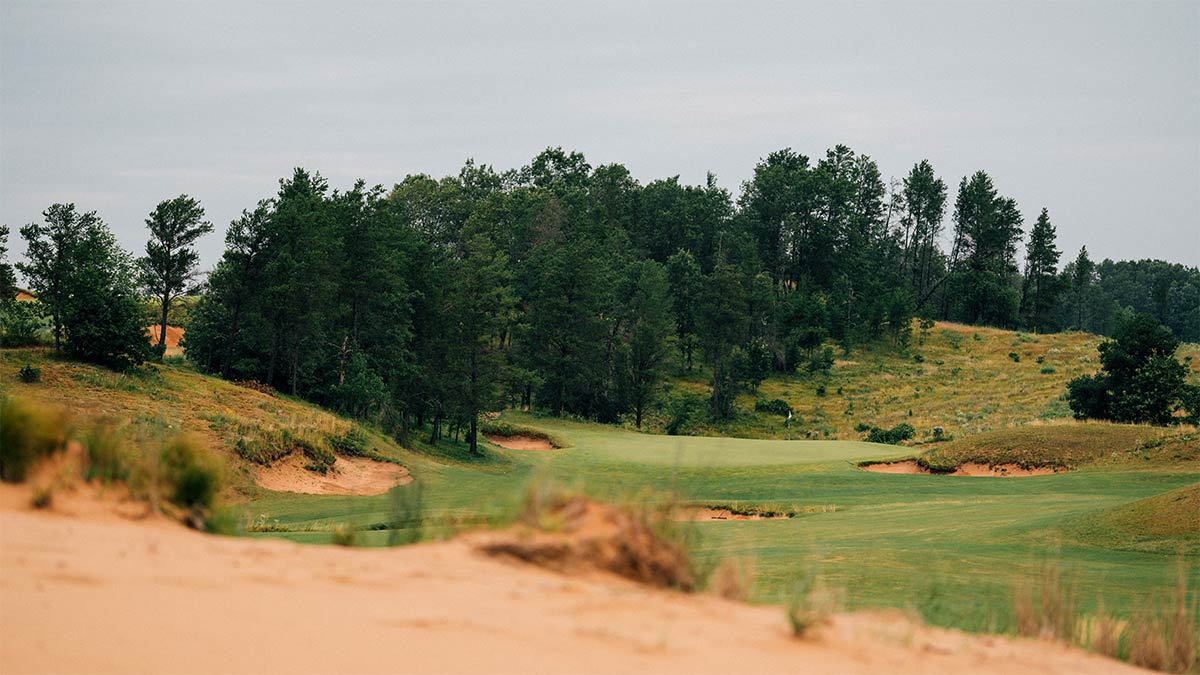
98. Sand Valley (Sand Valley)
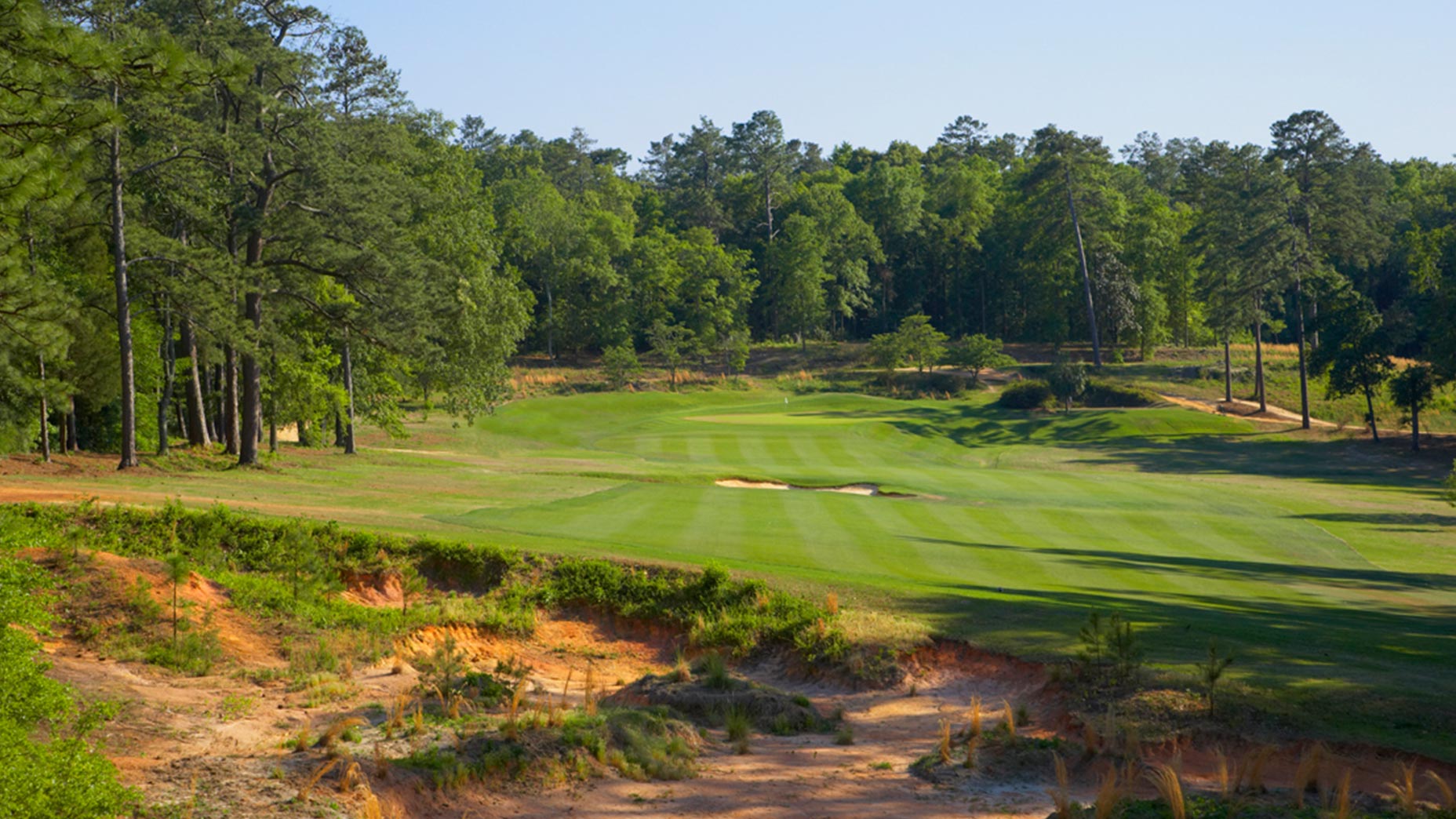
99. Palmetto




